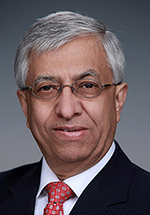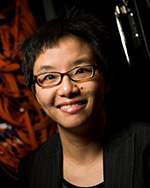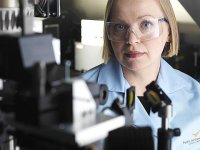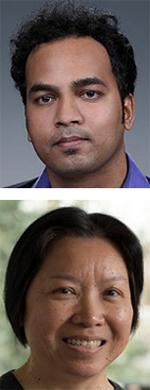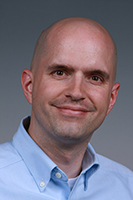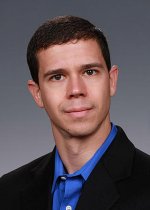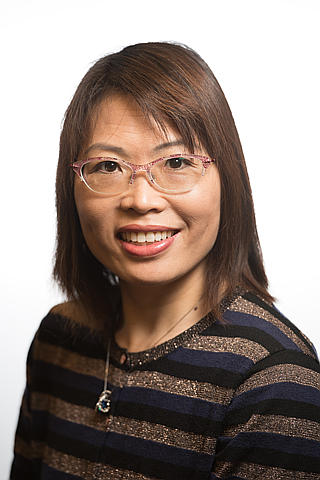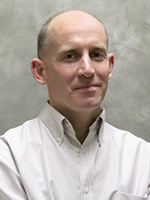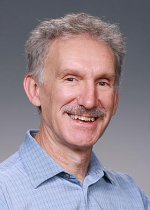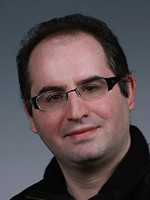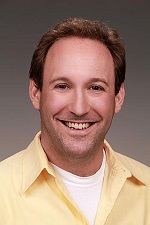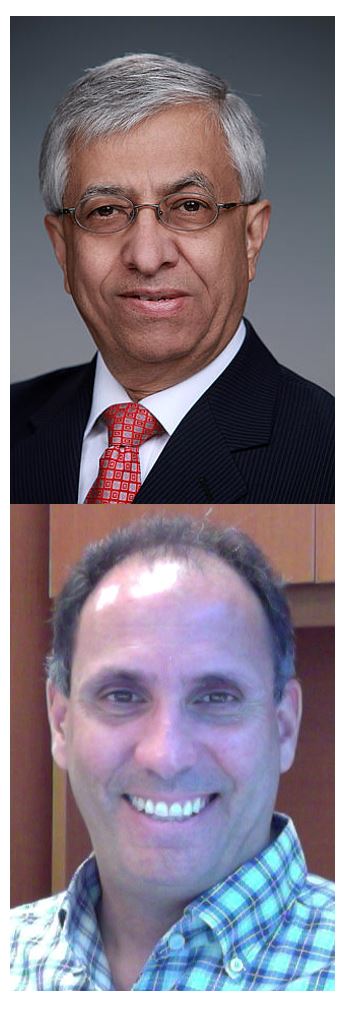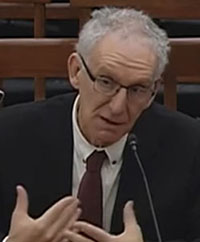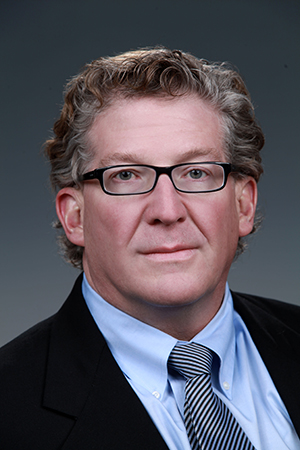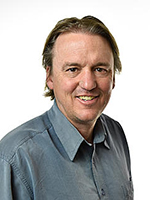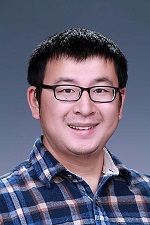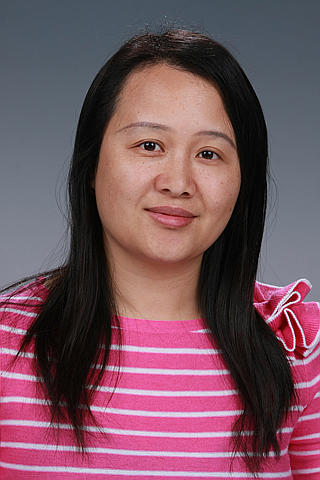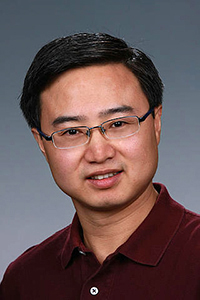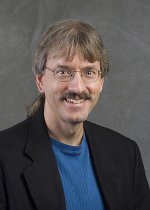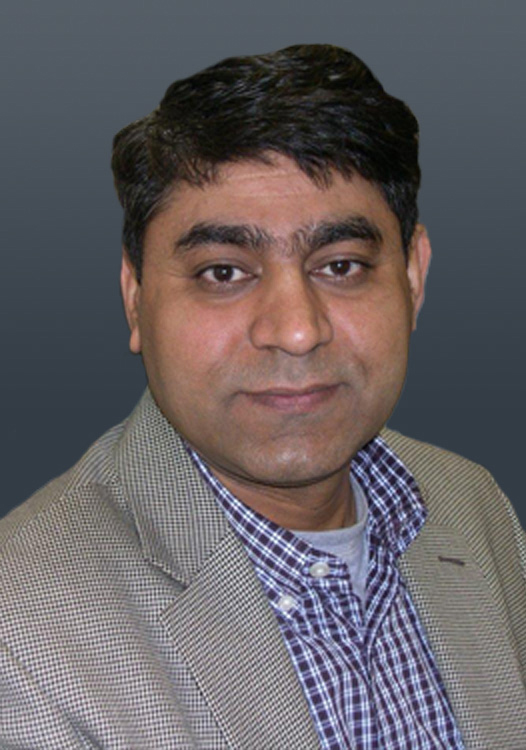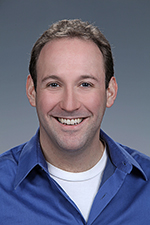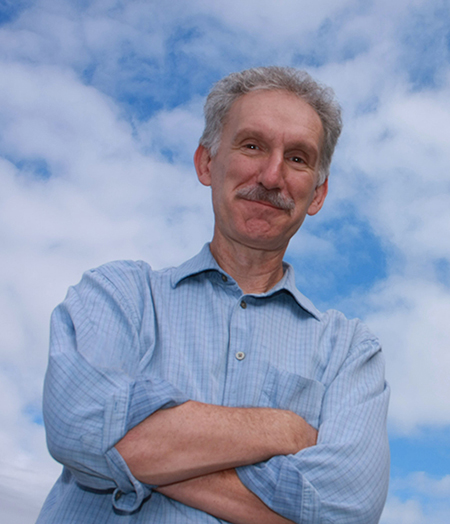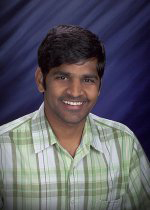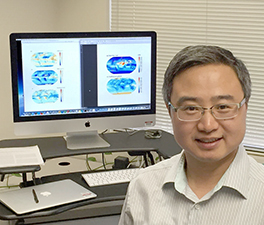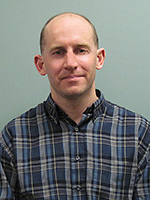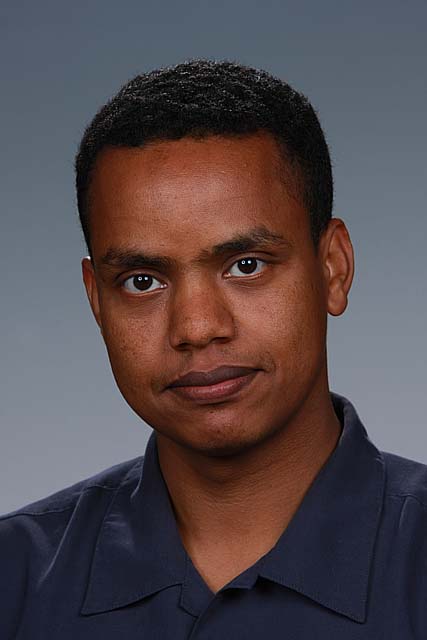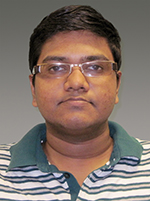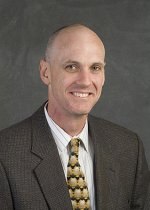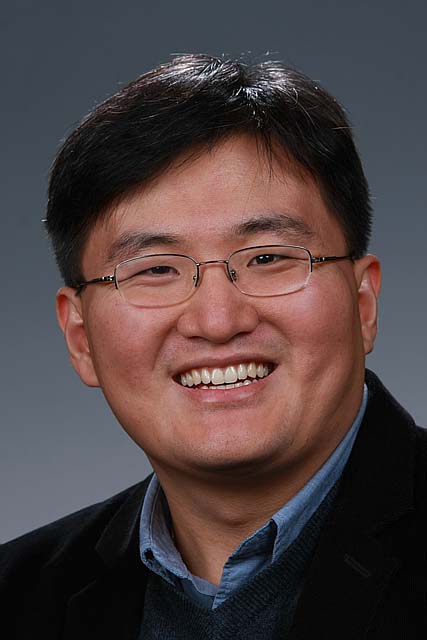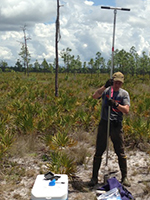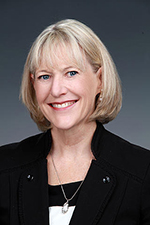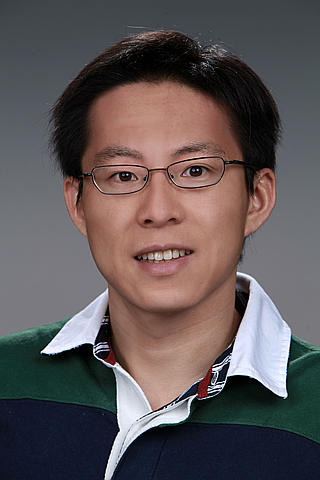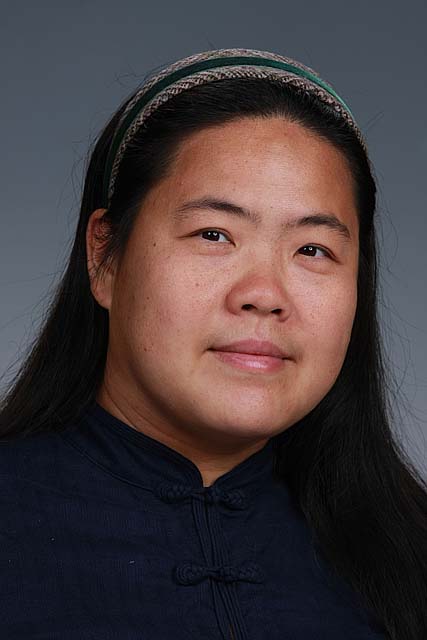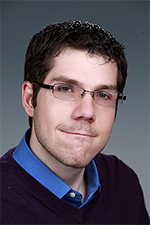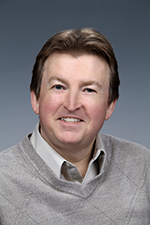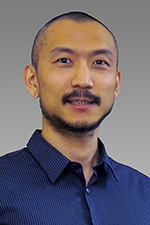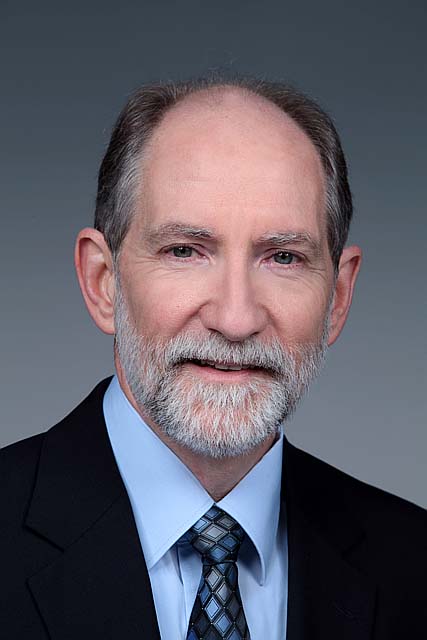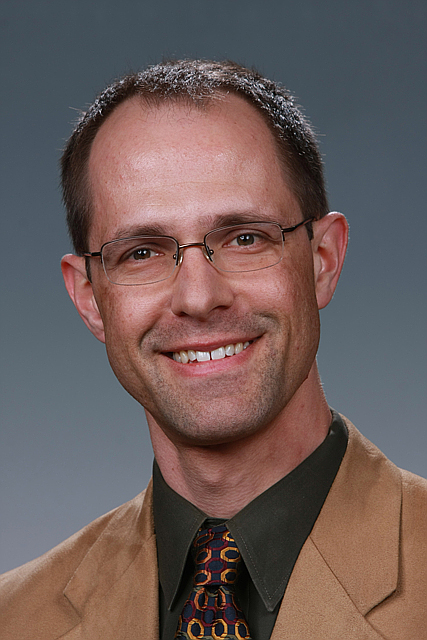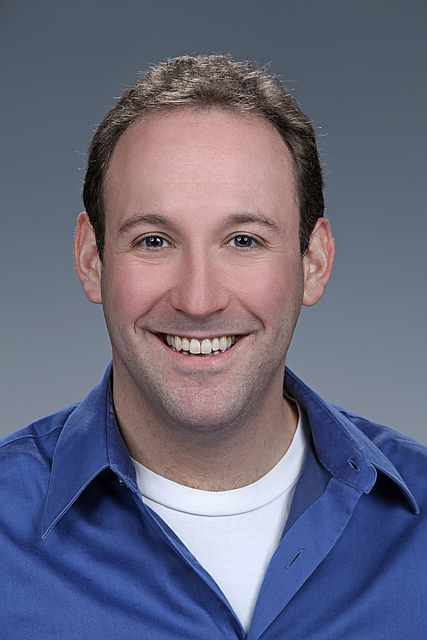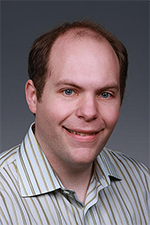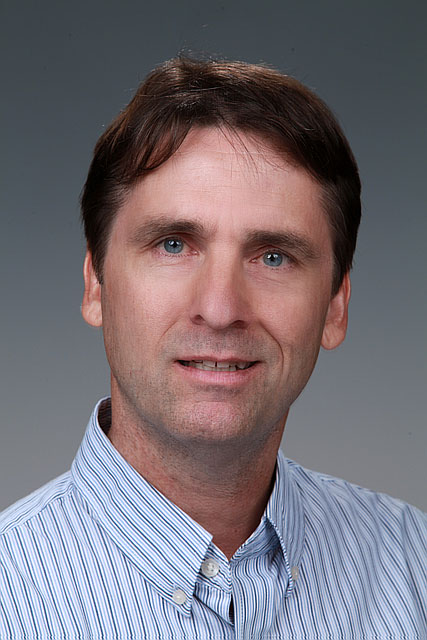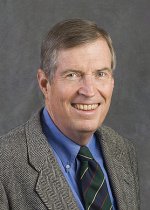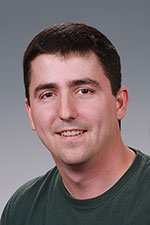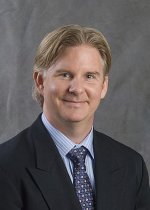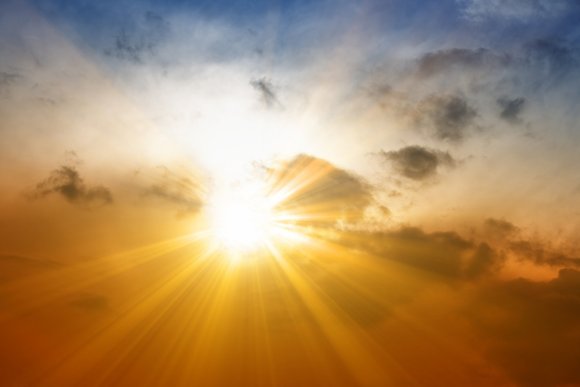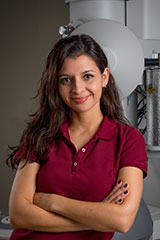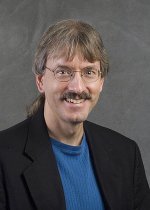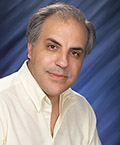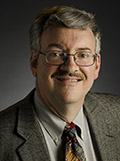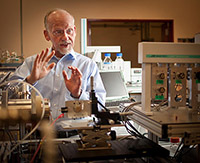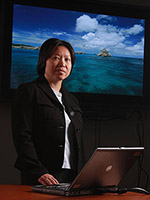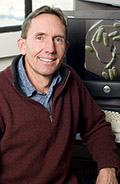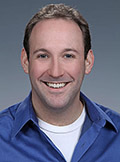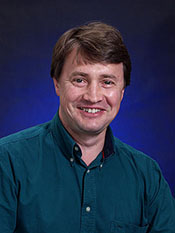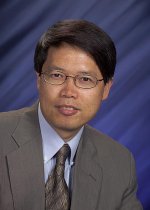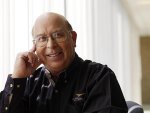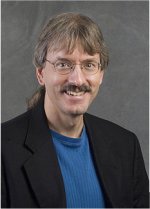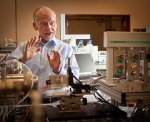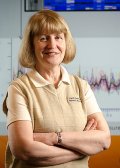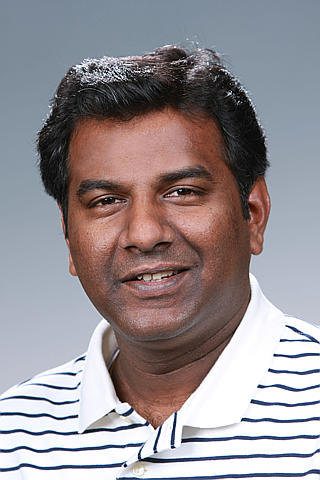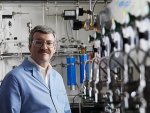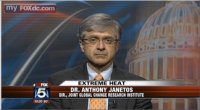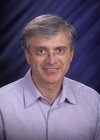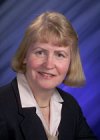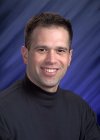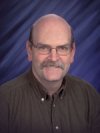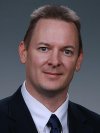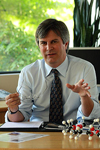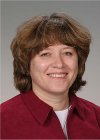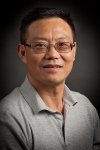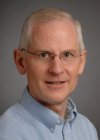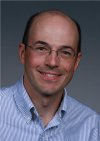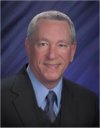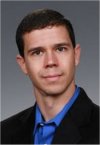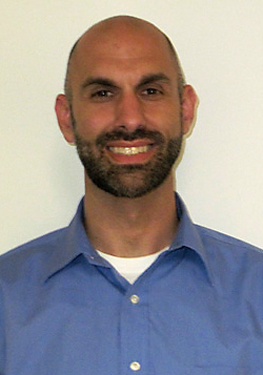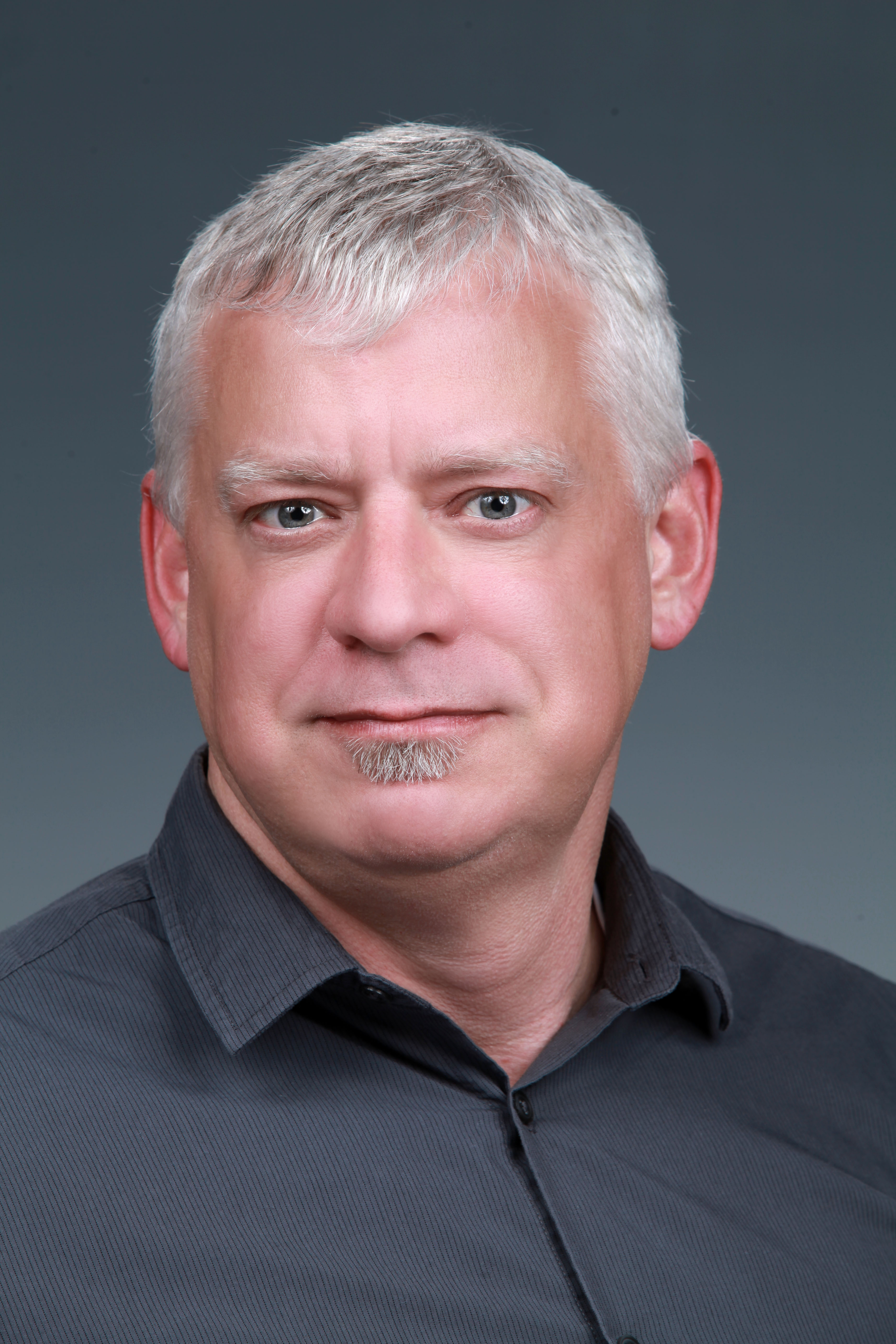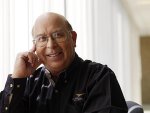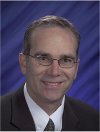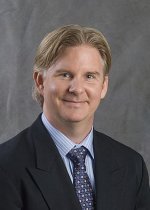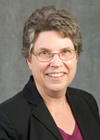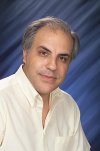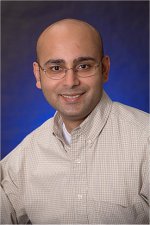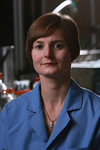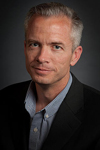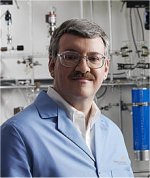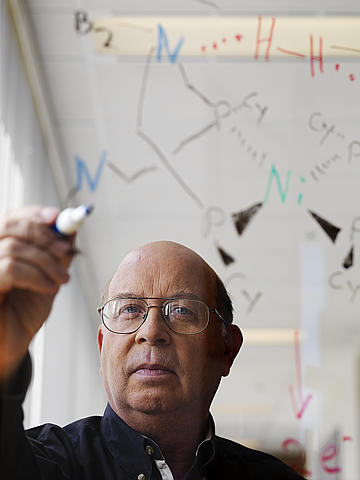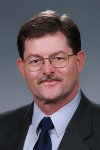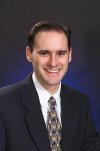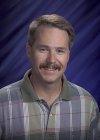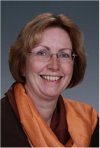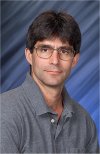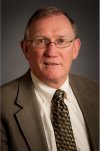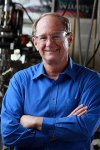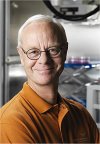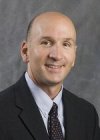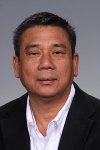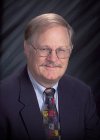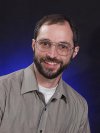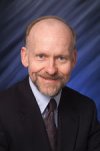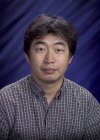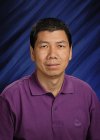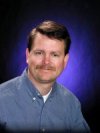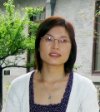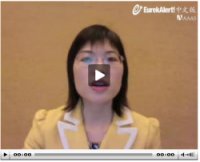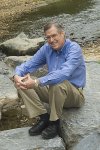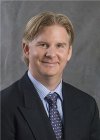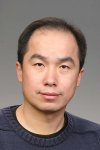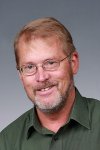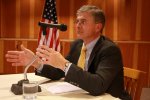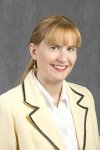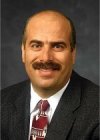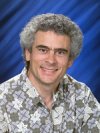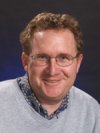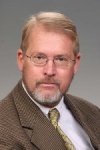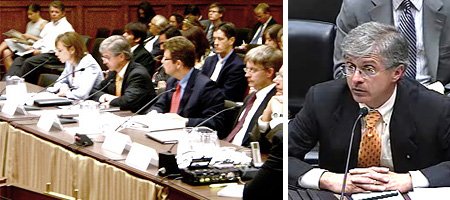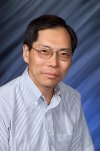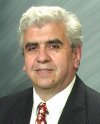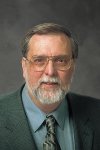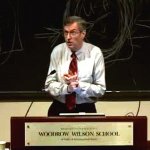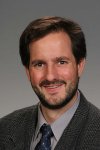Newsmakers
Advancing scientific frontiers. If your work is truly influential, you'll be viewed as an expert in the science world and beyond. One measure of impact is when others seek out your insights.
Our Newsmakers page features experts from PNNL's Sciences Directorate who've been recently quoted, asked to speak to influential organizations, or taken on national or international appointments
2019
CME researchers from University of Wisconsin-Madison report new fuel cell concept
Paper shows remarkable progress on fuel cells using molecular mediators
Researchers from the Center for Molecular Electrocatalysis (CME) – Shannon Stahl and Thatcher Root – published a paper October 3 in the new energy journal Joule titled “Quinone-Mediated Electrochemical O2 Reduction Accessing High Power Density with an Off-Electrode Co-N/C Catalyst.”
The paper details their work in designing a fuel cell using cheaper materials and an organic compound that shuttles electrons and protons. Stahl led the study in collaboration with fellow University of Wisconsin–Madison team professor, Root.
“This paper shows remarkable progress on fuel cells using molecular mediators, an important concept that is one of the main thrusts of research in our renewed funding for the CME,” said CME Director Morris Bullock.
To read a summary of the paper, click here.
October 2019Asrar to Chair American Meteorological Society Committee
Pacific Northwest National Laboratory atmospheric scientist Dr. Ghassem Asrar will serve a two-year term as chair of the American Meteorological Society (AMS) International Affairs Committee.
Asrar is the director of the Joint Global Change Research Institute, a collaboration between PNNL and the University of Maryland, College Park. He steps into his new AMS role after the society's 2019 annual meeting, which takes place January 6 to 10 in Phoenix, Arizona. Asrar has been a member of the committee since August 2014.
The International Affairs Committee aims to support AMS leadership and strengthen the society's connections to international professional organizations and individuals working in meteorology and other relevant environmental fields.
During Asrar's term, the committee will also focus on the AMS 100th anniversary celebration scheduled in 2020.
"In addition to its regular activities, the committee is expected to play a major role in organizing some major international capacity development and networking with other nations' meteorological societies, and mobilizing resources to support such efforts," Asrar said.
At last year's AMS meeting, Asrar received the prestigious Cleveland Abbe Award for Distinguished Service to Atmospheric Sciences by an Individual. Asrar was honored for his work at NASA from 1987 to 2006 and at the World Climate Research Programme from 2008 to 2013.
January 20192018
Wan Appointed Associate Editor of American Geophysical Union Journal
Pacific Northwest National Laboratory atmospheric scientist Dr. Hui Wan has been named an associate editor of Journal of Advances in Modeling Earth Systems (JAMES).
Wan's three-year term started November 1, 2018. She assists the editor-in-chief in the peer review process and solicits articles for JAMES, a monthly open-access journal of the American Geophysical Union (AGU). JAMES features papers on numerical model development and applications to help improve understanding of the Earth system and its coupling to biological, geological, and chemical systems.
Earlier this year, JAMES recognized Wan with a 2017 AGU Editors' Citation for Excellence in Refereeing for her outstanding journal reviews. Established in 1919, AGU is a nonprofit organization of Earth and space scientists with more than 60,000 members worldwide.
Since joining PNNL as a Linus Pauling Distinguished Postdoctoral Fellow in 2011, Wan has also reviewed papers for Geoscientific Model Development, Journal of Geophysical Research: Atmospheres, and Journal of the Atmospheric Sciences. In 2014, she was an associate editor of Monthly Weather Review.
Wan has been a staff scientist at PNNL since 2015. Her research interests include designing computationally efficient and accurate methods for the development and evaluation of global atmospheric models.
December 2018PNNL-Led Paper Links Microbes, Warmer Earth to Faster Flow of Soil Carbon Into Atmosphere
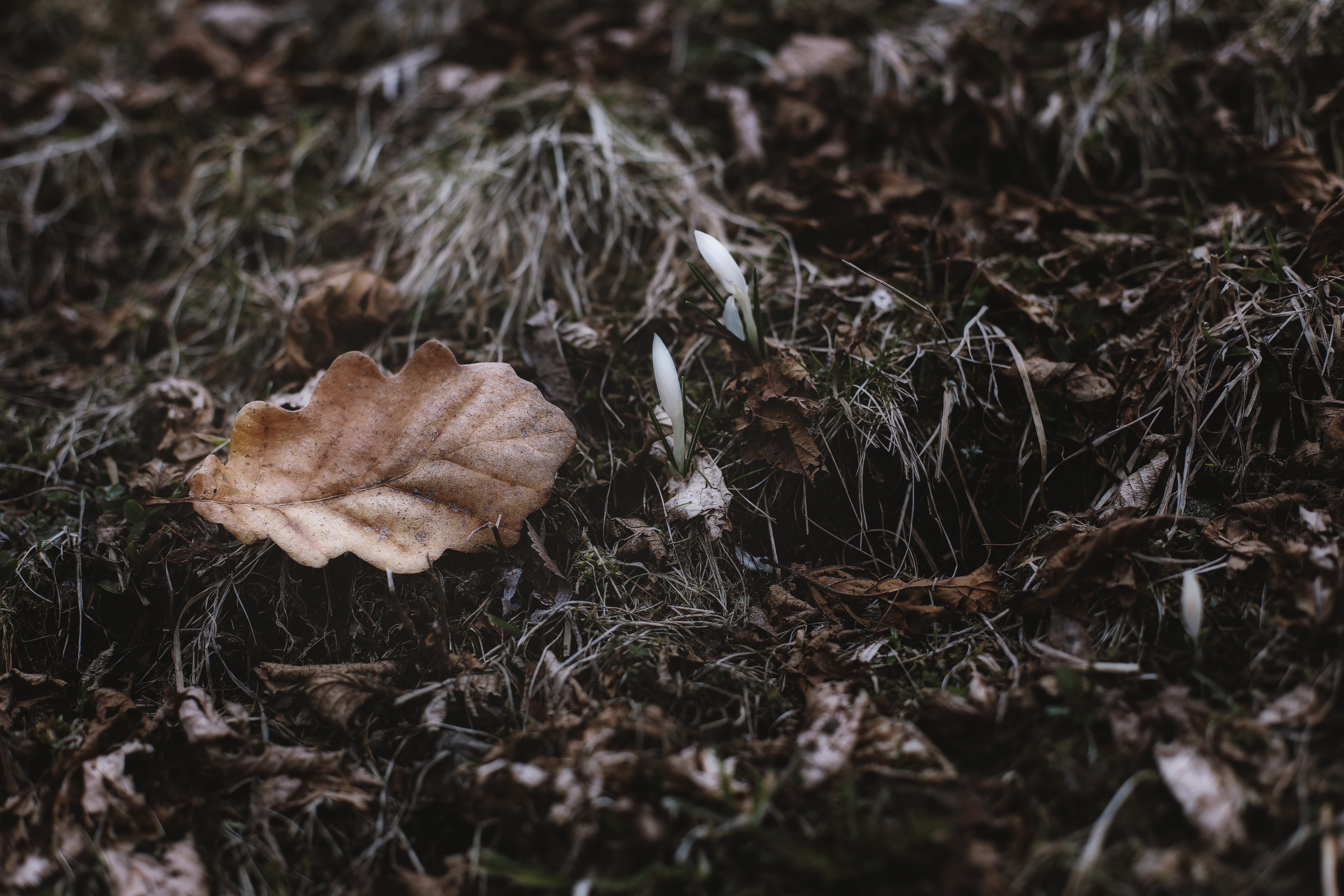
When microbes feed on shriveled leaves, the carbon in those leaves enters the atmosphere as carbon dioxide.
A new study suggests carbon stored in soil is entering Earth's atmosphere faster.
Blame microbes and how they react to warmer temperatures. Their food of choice—nature's detritus like dead leaves and fallen trees—contains carbon. When bacteria chew on decaying leaves and fungi chow down on dead plants, they convert that storehouse of carbon into carbon dioxide that enters the atmosphere.
In a study published August 2 in Nature, led by Pacific Northwest National Laboratory terrestrial ecology scientist Dr. Ben Bond-Lamberty, researchers show that this process is speeding up as Earth warms and is happening faster than plants are taking in carbon through photosynthesis. The team found that the rate at which microbes are transferring carbon from soil to the atmosphere has increased 1.2 percent over a 25-year time period, from 1990 through 2014.
"It's important to note that this is a finding based on observations in the real world. This is not a tightly controlled lab experiment," said Bond-Lamberty, who works in College Park, Maryland, at the Joint Global Change Research Institute (JGCRI), a collaboration between PNNL and the University of Maryland.
"Soils around the globe are responding to a warming climate, which in turn can convert more carbon into carbon dioxide which enters the atmosphere," he added. "Depending on how other components of the carbon cycle might respond due to climate warming, these soil changes can potentially contribute to even higher temperatures due to a feedback loop."
The research team also included Bond-Lamberty's JGCRI colleague Dr. Min Chen, whose work focuses on land surface modeling and the global carbon cycle; PNNL soil scientist Dr. Vanessa Bailey; and scientists from Virginia Commonwealth University and the University of Delaware.
For more information, see the PNNL news release, "As temperatures rise, Earth's soil is ‘breathing' more heavily."
August 2018McDowell Serves as Editor and Author for Special Issue of New Phytologist
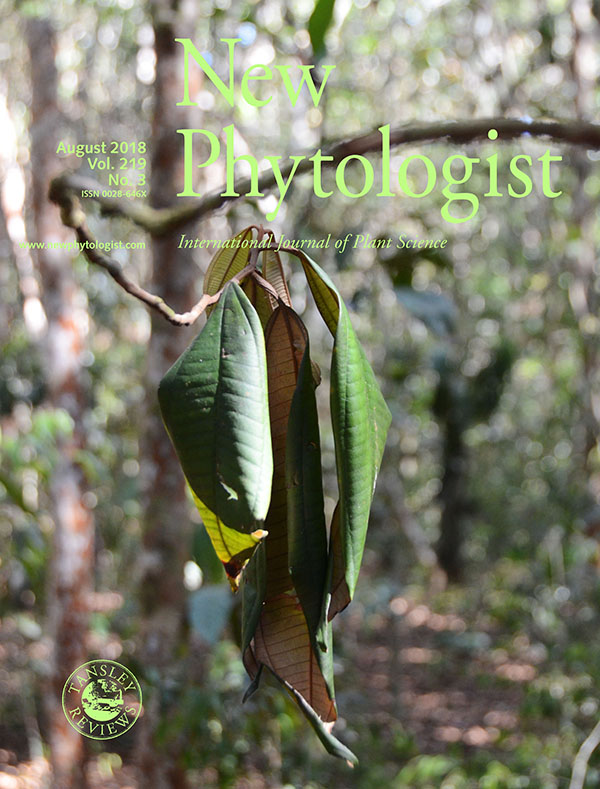
The cover of the August 2018 New Phytologist issue edited by PNNL's Nate McDowell. Published with permission. Enlarge Image.
Pacific Northwest National Laboratory plant physiologist Dr. Nate McDowell compiled and edited articles for a recently published special issue of the journal New Phytologist. The August 2018 issue featured papers discussing drought effects on tropical forests.
In addition to writing an editorial that introduced the collection of papers, McDowell was the lead author of an article on the drivers and mechanisms behind the rising tree mortality rate in the moist tropics. The article received significant media attention after it was published online in February.
McDowell studies plants and ecosystems, including internal and external controls over their carbon-water balance and their responses to environmental changes. His research focuses on the many factors that collectively determine plant survival and mortality.
McDowell is currently the drought science lead for the U.S. Department of Energy's Next Generation Ecosystem Experiments-Tropics project, which seeks to improve understanding of tropical forest-Earth system interactions. His team is investigating the mechanisms by which variations in local to regional soil and atmospheric hydrology affect plant hydraulics and forest water and carbon fluxes, and the feedbacks upon hydrology, tree stress, and mortality.
For more information on McDowell's work, see the PNNL news release, "Increasing tree mortality in a warming world."
July 2018Alla Zelenyuk-Imre Quoted in DOE Feature Article
Dr. Alla Zelenyuk-Imre, Pacific Northwest National Laboratory, was quoted in "From Leaves to Clouds: Revealing How Trees' Emissions Shape the Air Around Us." Written by Shannon Brescher Shea and published by DOE's Office of Science, the article explains how data from the Green Ocean Amazon project illuminated links between the Amazon's forests and the atmosphere. In the article, Shea mentions Zelenyuk-Imre's work into how volatile organic compounds emitted by tree leaves react in the atmosphere to form various particles. Those particles evolve as they float through the air. A chemist, Zelenyuk-Imre is known for her detailed, collaborative studies on particle properties and transformation.
June 2018Washington Post, USA Today Among Media Outlets to Cover PNNL-Led Hurricane Study
With the 2018 Atlantic hurricane season officially starting June 1—and a devastating 2017 season that remains fresh in millions of minds—journalists homed in on recently published hurricane research by scientists at Pacific Northwest National Laboratory and the National Oceanic and Atmospheric Administration (NOAA).
Analyzing satellite data from 1986 to 2015, PNNL oceanographer Dr. Karthik Balaguru and atmospheric scientist Dr. L. Ruby Leung, along with NOAA oceanographer Dr. Gregory R. Foltz, found that powerful hurricanes intensify more strongly and rapidly than they did 30 years ago. The Washington Post, USA Today, The Guardian, Newsweek, The Weather Channel, Gizmodo, Climate News Network, Business Insider, and CBS affiliate WCTV in Tallahassee, Florida, were among the media outlets that reported on their discovery.
Balaguru, Leung, and Foltz determined that, among several factors, a climate cycle called the Atlantic Multidecadal Oscillation (AMO) affects the temperature of the sea where hurricanes tend to build up much of their energy. Their findings appeared in a paper published by Geophysical Research Letters, a journal of the American Geophysical Union.
"This was a surprise, that the AMO seems to be a bigger influence in rapid intensification than other factors, including overall warming," said Balaguru, the paper's lead author.
The Atlantic is preparing for a hurricane season that follows one of the most destructive lineups in history. Hurricanes Harvey, Irma, Jose, and Maria all packed exceptionally strong wallops, as the maximum wind speed of those four hurricanes increased at least 25 knots (28.8 miles per hour) within 24 hours.
For more information, see the PNNL news release, "Powerful hurricanes strengthen faster now than 30 years ago."
May 2018Chemception Takes a Deeper Look at Chemical Behavior
In a recent conversation with Chemistry World about how deep learning (machine learning algorithms based on layered neural networks) is changing how researchers are exploring chemical behavior, ACMD Division Director Nathan Baker discussed Chemception, a deep convolutional neural network framework developed to predict a molecule’s chemical properties from its structure.
Unlike existing models that perform similar functions and have been built with decades of chemical knowledge, Chemception builds its own models using only two-dimensional pictures of molecules. According to Baker, such capability has potential applications in areas such as biophysics.
Read more in the Chemistry World article: “Machine learning hits the big screen.
May 2018PNNL scientists contribute to expanded hunt for WIMP dark matter
Several PNNL scientists are contributing to an expanded hunt for weakly interacting massive particles – WIMPs – in an experiment taking place in the deepest underground laboratory in North America.
PNNL scientists play an important role designing the SuperCDMS detector, helping to reduce as much as possible the background signals in the detector, which is designed to detect the postulated WIMP form of dark matter. PNNL is one of 26 institutions around the globe involved in SuperCDMS – it will be the world’s most sensitive experiment for relatively low-mass WIMPs, 50 times more sensitive than the previous CDMS experiment.
The work, now supported at PNNL by the DOE Office of High Energy Physics, is closely related to a broader program of physics research taking place through the Nuclear Physics, Particle Physics, Astrophysics and Cosmology Initiative (NPAC).
More information on SuperCDMS is available from the Stanford Linear Accelerator Laboratory (click here) or via the PNNL News Center.
PNNL scientists involved in SuperCDMS are Isaac Arnquist, Ray Bunker, Eric Hoppe, Ben Loer, John Orrell and Maria Laure di Vacri.
May 2018Dunning Discusses NWChemEx for Let's Talk Exascale Podcast
In a new episode of the Exascale Computing Project’s Let’s Talk Exascale podcast, Thom Dunning, a Battelle Fellow at the Northwest Institute for Advanced Computing, a joint endeavor of the University of Washington and Pacific Northwest National Laboratory, discussed the importance of understanding molecular processes and how work on the ECP’s NWChemEx project aims to improve how scientists study molecular systems. Dunning, who leads the NWChemEx project, also is a research professor in UW’s chemistry department.
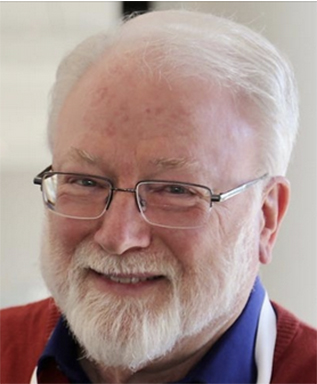
Thom Dunning
NWChemEx is enhancing the popular, PNNL-developed computational chemistry code, NWChem, to improve its scalability, performance, extensibility, and portability for use on future exascale computing systems.
According to Dunning, the emphasis on developing hardware and software simultaneously for exascale systems “is a hallmark of ECP that distinguishes it from almost all of the other major high-performance computing activities around the world.”
For more about how NWChemEx will change molecular modeling, tune into the podcast, “Getting Ready to Model Molecular Properties at Exascale with NWChemEx.”
About ECP
The U.S. Department of Energy’s Exascale Computing Project is responsible for developing the strategy, aligning the resources, and conducting the R&D necessary to achieve the nation’s imperative of delivering exascale computing by 2021. ECP’s mission is to ensure all the necessary pieces are in place for the first exascale systems—an ecosystem that includes mission critical applications, software stack, hardware architecture, advanced system engineering and hardware components to enable fully functional, capable exascale computing environments critical to national security, scientific discovery, and a strong U.S. economy.
The ECP is a collaborative project of two DOE organizations: the Office of Science and the National Nuclear Security Administration.
April 2018Praveen Thallapally Quoted in DOE Feature Article
Dr. Praveen Thallapally, Pacific Northwest National Laboratory, was recently quoted in an article titled "Sniffing Out the Foundational Science of Sensors." Thallapally's work on the intricacies of metal-organic frameworks was called out in the feature article written by Shannon Shea and published by the DOE Office of Science. Specifically, the article discusses work he's done to design frameworks that can capture specific metals, gases, and vapors. The act of capturing the gases can trigger alarms, acting as sensors. The MOFs can then be purged, essentially creating reusable sensors.
April 2018Shilling Co-Authors Wildfire Paper on Journal's Most Downloaded List
Pacific Northwest National Laboratory atmospheric chemist Dr. John Shilling co-authored one of the top 10 most downloaded papers published between 2016 and 2017 in Journal of Geophysical Research (JGR): Atmospheres. The article, "Airborne measurements of western U.S. wildfire emissions: Comparison with prescribed burning and air quality implications," appeared online in June 2017 and recorded 2,372 downloads as of year-end.
In the paper, scientists examined gas and particulate emissions from U.S. wildfires using measurements obtained by research aircraft in 2013. They found that wildfires are a major source of particulate pollution in the West and that the source is largely underestimated in emissions inventories. Comparing the wildfire results to those obtained from prescribed burning—a common land management practice—showed that wildfires are a larger source of pollution than previously believed.
Shilling, who came to PNNL to 2008, is an expert in aerosol gas and particle measurements and in applying mass spectrometry to problems in atmospheric chemistry.
JGR: Atmospheres is a journal of the American Geophysical Union (AGU). Established in 1919, AGU is a nonprofit organization of Earth and space scientists with 60,000 members worldwide.
March 2018Snapshots of the Atomic Interface Shuffle Featured in MRS Bulletin
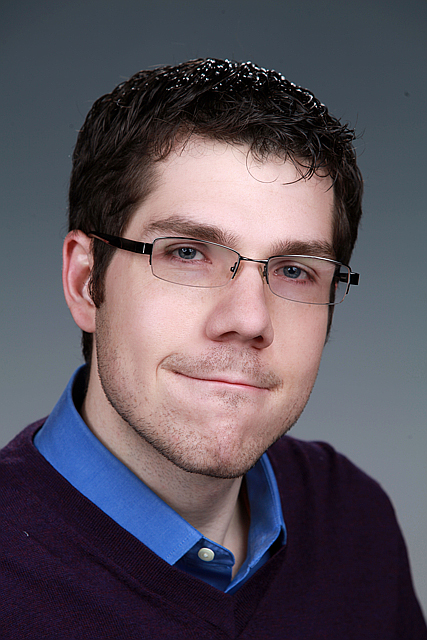
Steven Spurgeon was quoted in March 2018 MRS Bulletin.
Dr. Steven R. Spurgeon, Pacific Northwest National Laboratory, was recently quoted in an article titled "Snapshots of an oxide heterojunction reveal an interfacial atomic shuffle" about his work to understand the unusual rearrangement of atoms at the boundary between two oxides used for solar water splitting.
As described in a March 2018 issue of the MRS Bulletin and originally reported in Physical Review Materials, a team led by Spurgeon and Dr. Scott A. Chambers visualized the exchange of atomic layers before and after crystal growth using advanced scanning transmission electron microscopy methods. Their discovery could unlock new ways to synthesize never-before-seen materials by precisely controlling the arrival of atoms to a material's surface.
March 2018PNNL Atmospheric Scientist Leads Research Covered in Science, Media
Tiny particles fuel powerful storms and influence weather much more than has been appreciated, according to a study in the Jan. 26 issue of the journal Science.
The research focuses on the power of minute airborne particles known as aerosols, which can come from urban and industrial air pollution, wildfires and other sources. While scientists have known that aerosols may play an important role in shaping weather and climate, the new study shows that the smallest of particles have an outsize effect: Particles smaller than one-thousandth the width of a human hair can cause storms to intensify, clouds to grow and more rain to fall.
The tiny pollutants—long considered too small to have much impact on droplet formation—are, in effect, diminutive downpour-makers.
"We showed that the presence of these particles is one reason why some storms become so strong and produce so much rain. In a warm and humid area where atmospheric conditions are otherwise very clean, the intrusion of very small particles can make quite an impact," said Pacific Northwest National Laboratory atmospheric scientist Dr. Jiwen Fan, who is lead author of the paper in Science. Fan led 21 authors from 15 institutions around the world to do the study.
The findings are based largely on unique data made possible by the GoAmazon research campaign, where scientists made ground-based and airborne measurements related to climate during 2014-2015. The campaign was run by the Atmospheric Radiation Measurement (ARM) Climate Research Facility, a DOE Office of Science user facility.
The research in the Science paper was featured by The Guardian, the U.K.'s Institute of Physics, ScienceNews, and InsideClimate News.
Watch the PNNL video, "Tiny Particles Power Stronger Storms."
For more information, see the PNNL news release, "Tiny particles have outsize impact on storm clouds, precipitation."
February 2018PNNL Researchers Share Earth Science Expertise
Annual science and policy forum includes AAAS Fellows L. Ruby Leung and Phil Rasch
Scientists from around the world rallied around the theme "discovery to application" at the 2018 American Association for the Advancement of Science (AAAS) annual meeting, held from February 15-19 in Austin, Texas. Internationally recognized atmospheric scientists from PNNL joined the gathering, sharing their knowledge related to the connected climate system and implications for mankind based on the latest research.
Leung discusses the water-energy-land nexus
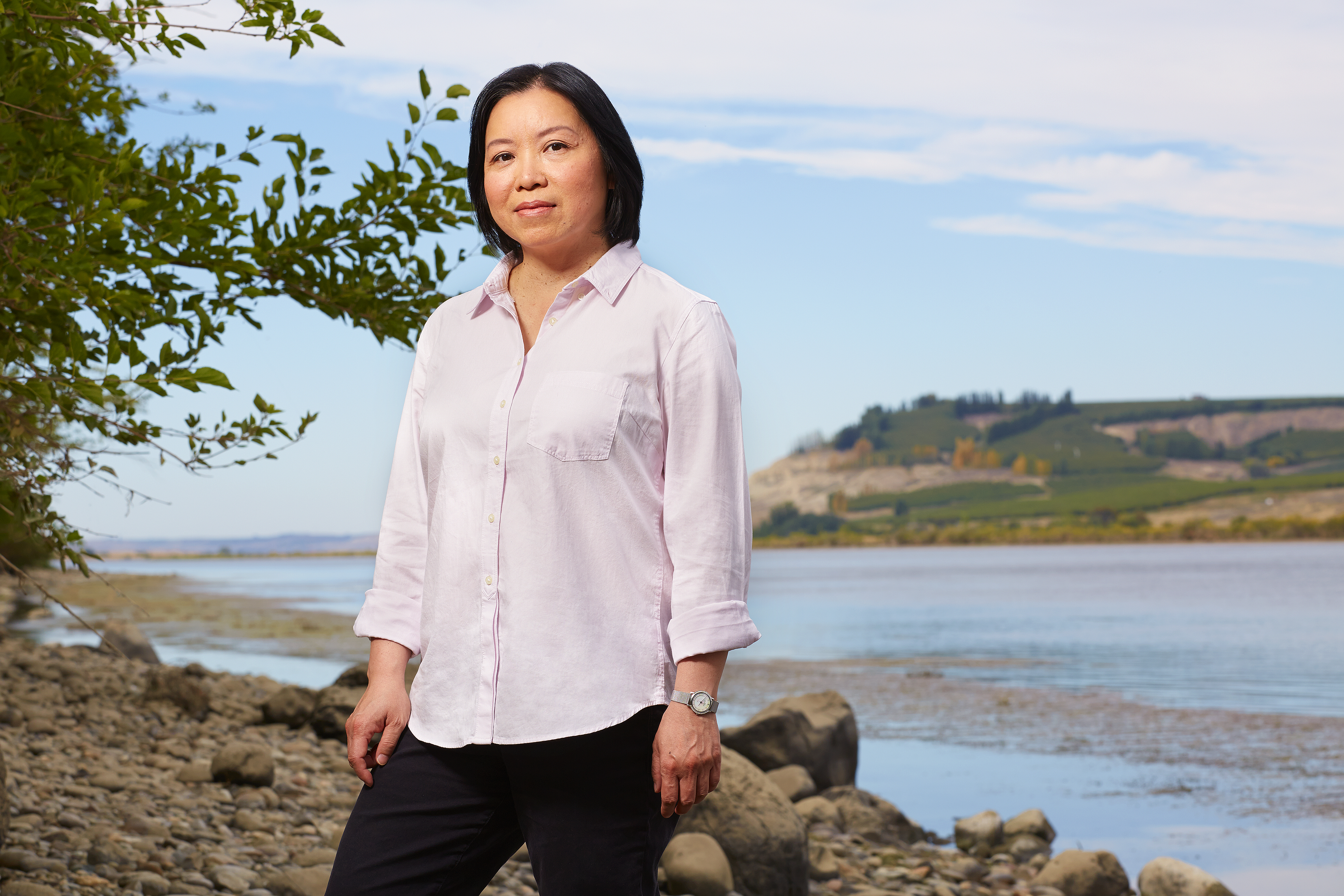 Dr. L. Ruby Leung studies Earth system modeling and the water cycle.
Dr. L. Ruby Leung studies Earth system modeling and the water cycle.
Water is everywhere. In addition to oceans and rivers, it flows through the soil beneath our feet and the sky over our head.
Dr. L. Ruby Leung discussed new insights related to the water cycle from the perspective of interactions between human and natural systems. In particular, she described how recent research sheds light on how irrigation and water management practices are tied to extreme weather events and the water-energy-land nexus.
With advanced computing capabilities, researchers can run complex model simulations of Earth systems coupled with data about human systems such as reservoir management, farming, and energy production. Across space and time, these simulations can duplicate historical changes and trends, and also project future changes.
"Continuing advances in the science help us see how human activities are changing the terrestrial water cycle," says Leung, a Battelle Fellow whose research focuses on Earth system modeling and the water cycle. "This is important for informing business decisions related to water resources management and power generation."
Rasch takes reins of Atmospheric and Hydrospheric Sciences Section
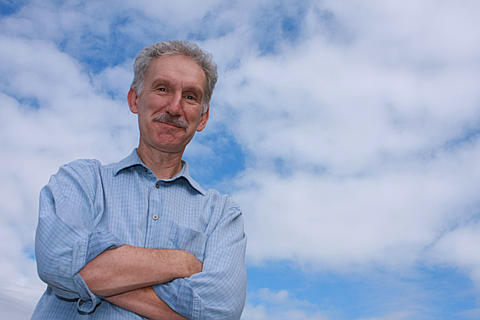 Dr. Phil Rasch leads the AAAS Atmospheric and Hydrospheric Sciences section, which represents scientists in meteorology, climatology, oceanography, and hydrology.
Dr. Phil Rasch leads the AAAS Atmospheric and Hydrospheric Sciences section, which represents scientists in meteorology, climatology, oceanography, and hydrology.
In addition to his other AAAS leadership duties, Dr. Phil Rasch led discussions about next year's symposium for the Atmospheric and Hydrospheric Sciences section. This section represents scientists in meteorology, climatology, oceanography, and hydrology. As part of his three-year term as an officer for that section, he took over as section chair February 20 and will serve in that capacity through the close of next year's meeting.
Over the next year, Rasch will apply his expertise to:
- connect affiliated organizations with the affairs of the section,
- identify broad issues in science of interest to the section and to the association overall, and
- comment to the association leadership on operations and priorities, including worthwhile new initiatives deserving consideration in future planning.
Rasch explained that the AAAS plays an important role in national and international science by increasing communication among scientists, helping to coordinate science progress with societal needs, and "promoting strategies and standards for science that let people trust our research."
"It's a lot of work," he added, "but as all the parts come together and you see the vision jell into a whole, there is potential for real impact. I am glad to help where I can."
Other PNNL experts at the annual gathering included Kirsten Hofmockel, Janet Jansson, and Justin Teeguarden. Learn more about their science in this Biological Sciences Division highlight.
February 2018Bond-Lamberty, Rasch Contribute to National Academies Reports
Experts from Pacific Northwest National Laboratory—terrestrial ecology scientist Dr. Ben Bond-Lamberty and atmospheric scientist Dr. Philip Rasch—contributed to reports recently released by the National Academies of Sciences, Engineering, and Medicine. The National Academies are the nation's preeminent sources of high-quality, objective advice on science, engineering, and health matters.
Climate Science Special Report
Bond-Lamberty provided input on the Review of the Draft Climate Science Special Report, which ranked 10th among the National Academies' top 20 most downloaded publications of 2017.
The U.S. Global Change Research Program (USGCRP) is moving toward a sustained assessment process that allows for more fluid and consistent integration of scientific knowledge into the mandated National Climate Assessment, which is conducted every four years. As part of this process, the USGCRP is developing the Climate Science Special Report, which details the current state of science relating to climate change and its physical impacts.
The National Academies assembled the committee members—whose diverse climate science backgrounds span the breadth of topics in the draft report—to provide an independent review. Bond-Lamberty works in College Park, Maryland, at the Joint Global Change Research Institute, a collaboration between PNNL and the University of Maryland. His research focuses on carbon and nutrient cycling in terrestrial ecosystems.
Earth Science and Applications from Space
Rasch contributed to the 2017-2027 Decadal Survey for Earth Science and Applications from Space. Five study panels completed the bulk of the initial work for the report, which included receiving and analyzing community input. Each panel's collective expertise spanned the report's topical focus areas from science to applications. Rasch, the chief scientist for climate science at PNNL, was a member of the Climate Variability and Change: Seasonal to Centennial panel.
The survey—sponsored by NASA, the National Oceanic and Atmospheric Administration, and the U.S. Geological Survey—is driven by input from the scientific community and policy experts, and will help shape science priorities and guide agency investments into the next decade. February 2018Tumeo Discusses ‘The Next Platform’ in Graph Analytics
In a recent chat with The Next Platform, Antonino Tumeo, a scientist with PNNL’s Advanced Computing, Mathematics, and Data Division High Performance Computing group, discussed how graph algorithms and machine learning can happily coexist in the bid to enhance performance, scalability, and capabilities of graph processors and hardware and software frameworks, especially in the move toward the exascale era.
In the talk, Tumeo touched on several projects being led by PNNL, including HAGGLE (Hybrid Attributed Generic Graph Library Environment), which is part of the Defense Advanced Research Projects Agency’s Hierarchical Identify Verify Exploit, or HIVE, program; the ExaGraph Exascale Computing Project Co-Design Center; and the High Performance Data Analytics program to accelerate big data analytics using HPC.
At PNNL, Tumeo has long explored computing architectures and graph frameworks, as well as their potential connectivity to machine learning and deep learning. In fact, last year he served as a co-organizer of GRAML’17, the First Workshop at the Intersection of Graph Algorithms and Machine Learning. He will serve the same role for this year’s GraML’18 to be held on May 25, 2018 in Vancouver, British Columbia.
The Next Platform offers in-depth coverage of high-end computing at large enterprises, supercomputing centers, hyperscale data centers, and public clouds—areas where research is pushing the boundaries of performance and scale.
See the story: “Putting Graph Analytics Back on the Board.”
February 2018Kravitz Co-Authors Eos Report on Geoengineering Model Intercomparison Project Meeting
Dr. Ben Kravitz, atmospheric scientist at Pacific Northwest National Laboratory, co-wrote a Geoengineering Model Intercomparison Project (GeoMIP) meeting report published online by Eos in December 2017.
Kravitz and report co-author Dr. Alan Robock of Rutgers University lead GeoMIP, an international effort to understand common climate model responses to proposed tactics for reducing how much solar energy the Earth retains. GeoMIP is an official part of the Coupled Model Intercomparison Project Phase 6 (CMIP6), the most recent version of a community-based standard protocol for validating atmosphere-ocean general circulation models.
The report covered the seventh GeoMIP meeting, which took place July 26, 2017, in Newry, Maine. The meeting heavily focused on GeoMIP's contribution to CMIP6. About 30 scientists reviewed and evaluated mathematical modeling efforts to simulate the effects of thinning high-altitude clouds, a proposed method of allowing heat to escape from the atmosphere.
Attendees also discussed paper submissions for a GeoMIP special issue jointly organized by the journals Atmospheric Chemistry and Physics and Geoscientific Model Development. Kravitz is a co-editor of the special issue, which so far has published 24 papers online. The closing date for submissions is March 31.
The eighth GeoMIP meeting will be held April 16-17 in Zurich, Switzerland.
Read the Eos report by Kravitz and Robock.
January 2018Roche 'Talks Exascale' with the ECP
Kenny Roche, a scientist with Pacific Northwest National Laboratory’s High Performance Computing Group and the Nuclear Theory Group in the University of Washington’s Department of Physics, was the subject of a recent episode of the Exascale Computing Project’s Let’s Talk Exascale podcast, where he discussed his work as the project lead for the “Application Assessment” project.
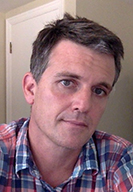
Kenneth Roche
In the discussion, Roche touched on how code evaluations and independent benchmarking results will provide a better view of how things are performing across the entire exascale ecosystem while noting the effort is not necessarily an easy one.
“The measure of success would be how many of the ECP applications we’re able to conduct a careful evaluation in coordination with their application development effort,” he says during the interview. “That would include benchmarking their codes on relevant problems on relevant computer systems.”
For more, tune into the podcast, “Conducting Unbiased Annual Evaluations of ECP Applications.”
About ECP
The U.S. Department of Energy’s Exascale Computing Project is responsible for developing the strategy, aligning the resources, and conducting the R&D necessary to achieve the nation’s imperative of delivering exascale computing by 2021. ECP’s mission is to ensure all the necessary pieces are in place for the first exascale systems—an ecosystem that includes mission critical applications, software stack, hardware architecture, advanced system engineering and hardware components to enable fully functional, capable exascale computing environments critical to national security, scientific discovery, and a strong U.S. economy.
The ECP is a collaborative project of two U.S. Department of Energy organizations, the Office of Science and the National Nuclear Security Administration.
January 2018PNNL Researchers Co-Author National Science Review's Most Read Paper of 2017
Pacific Northwest National Laboratory researchers Ghassem Asrar and Fernando Miralles-Wilhelm are co-authors of National Science Review's most read paper of 2017. Their paper has received close to 7,900 views on the journal's website.
National Science Review published the paper, "Modeling sustainability: population, inequality, consumption, and bidirectional coupling of the Earth and Human Systems," in December 2016. The paper argues that Earth and human system models must be coupled bidirectionally to get a better understanding of how these systems influence each other. Otherwise, critical feedbacks from population and demographics to the Earth system, and impacts of Earth system changes on different human systems, are missed. The paper calls for collaboration among natural and social scientists and engineers in multidisciplinary research and modeling to develop coupled Earth-human system models.
National Science Review, a freely available online, peer-reviewed journal, looks at cutting-edge scientific and technological developments in China and around the world. It explores all areas of natural sciences, including Earth, life, and information sciences. With a Journal Impact Factor of 8.8 according to the latest Journal Citation Reports (Clarivate Analytics, 2017), National Science Review ranks fifth out of 64 journals in the Multidisciplinary Sciences category.
Asrar and Miralles-Wilhelm work at the Joint Global Change Research Institute (JGCRI), a collaboration between PNNL and the University of Maryland, College Park. Asrar is the JGCRI director. Miralles-Wilhelm, a water resources research scientist, is interim director of the Earth System Science Interdisciplinary Center at the University of Maryland. He has a joint appointment with JGCRI/PNNL.
Asrar and Miralles-Wilhelm co-authored the paper with researchers from the University of Maryland, College Park; the Institute for Global Environment and Society; the University Corporation for Atmospheric Research; Johns Hopkins University; NASA Goddard Space Flight Center; Columbia University; Brown University; RIKEN Advanced Institute for Computational Science (Japan); Northeastern University; and George Mason University.
January 2018Improving the Recipe for Fracking
Varun Gupta, a scientist with Pacific Northwest National Laboratory’s Computational Engineering group, was recently quoted in an article describing an environmentally benign fracking fluid developed for capturing geothermal energy, known as StimuFrac™.
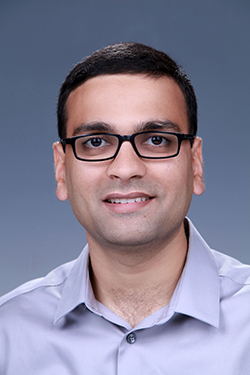
Dr. Varun Gupta
StimuFrac is a carbon-dioxide-activated, rheoreversible fracturing fluid that can enhance permeability through fracturing via volume expansion and gel formation. Notably, it uses significantly less water compared to conventional hydraulic fracturing methods, affording a “greener” alternative.
According to Gupta, who is part of the research team, StimuFrac consistently outperformed conventional fluids used for hydraulic fracturing and “is believed to have lower critical pore invasion pressure that provides further advantage over conventional fracking fluids.” While originally developed for geothermal energy, StimuFrac also has potential applications for the oil and gas industry.
StimuFrac currently is available from PNNL for technology transfer and collaborative research.
Read More:
- “StimuFrac™: ‘Green’ Fracking Fluid Can Be Used Virtually Anywhere” (PNNL News Release)
January 2018
2017
From Dirt, Data Gold Ready for Reusing
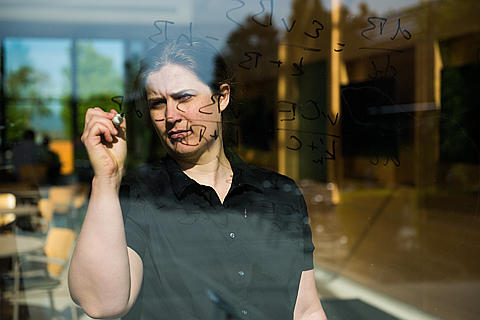
Kathe Todd-Brown
A message to soil science colleagues from PNNL computational biogeochemist Kathe Todd-Brown: Your data set is gold.
Unlock that data's potential for reuse, she writes in a Nov. 30 blog post, by making them available, discoverable, and harmonized with similar data. Don't let data go undiscovered in a notebook or a computer. Don't even let a published paper be a data set's last resting place.
"Digging for data gold in soil," Todd-Brown's advice on data archiving, discovery, and harmonization, appears in Beneath Our Feet, an international forum sponsored by the Global Soil Biodiversity Initiative. It's her second blog post on the site; the first drew more than 5,500 Twitter impressions.
A mathematician by training, and now a Linus Pauling postdoctoral fellow in the Microbiology Group, Todd-Brown designs computer models of soil carbon cycling - or "how dirt breathes," she explained in a #WomenInSTEM YouTube feature.
November 2017Rasch Speaks Before Congress about Geoengineering
Dr. Philip Rasch, the chief scientist for climate science at Pacific Northwest National Laboratory, provided testimony about geoengineering research to the U.S. House of Representatives Committee on Science, Space, and Technology on November 8, 2017. The hearing topic was "Geoengineering: Innovation, Research, and Technology."
Rasch addressed the Subcommittees on Energy and Environment about the need for a research program to study geoengineering and how such a program might be designed. He also discussed sunlight reduction methods, a broad geoengineering category also known as solar radiation management. It encompasses techniques intended to cool the Earth's surface by reflecting incoming solar energy back to space.
Rasch also gave testimony on geoengineering to Congress in February 2010.
Watch a video of this year's testimony by Rasch and the other panelists. For more information on the hearing, read coverage by Ars Technica and the McClatchy news organization’s Washington, D.C., bureau.
November 2017Hughes Part of Award-Winning Technology Development Team
Acoustic gunshot detector earns 2017 R&D 100 Award
Mike S. Hughes, a scientist with PNNL’s Computational Engineering group, was among those recognized for contributions to the acoustic gunshot detector that recently was awarded an R&D 100 Award from R&D Magazine. The award honors the top-100 innovative scientific breakthroughs of 2017.
Developed in response to the mass shooting incident at Sandy Hook Elementary School, the acoustic gunshot detector, a small device that contains a microcontroller, microphone, and battery, stemmed from a sensor PNNL already created for the military. The goal was to create a lightweight, wireless sensor that could quickly identify, discern, and alert to the sound of gunfire indoors as opposed to other loud noises.
The technology has since been licensed to commercial developers that aim to make the sensors cost-effective for use at schools and businesses.
The acoustic gunshot detection technology earned one of seven R&D Awards for PNNL this year. A paper about the technology was originally published in 2016.
Read More:
- “PNNL wins seven R&D 100 Awards” (PNNL News Release)
- “PNNL responds to school shootings. Invention could help police save lives.” (Tri-City Herald)
Reference:
Luzi L, EG Gonzalez, PJ Bruillard, MS Prowant, JR Skorpik, MS Hughes, S Child, D Kist, and JE Mccarthy. 2016. “Acoustic Firearm Discharge Detection and Classification in an Enclosed Environment.” Journal of the Acoustical Society of America 139(5):2723-2731. DOI: 10.1121/1.4948994.
Kravitz Interviewed by Carbon Brief at International Geoengineering Conference
Research by Dr. Ben Kravitz, atmospheric scientist at Pacific Northwest National Laboratory, was recently covered by Carbon Brief, a U.K.-based climate and energy journalism website.
Carbon Brief reported on Kravitz's presentation about solar radiation management during a geoengineering conference in Berlin, Germany. The four-day Climate Engineering Conference 2017, organized and hosted by the Institute for Advanced Sustainability Studies, drew attendees from around the world.
Solar radiation management encompasses techniques intended to cool the Earth's surface by reflecting incoming sunlight. Visit this link to watch an interview with Kravitz and to read more about his presentation.
Kravitz, who joined PNNL in October 2012, is an International Union of Geodesy and Geophysics Early Career Scientist Award recipient. His expertise in climate modeling and geoengineering has been featured in publications such as the e-zine Slate and The New York Times Op Talk blog.
October 2017PNNL Researchers Lead International Energy Workshop
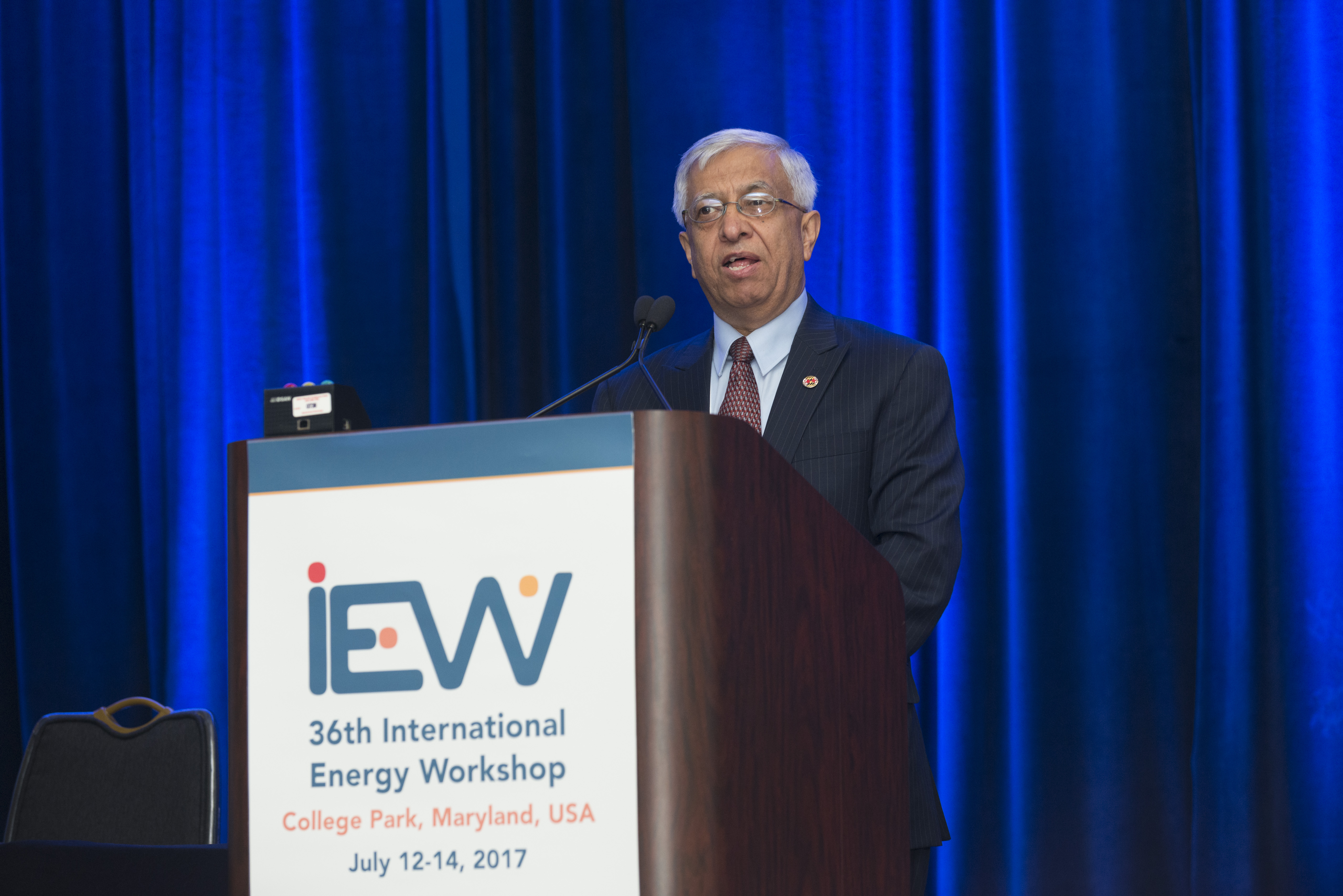
Ghassem Asrar, director of the Joint Global Change Research Institute, speaks at the 36th International Energy Workshop in July in College Park, Maryland. Enlarge Image.
Pacific Northwest National Laboratory researchers organized and co-hosted the 36th International Energy Workshop (IEW) from July 12-14 at the University of Maryland, College Park.
Drs. Ghassem Asrar, Jae Edmonds, and Leon Clarke of the Joint Global Change Research Institute served as members of the scientific committee and local hosts for the workshop, along with Michael Kintner-Meyer of PNNL's Energy and Environment Directorate and Nathan Hultman from the University of Maryland. The Joint Global Change Research Institute is a collaboration between PNNL and the University of Maryland.
A diverse group of nearly 200 engineers, economists, and Earth system scientists from 20 countries attended the workshop. This gathering represented the long-term energy systems modeling disciplines focused on climate stabilization (2100 time horizon) and the electric infrastructure planning community that looks out to 2030. The attendees shared their insights in energy systems, environment, and economics for long-term reliability of grid and other energy infrastructures, and assessments of Earth system changes and their potential impacts and risks to the entire energy system.
"The complex scientific and technical challenges associated with energy, environment, and economic security of our nation and the rest of the world require international collaboration and partnership through efforts such as IEW," Asrar said. "We were delighted to serve as the host for IEW in 2017."
The annual IEW is a leading event for the international energy modeling community and presents an opportunity for scholars and researchers to:
- compare quantitative energy projections,
- understand the reasons for diverging views of future energy developments, and
- observe new trends in global energy production and consumption.
PNNL's leadership role in convening this international forum speaks to its scientific reputation in the field of global change research and energy systems modeling and analysis.
October 2017International Media Coverage on New Methane Emissions Research
New methane emissions research co-authored by Dr. Ghassem Asrar and published in Carbon Balance and Management, “Revised methane emissions factors and spatially distributed annual carbon fluxes for global livestock,” attracted international media attention.
The majority of coverage was in the United States, where journalist Chris Mooney reported it in the Washington Post and it was widely syndicated. In the United Kingdom, reporting outlets included The Guardian and New Scientist. It was also reported by The Irish Times and Frankfurter Allgemeine Zeitung (print) in Germany, and AFP and Le Monde in France.
For more information, view this link.
Asrar is the director of the Joint Global Change Research Institute, a collaboration between PNNL and the University of Maryland in College Park.
October 2017Meeting of the Minds: PNNL, University of Washington Team Up to Teach Students about Atmospheric Research Instrumentation
UW students learn about sophisticated instruments and the data they generate
While doing research at Pacific Northwest National Laboratory and teaching at the University of Washington, Bob Houze saw great potential in strengthening collaborations between the atmospheric sciences departments at both institutions.
"We have common objectives but different strengths," said Houze, a PNNL Laboratory Fellow and UW professor emeritus of atmospheric sciences. "There's a history of university departments and national lab departments working well together in an integrated way."
Early this fall, one piece of Houze's vision finally became a reality.
Ten UW students traveled to Richland to take a two-week instrumentation short course taught by PNNL scientists and engineers. Focusing on themes such as calibration and accuracy, instructors developed lectures on ground and airborne instrumentation and measurements, data management, and atmospheric chemistry and cloud microphysics.
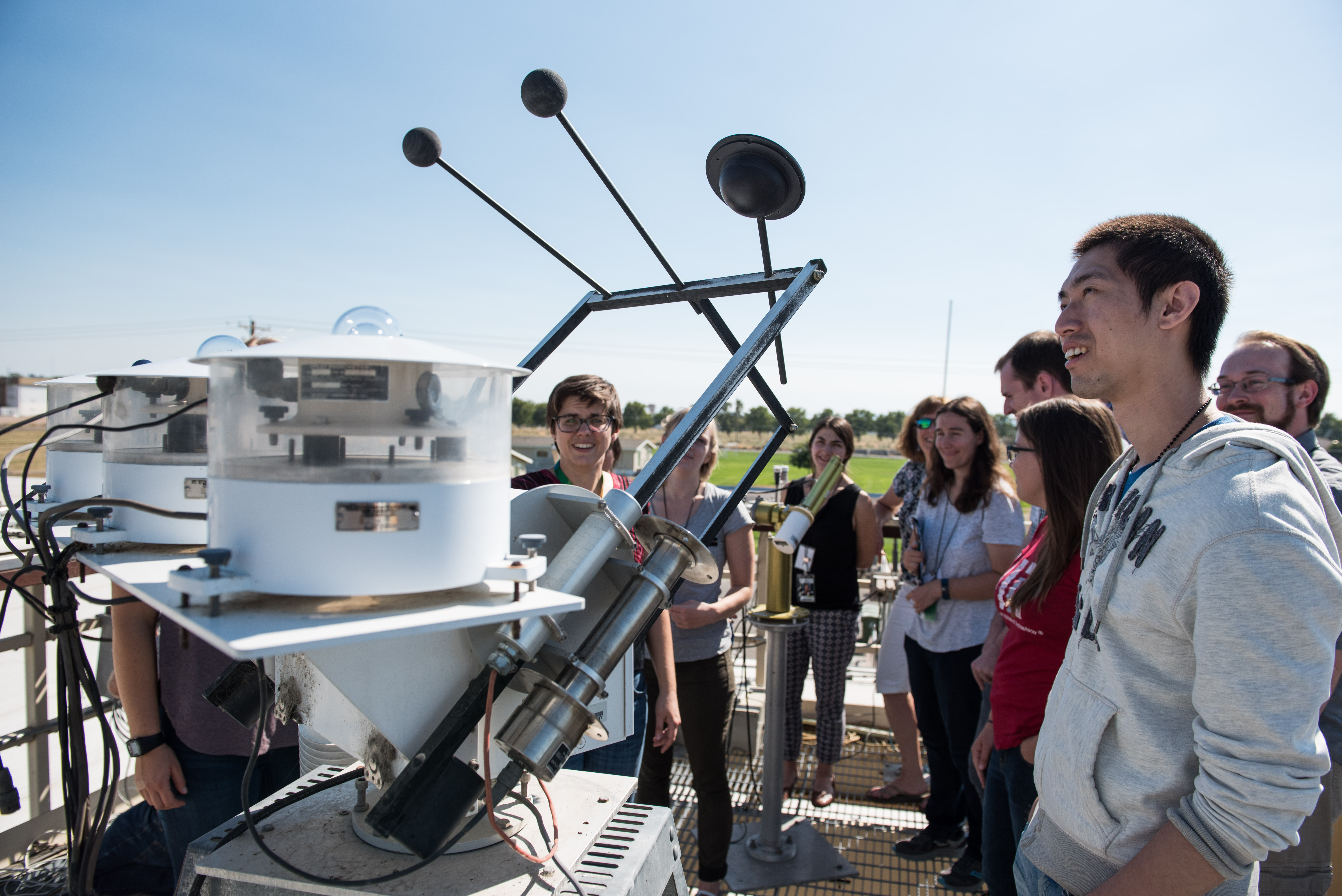
The inaugural PNNL/UW atmospheric research instrumentation class toured the PNNL Atmospheric Measurements Laboratory's "skystand" platform, which includes a group of radiometers measuring solar energy at different angles.
The students have wide-ranging areas of study, but they share a desire to learn more about instruments and data that might crop up in their research or future careers.
"To actually see the insides of some of these instruments and what goes into obtaining the actual measurement was extremely rewarding," said Robert Conrick, a third-year graduate student focusing on weather model evaluations.
Charting the course
When the course announcement went out to UW students last winter, the class filled up overnight.
"In our department, we don't have the observation and instrumentation infrastructure for our students to become acquainted with," Houze said.
Houze got help organizing the course from Lynn McMurdie, a research associate professor of atmospheric sciences at UW, and Laura Riihimaki, a researcher in PNNL's Atmospheric Sciences & Global Change (ASGC) Division.
Riihimaki recruited fellow lab staff members to serve as course instructors and worked with them to map out how the coursework would progress.
"I was worried that the instructors would only have time to teach for an hour or two, but the response was great," Riihimaki said. "They were saying, ‘Oh, no, I can't cover this material in less than two days.' "
Instructors chose to reinforce their lectures through experiments, demonstrations, computer analyses, mock field campaign designs, and field trips. Students toured PNNL's Atmospheric Measurements Laboratory, a research facility with instruments used to study aerosols, clouds, and their interactions, and the Gulfstream-1 research aircraft that PNNL operates for the U.S. Department of Energy (DOE). The plane helps collect airborne measurements for field campaigns related to the Atmospheric Radiation Measurement (ARM) Climate Research Facility, a DOE scientific user facility.
"We tried to present the students with information that went beyond textbooks and addressed the realities of working with these instruments in a research capacity," radar engineer Joseph Hardin said. "This is important because these students will eventually be our peers and colleagues in the field."
PNNL lecturers were:
- Jennifer Comstock, introduction to ARM
- Riihimaki and Victor Morris, broadband radiometers/data logging
- Connor Flynn, spectral radiometers
- Hardin, Nitin Bharadwaj, Brad Isom, and Andrei Lindenmaier, research radars
- Rob Newsom, lidars
- Jason Tomlinson, aircraft
- John Shilling and Alla Zelenyuk-Imre, chemistry
- Gourihar Kulkarni, ice nucleation/cloud condensation nuclei
- Chitra Sivaraman, Krista Gaustad, Sherman Beus, and Ken Burk, data management.
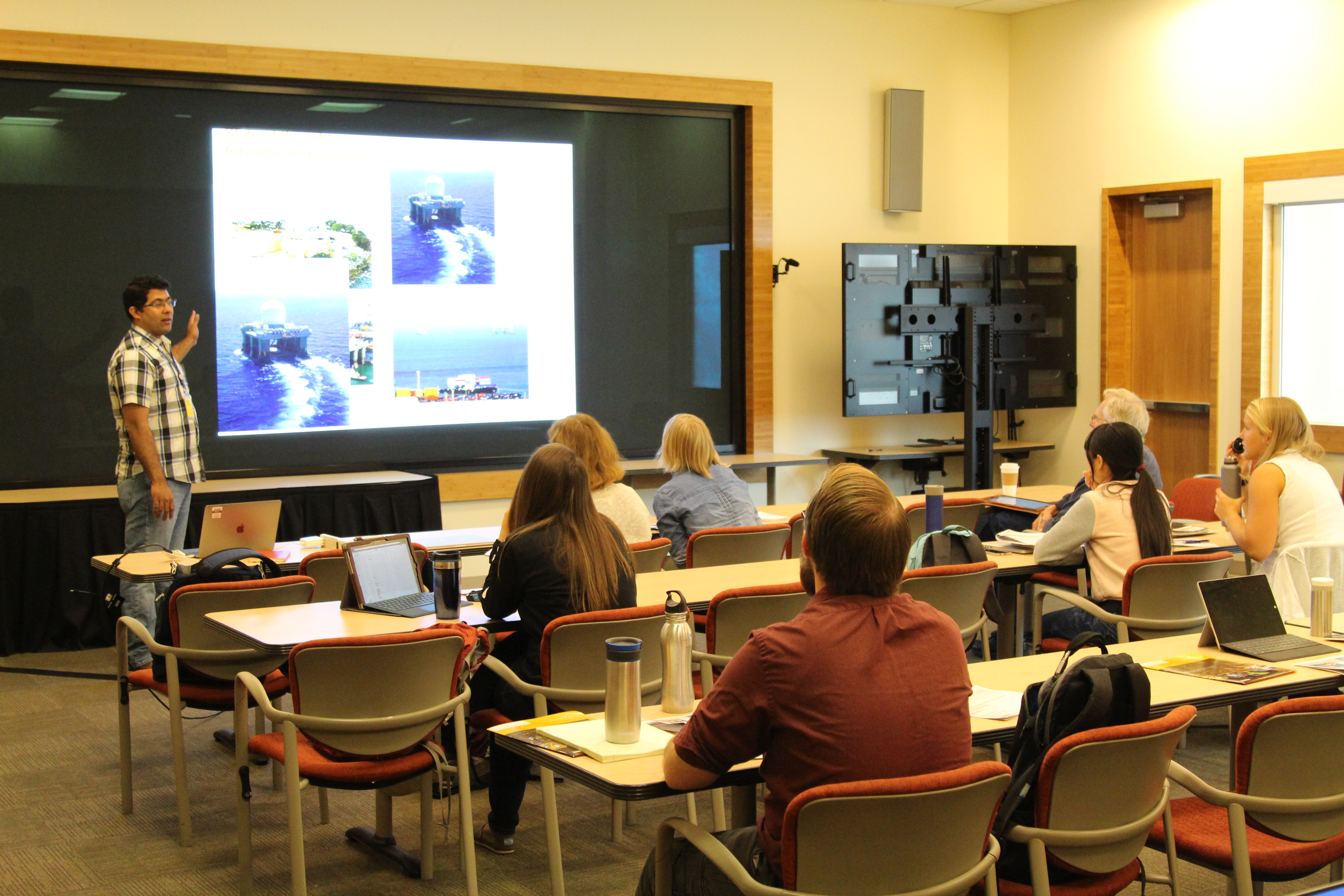
PNNL's Nitin Bharadwaj teaches the UW class about research radars. Bharadwaj is the radar engineering lead for the Atmospheric Radiation Measurement (ARM) Climate Research Facility, a U.S. Department of Energy scientific user facility.
When Riihimaki planned her lecture on broadband radiometers, she talked with Morris and Sivaraman's team to make sure they were "teaching in the same direction."
"I wanted the students to get an idea of the whole end-to-end process from sticking an instrument out in the field to bringing in the data, doing the data quality, looking at what it really means, and then how would you archive it so that people can use it in the future," Riihimaki said.
Ian Kraucunas, ASGC division director, kicked off the course with background information about PNNL and the ASGC division, followed by a direct call to action for the students.
"Right off the bat, Ian set the tone by demanding us to ask questions," said Megan McKeown, a second-year graduate student who wants to become an air quality consultant. "I think it made us all feel open to have a dialogue with the instructors."
Every morning, a pair of students got in front of the class and presented on the previous day's lesson. If the presenters ran into a concept they didn't fully understand, the previous day's instructor was there to explain it in further detail.
"That interchange really elevates the learning that the students gain," McMurdie said.
‘Unprecedented opportunity'
Students will receive credit for the course, but the work isn't over. They each have a month and a half to complete a project, designed by the student with one of the course instructors, using PNNL research data and ARM measurements.
The students are eager to apply what they've learned out in the field. Second-year graduate student Qiaoyun Peng will get that opportunity when she participates in a National Science Foundation-sponsored field campaign in 2018. The Western Wildfire Experiment for Cloud Chemistry, Aerosol Absorption, and Nitrogen (WE-CAN) will use airborne instrumentation to study atmospheric chemical reactions within Western U.S. wildfire plumes.
"I feel much more confident to conduct a field experiment after the course, as I absorbed a lot from the practical experience and theoretical foundations that the PNNL scientists gave us during this intensive two weeks," Peng said. "It's also a great opportunity for me to feel what it is like to work in a national lab and get in touch with top scientists in my field to design a small project together."
Eliza Dawson, the only undergraduate who took the class, is more motivated than ever to pursue further study of atmospheric sciences.
"I was interested in it beforehand, and I'm still super-interested in it," she said. "This fall, I'm going to be applying for grad school."
Those kinds of responses have Houze believing that similar courses could be just as successful in the future, training young scientists who eventually might work at PNNL, UW, and other national labs and universities.
"We'd love to do this every two years," Houze said.
All of the students finished the class with a greater appreciation for what scientists and engineers do with instrumentation and data. It also opened them up to new career paths to explore. Someday, they could be the ones interpreting signals, installing an instrument on a mountain, or keeping hardware cool in tightly packed quarters.
Jessica Haskins, a fourth-year graduate student who uses aircraft instrument data in her research, called the class an "unprecedented opportunity."
"This course was by far the one I've learned the most from in graduate school," Haskins said, "and I'm so thankful for the partnership between the UW and PNNL that allowed us to learn from the people who operate, build, and process that data every day."
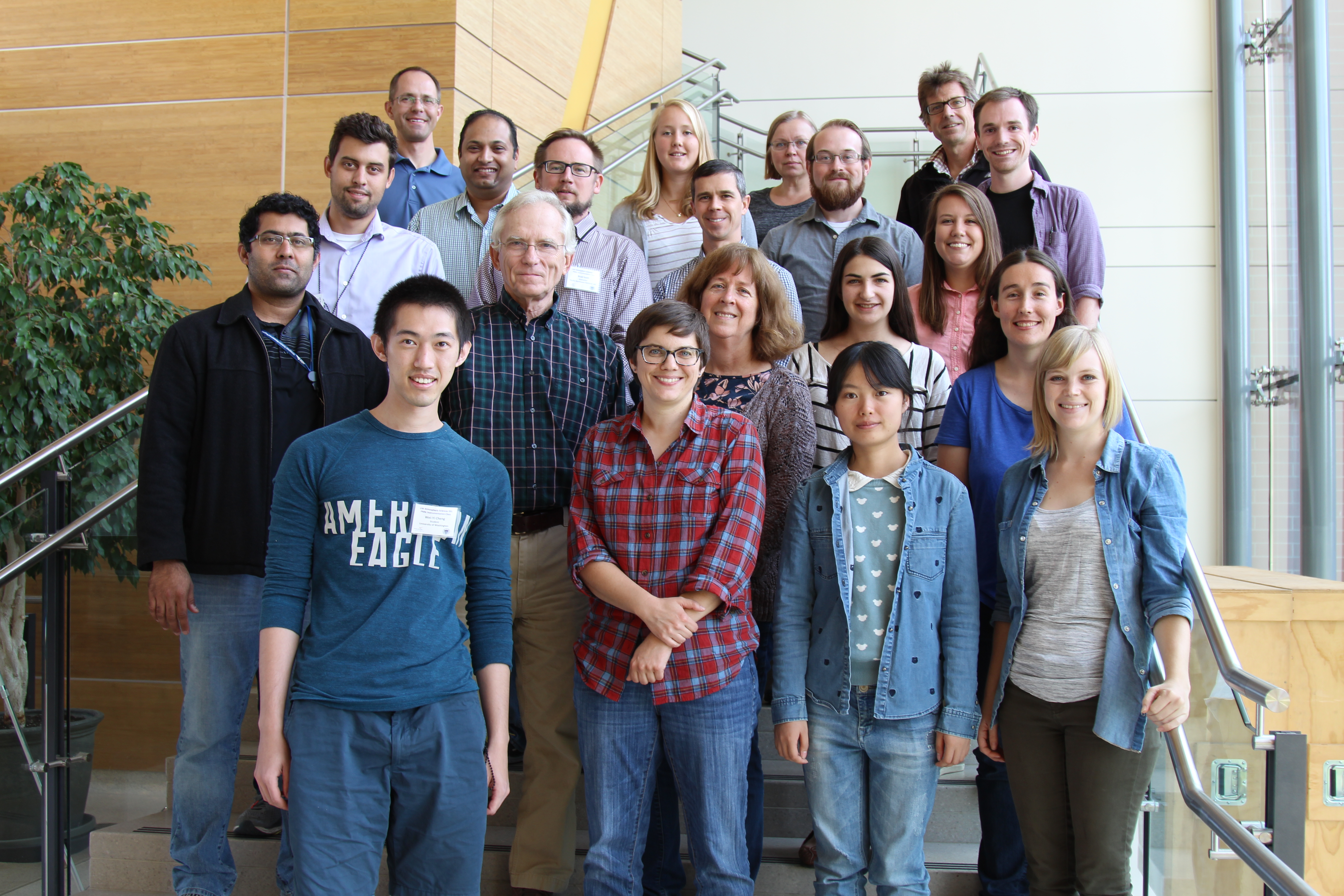
On Sept. 22, PNNL/UW class members and instructors gathered for a photo on the final day of their two-week instrumentation short course.
For a PNNL Paper, Kudos for High Citations
A paper on dengue virus infection co-authored by five PNNL researchers was just named one of the 25 percent most-cited articles in the journal PLOS Pathogens.

Aedes aegypti can spread dengue fever.
"Dengue Virus Infection Perturbs Lipid Homeostasis in Infected Mosquito Cells" was published in March of 2012. It identifies several lipid classes differentially regulated during dengue virus replication, along with a lipid repertoire that is inhibitory to viral replication. Knowing how dengue virus replicates by using cellular lipids and downstream signaling pathways is a step towards developing effective antivirals.
The study also foreshadows future comparative analyses of the human host and vector membrane environments required for viral replication.
Sharing authorship honors with five colleagues from Purdue University were PNNL's Giorgis Isaac (no longer at the Lab), Ronald J. Moore, Karl W. Weitz, Ljiljana Pasa-Tolic, and Thomas O. Metz.
Portions of the research were performed at the Environmental Molecular Sciences Laboratory.
September 2017
In Greenland, a Peripatetic Bottos at Bat for the Permafrost Team
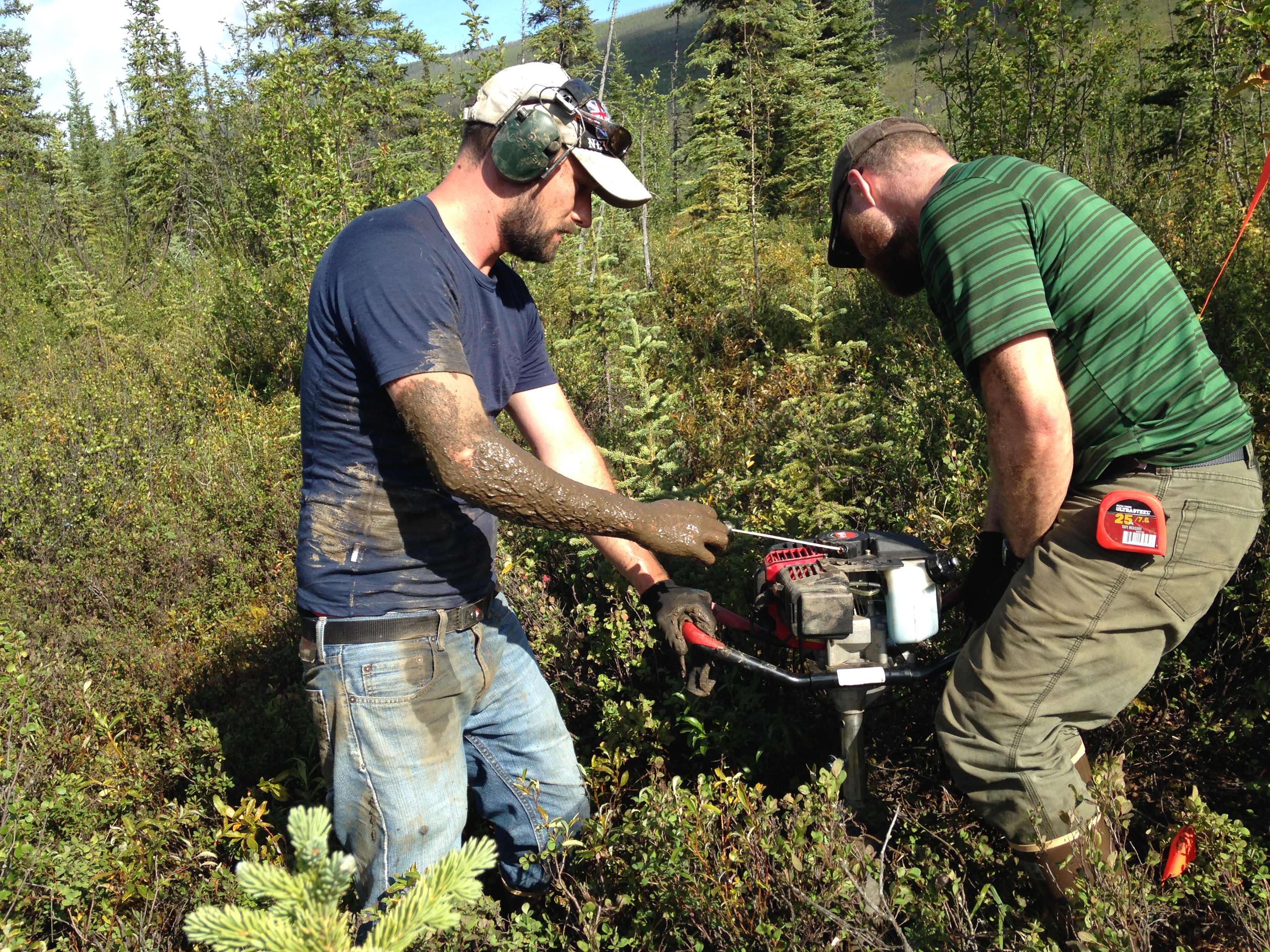
Postdoc Eric Bottos, left, and then-post-master’s soil scientist Alex Crump, right, extract a permafrost core near Fairbanks, Alaska in August 2015. Courtesy of Eric Bottos.
This is the first in a series of occasional features profiling postdocs in the Biological Sciences Directorate at Pacific Northwest National Laboratory.
In pursuit of his work, soil scientist Eric M. Bottos has traveled more than a little. He took a bachelor's degree in microbiology in his native British Columbia, then moved to McGill University in Montreal for his master's, where his research took him to the Canadian Arctic. Then came a series of opportunities to study in Antarctica. He has been there four times now, in stints of one to four months.
Most of those trips to the Southern Ocean continent were as a Ph.D. student at the University of Waikato in New Zealand. "It was a never a big plan," said Bottos of his peripatetic course of studies, upward through academe. "It just happened."
As a postdoc at PNNL, there was more travel. Bottos just moved back to British Columbia for an academic postdoc at his alma mater, Thompson Rivers University. But since February of 2015 he had been part of a PNNL team led by ecologist James Stegen. For almost three years they have been investigating microbial community composition in permafrost soils across an Alaskan boreal forest landscape. Such studies on a landscape scale are rare, said Bottos.
Their field site is the boreal forest ecosystem of the Caribou Poker Creek Research Watershed near Fairbanks, Alaska. It's a long term ecological research site that is representative of the discontinuous permafrost regions of that state's largely wild interior.
The team's focus - a soil type that has been frozen for two or more years - is globally consequential.
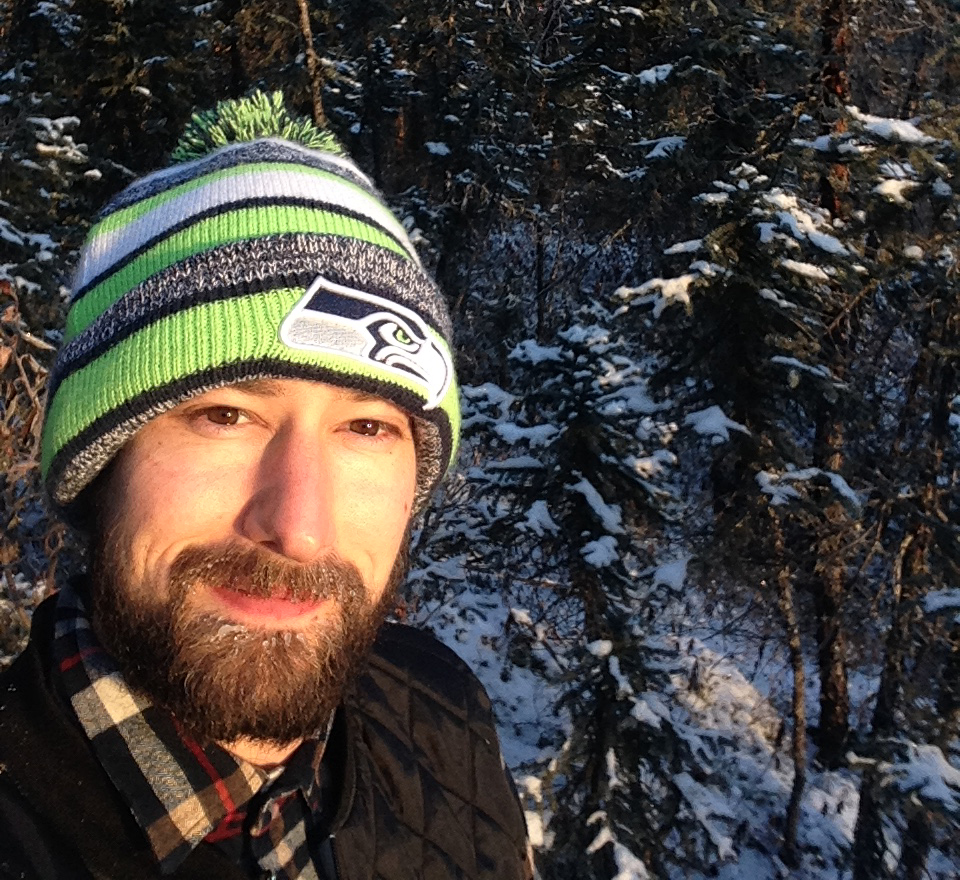
Out in Alaskan permafrost terrain, Bottos – a cold-weather research veteran – is bundled up. Courtesy of Eric Bottos.
Permafrost, which can in fact be frozen in place for hundreds or thousands of years, accounts for about 16 percent of Earth's soil environment. It also represents an important microbial ecosystem, and sequesters a globally significant pool of carbon that in the right conditions could be mobilized into the atmosphere.
"With warming, permafrost will thaw and the greenhouse gases produced - mainly carbon dioxide and methane - will be released," Bottos said. "The way the microbial community responds will have important consequences."
Off to Greenland
The Alaskan field work occasioned another episode of professional travel for Bottos. He represented the Stegen team and its latest research at the September 8-12 Polar and Alpine Microbiology (PAM) conference in Nuuk, the capital of ice-covered Greenland.
His talk's main messages were that permafrost microbial communities are highly diverse in composition; are highly variable over very short distances; and that their pre-thaw permafrost conditions are critical to represent in models. Depending on soil moisture, temperature, microbial taxa and other factors, permafrost may release carbon dioxide and methane at various rates.
Studying permafrost microbiology - one of the themes of this year's biannual PAM conference - plays into biology's longtime interest in extremophiles. But more pointedly, such study will improve the predictability of how microbes react to warming and other perturbations. "That's the biggest gain for the scientific community," said Bottos.
His 15-minute talk on the conference's first day was well received. For one, it drew a lot of interest in the null modeling and spatial observation systems pioneered by Stegen and used to infer the ecological processes that shape microbial distributions in permafrost.
This latest PNNL research, summarized in the PAM talk and represented in a paper finished in September, is the first to describe the factors and processes that influence permafrost microbial community composition across landscape gradients.
The PNNL researchers deployed four 104-meter transects along a hydrological gradient in the boreal forest ecosystem near Fairbanks. They extracted samples every few meters, which were transported back to PNNL frozen, homogenized in a laboratory, and then analyzed for organic matter composition, microbial taxa, and other factors.
Such spatially explicit studies are needed to inform models designed to predict how microbial communities respond to permafrost thaw, they say, and to estimate the fate of carbon in these vulnerable environments.
The Synergy of Laboratory and Field
Travel to far and sometimes challenging places is a mix of pleasure and hard work. (Digging permafrost cores in the Alaska interior is a high-sweat enterprise, but pay off nicely back in laboratory settings.)
Nuuk is just 150 miles south of the Arctic Circle, and getting there for the talk was an effort (though no augers were required). Bottos undertook a 30-hour trip each way, flying from Pasco, Washington, to Seattle, then on to New York City and Reykjavik, Iceland. From there came the final flight to Greenland, the world's largest island (Australia is a continent), which is covered by a permanent sheet of ice sheet. (Only Antarctica shares the same distinction.)
A colorful patch of houses on Greenland's rugged southwestern coast, tiny Nuuk is home to barely 17,000 people, set within what Bottos called a striking landscape of jagged coastal rocks and snowcapped mountains.
Touring was not the main order of business for Bottos, who listened to four days of presentations on issues related to the Earth's warming cryosphere. But he was outside long enough to get a sense that Nuuk resembled a fishing village in Eastern Canada and to see Greenlanders set up along the main streets to sell meat from fresh game. The ambient air provided the refrigeration.
Greenland in September hovers around zero degrees Celsius, and it only snowed once while he was there, Bottos said. But it was still an aptly chilly venue for a conference that convened about a hundred of the world's polar and alpine researchers. Most were from the UK and continental Europe. Others traveled from the United States, Canada, South Africa, and New Zealand.
All of them shared the pleasure, necessity, and challenge of travel to far places in the interest of science. It's important, said Bottos, "to be out in the system you're studying and trying to understand."
At Thompson Rivers University, he will teach, mentor new students, and help study microbial responses to the remediation of tailings from local gold and copper mines.
Bottos is also still part of several papers coming out of Stegen's permafrost project. That means there will be some travel back to PNNL from British Columbia. "I'll be rolling through," he said.
September 2017
HPC Meeting Sparks Local Interest in Future Supercomputers
While advancing science is a core goal at PNNL, the tools that impact how that science is performed, namely, high-performance computers, also pose their own distinct research challenges. To address some current and future computing questions, especially the potential of future system architectures, nearly 30 computer scientists met for the inaugural Data Vortex User Group meeting, organized by PNNL’s High Performance Computing group and held in Richland, Wash.

The two-day meeting afforded a forum for researchers to delve into the mechanics of future supercomputers and how to continually improve these systems to benefit vast areas of scientific research.
Local news stations KAPP/KVEW-TV covered the event, quoting John R. Johnson, Deputy Director of the Advanced Computing, Mathematics, and Data Division, who described how a computer now is a “very specialized scientific instrument for advancing our understanding of science for challenges in energy and the environment and national security.”
Read more in “Scientists travel to Richland to discuss the next generation of super computers.”
Related:
September 2017Bond-Lamberty Joins Scientific Steering Group of International Soil Carbon Network
Dr. Ben Bond-Lamberty of Pacific Northwest National Laboratory accepted an invitation to join the Scientific Steering Group of the International Soil Carbon Network.
The network coordinates independent soil carbon research in the United States and around the world, and maintains a database through which members can download or share soil carbon data. According to the network website, the Scientific Steering Group's purpose "is to define the major scientific questions and goals of the network, coordinate the sharing of scientific and logistical infrastructure, and decide upon the adoption of common scientific protocols." Bond-Lamberty is one of 21 members in the international group.
Bond-Lamberty works in College Park, Maryland, at the Joint Global Change Research Institute, a collaboration between PNNL and the University of Maryland. His research focuses on carbon and nutrient cycling in terrestrial ecosystems. Bond-Lamberty serves on the Environmental Research Letters Reviews Editorial Board and Plant and Soil editorial board. He is also a section editor of the journal Public Library of Science (PLOS) ONE.
August 2017Friction Extrusion Appears on Wikipedia
"Friction Extrusion is a thermo-mechanical process that can be used to form fully consolidated wire, rods, tubes, or other non-circular shapes directly from a variety of precursor charges including powder, flake, machining waste (chips or swarf) or solid billet. The process imparts unique, and potentially, highly desirable microstructures to the resulting products," according to Wikipedia. The ultra-popular free encyclopedia now has detailed information about this extrusion process, including the technical contributions of Pacific Northwest National Laboratory. The ShAPE machine purchased through the Materials Synthesis and Simulation Across Scales Initiative (MS3) at PNNL is featured, as are images of magnesium tubes and data taken by scientists working on MS3. Three journal articles published about work done by the MS3 are referenced. Additional publications by PNNL scientists, working for DOE's Vehicle Technologies Office, are mentioned as well.
August 2017Soil ‘as a Living Thing’
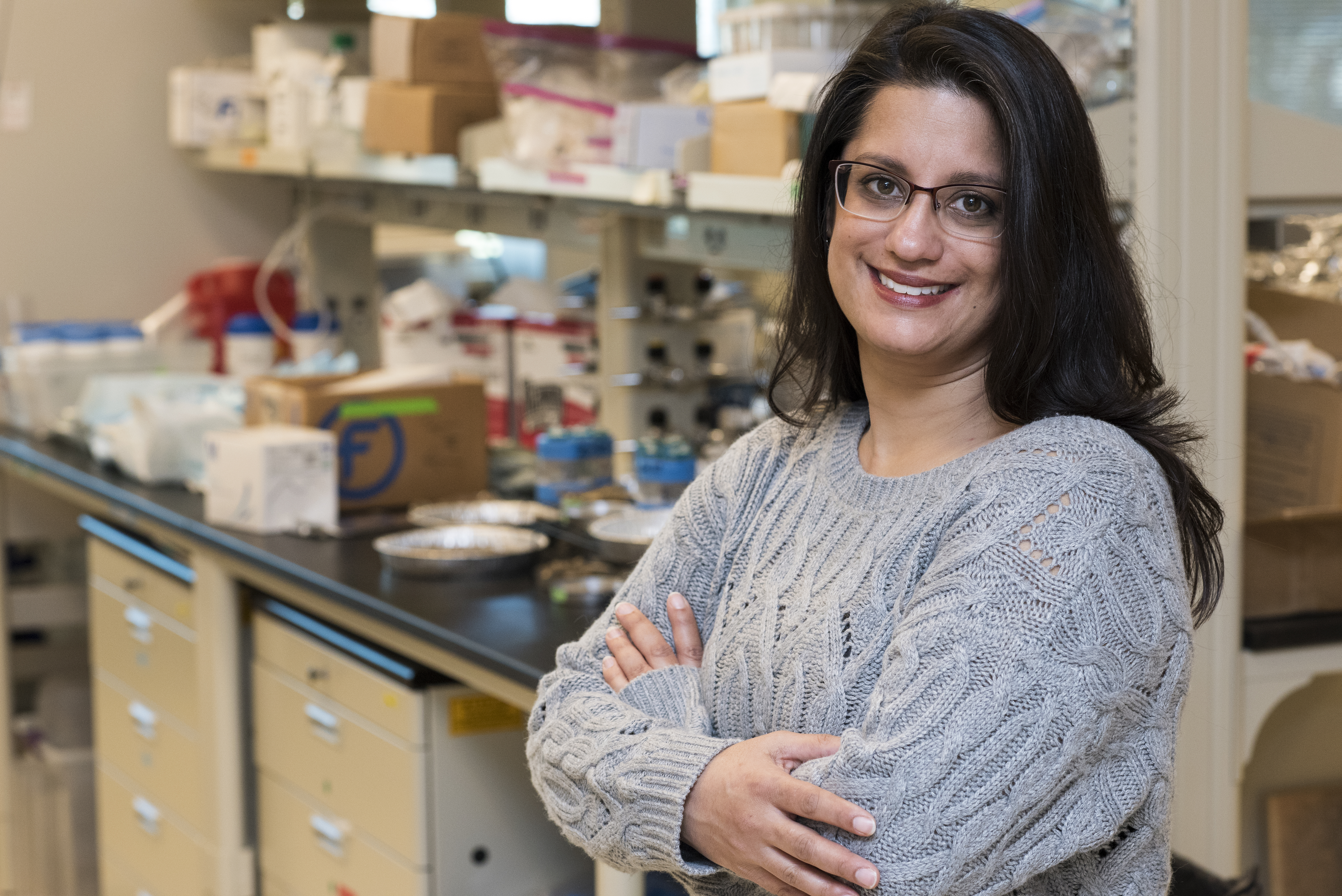
Vanessa Bailey, PNNL
Microbiologist Vanessa Bailey was among scientists quoted in a July 12 feature on the recent Ecology of Soil Health Summit in Fort Collins, Colo., a gathering supported by the North Carolina-based Soil Health Institute. The summit was held in conjunction with the biannual meeting of the Soil Ecology Society.
Bailey is an advocate of broadening the message of soil's foundational ecological importance beyond the soil ecology community. "It's important that we create this conceptualization of soil as a living thing," she said, and praised the idea of a soil health initiative because of its "visceral" appeal.
The feature, from the Colorado State University online magazine Source, also related the story of the university's post-summit Summer Soil Institute. With the 70-acre Borden Memorial Forest as a backdrop, the annual two-week intensive course uses the region's three separate ecosystems - steppe, farm, and mountain forest - to illustrate modern methods and topics in soil ecology, soil science, and the chemistry and physics of soil.
July 2017Greenland's Ice Sheet ‘Not Pristine’
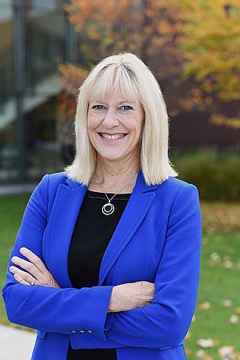
Janet Jansson, PNNL
Microbiologist Janet Jansson, who coordinates the Microbiomes in Transition initiative at the Lab, snagged the weighty final quote in a recent feature on the tech website Gizmodo. She agreed with the conclusions of a recent paper by researchers in Denmark, Greenland, the UK, and the Czech Republic: that the surface of the Greenland Ice Sheet is "not pristine" since it includes bacteria that resist or degrade toxic pollutants.
The authors of the study, published in the journal Environmental Research Letters, collected samples of "glacial surface debris" in five locations on the ice sheet, scanned then for genes linked to coping with pollutants, and concluded that "the ice sheet should not be considered a pristine environment." Moreover, the authors called for more research on the industrial contaminants that have been sifting onto the Arctic for decades, including heavy metals, pesticides, and polychlorinated biphenyls.
"I have been to Greenland," said Jansson, "and have personally seen how dirty the surface ice is on some regions of the ice cap, and how contaminants are concentrated."
She countered one critic of the study, who faulted the researchers for not comparing their samples to truly pristine "deeper core sections from before industrial revolution." Instead, said Jansson, the study's results "convincingly show that the Greenland ice sheet harbors microorganisms that have genes typical of microbes from other contaminated environments on our planet."
Jansson is a lead organizer behind the 2017 Multi-Omics for Microbiomes-EMSL Integration Conference slated for Aug. 1-3 in Pasco, Wash.
July 2017Protein Data Takes Significant Step Forward in Medicine
PNNL-OHSU team part of NCI effort to bring proteogenomics to cancer patients
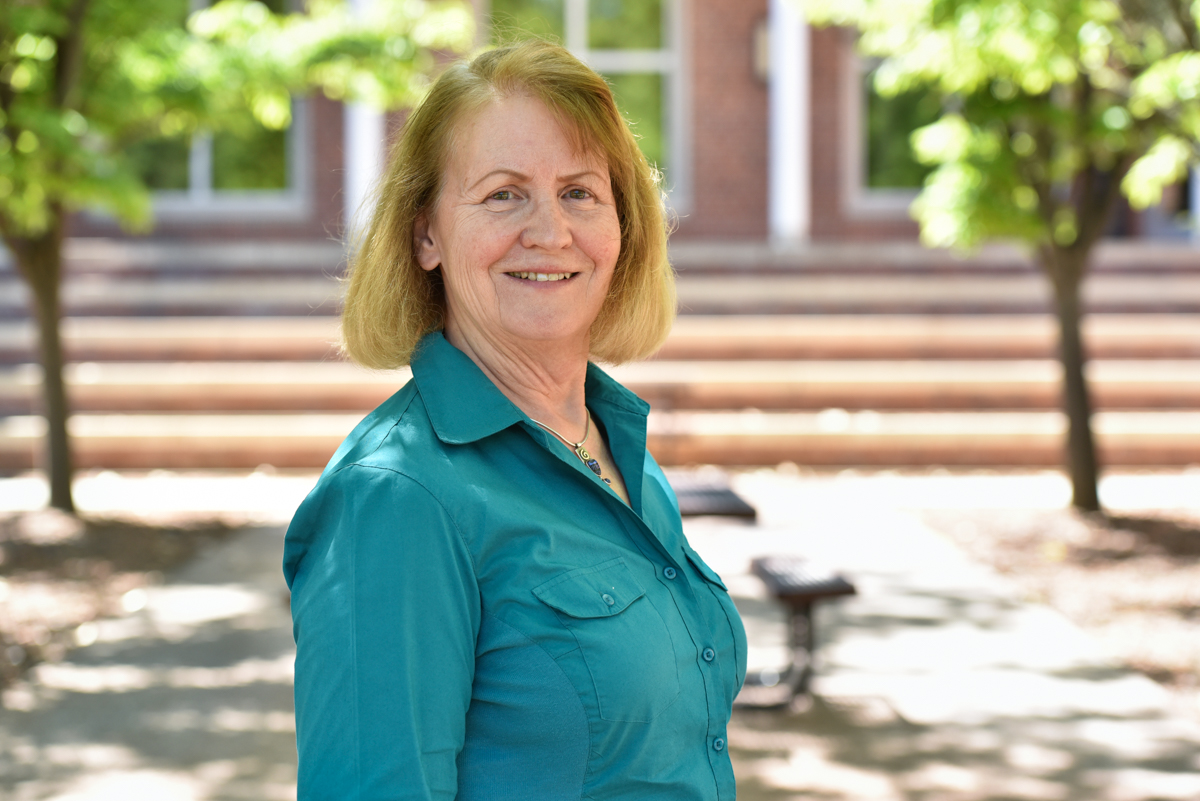
Karin Rodland, PNNL
The Department of Energy's Pacific Northwest National Laboratory is part of a nationwide effort to learn more about the role of proteins in cancer biology and to use that information to benefit cancer patients.
PNNL is paired with physicians and scientists at Oregon Health & Science University in one of three projects announced this week by the National Cancer Institute to bring detailed data about proteins to the bedsides of participants in current clinical trials. The OHSU-PNNL team is studying acute myeloid leukemia, the most common type of acute leukemia in adults. Other teams nationwide are focusing on breast and ovarian cancer.
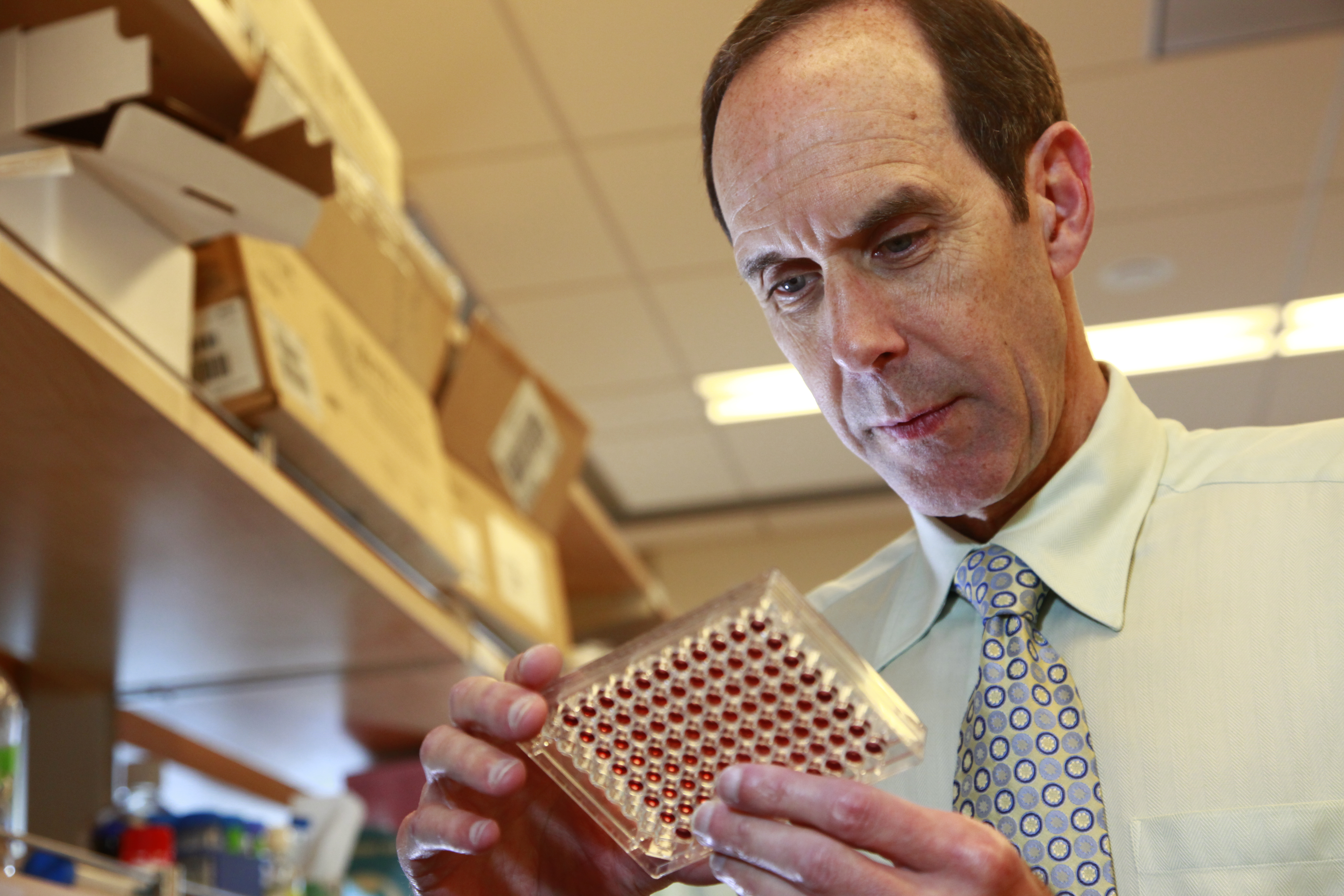
Brian J. Druker, Knight Cancer Institute
The study at the OHSU Knight Cancer Institute is sponsored by NCI and will include up to 200 participants. Physicians will look at the safety and effectiveness of several FDA-approved drugs that inhibit cell signaling that occurs in patients with acute myeloid leukemia. The study is led by physician Brian J. Druker, director of the Knight Cancer Institute, with funding from the Leukemia and Lymphoma Society. The PNNL portion of the study is led by Karin Rodland, chief scientist for biomedical research at PNNL.
Here is the full news release.
June 2017‘The Invisible Creatures Around Us’

Scientists estimate that more than 99 percent of all bacterial species remain unidentified. That makes these microbes a kind of biological “dark matter,” little known despite the essential roles they play in sustaining life, including Earth’s machinery for carbon and nutrient cycling.
Prominent in the search for what she calls this “black box” of scientific inquiry is microbial ecologist Janet K. Jansson, who was recently quoted extensively in a feature on microbes in Ensia, a magazine focused on environmental challenges.
The title comes right to the point: “Scientists Scramble to Understand the Invisible Creatures around Us before It’s Too Late.” The text itself begins by describing a Nature paper that Jansson co-authored last year on how microbial communities respond to wetting in the Namib Desert, a scorching expanse of sand and rock along the coast of southwestern Africa.
Of the five researchers in the feature, the PNNL scientist commands the most real estate – six paragraphs. “Precipitation is key to soil moisture, and moisture is a major driver of microbial activity in soil,” Jansson is quoted as saying at one point. “As precipitation patterns change, we want to know what’s happening to that carbon.”
The feature also mentions the Earth Microbiome Project, a 1,000-scientist open-source attempt to archive the planet’s microbial lineages. Jannson has a prominent role in that.
At PNNL, she directs the Microbiomes in Transition initiative, which is organizing a joint conference Aug. 1-3 with the Environmental Molecular Sciences Laboratory.
June 2017Novel Glimpses Into Early Lung Development

PNNL researchers are part of a national team creating a map of molecules in the lungs.
For most prematurely born infants, it's not their tiny size itself that makes life a struggle. Rather, it's the development of their lungs that spells the difference between life and death.
In a bid to learn more about the lungs to help such children, scientists around the nation are working together to develop a molecular atlas of the developing human lung during late pregnancy and early childhood. As part of the LungMAP project, scientists at the Department of Energy's Pacific Northwest National Laboratory have gotten one of the most in-depth looks ever at the developing lung, characterizing hundreds of lipids and thousands of proteins from samples as small as just 4,000 cells.
Read more in today's news brief.
June 2017McDermott's ‘Two Selves’
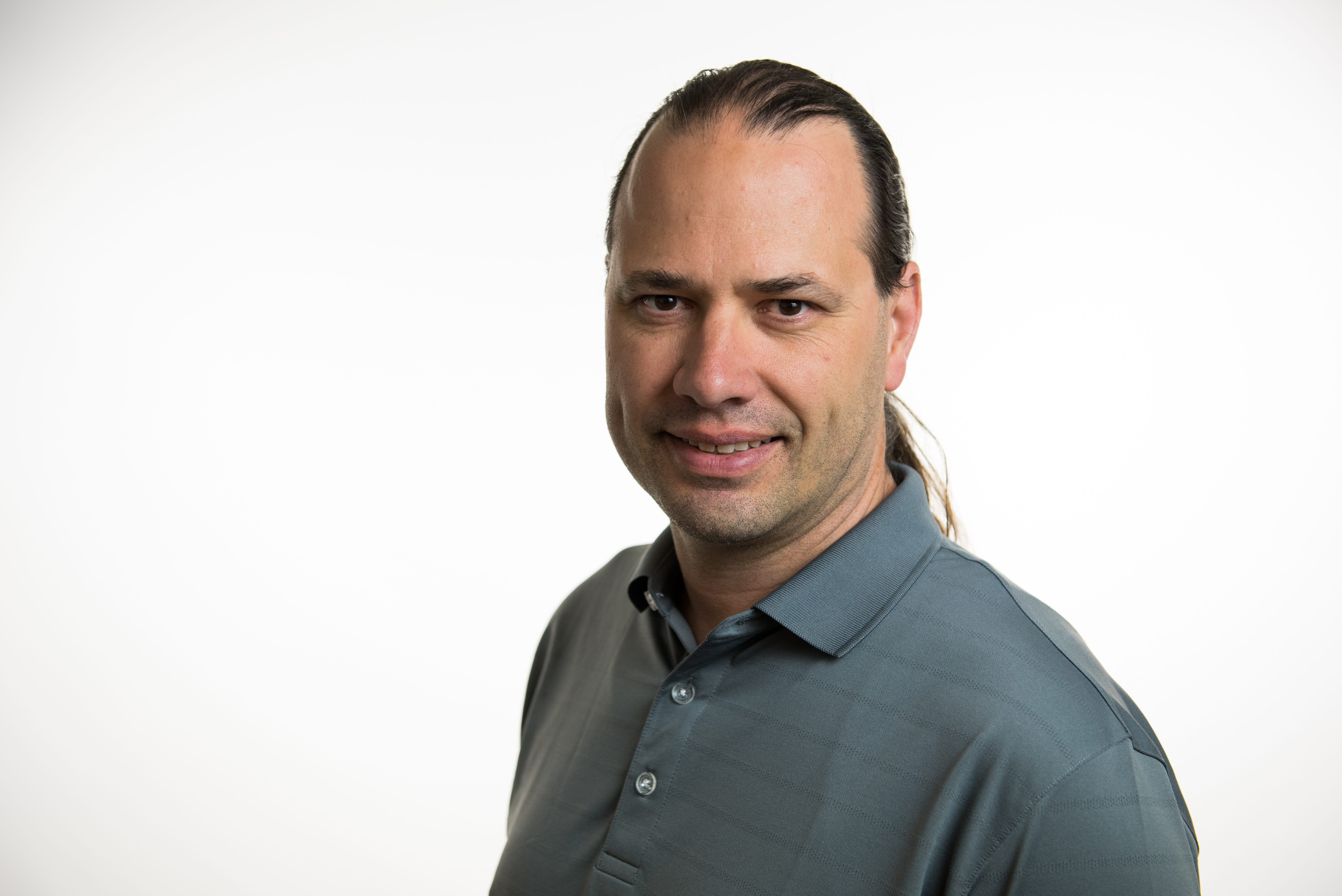
In his day job, senior research scientist Jason McDermott is a busy and productive computational biologist with years of papers to his credit.
He also pursues an avocation as the science cartoonist, blogger, tweeter, and humorist RedPen BlackPen. What he calls "the pleasures of my two pursuits" snagged him a "Working Life" feature in Science magazine. Aptly, it is titled "Drawing Connections."
"By blending my two identities, I hope to be able to bring some of the outreach power of comics to my science, and some of the weight of my scientific work to my comics," wrote McDermott. "I am a scientist who draws, I have decided, and I am at peace with my two selves."
In the feature, he also alluded to a comic-style poster he presented at a recent conference in San Francisco. Since May, the poster ("Big Data Land") has been on display in various PNNL venues.
In an audio companion piece to the Science feature, McDermott also got some air time in a "Science Update" podcast.
June 2017McDowell Quoted in Santa Fe New Mexican about Siberian Elms
Dr. Nate McDowell, Earth systems modeling scientist at Pacific Northwest National Laboratory, was interviewed by the Santa Fe New Mexican newspaper on the future of Siberian elm trees in the Southwestern United States.
Siberian elms can reach heights of 50 to 70 feet, have small, dark green, pointy leaves, and are valued for the shade they provide. But, because of their pesky root systems and fast-growing seedlings, they are classified as noxious weeds by the New Mexico Department of Agriculture. Unlike some of their counterparts, however, Siberian elms can survive difficult conditions such as a lack of moisture or long cold spells. While at Los Alamos National Laboratory, McDowell spearheaded a Southwestern tree study in which scientists found that 72 percent of the Southwest's needleleaf evergreen forests could die by 2050 because of drought or climate warming.
"It is a new world we live in, and elms are succeeding," McDowell told the New Mexican. "Do you really want to cut down something that is doing OK when other things are dying? That's a tough question, it's a public question. ... It is a cool question."
McDowell, who joined PNNL in March 2017, grew up in Olympia, Washington. He got his PhD in forest ecology from Oregon State University in 2002. McDowell's research focuses on plants and ecosystems, including internal and external controls over their carbon-water balance and their responses to environmental changes. He has served on the editorial boards of Tree Physiology, Canadian Journal of Forest Research, New Phytologist, and Frontiers in Plant Biophysics and Modeling, and has been a chief editor for special issues of New Phytologist and Environmental Research Letters. McDowell was a Fulbright Scholar in Slovenia through the University of Ljubljana and Slovenian Forestry Institute in 2010-11.
Related coverage: The Taos News, June 1, 2017
May 2017BBC Quoted Yang about Research on Dust-Wind Interactions in China
Dr. Yang Yang, an atmospheric scientist at Pacific Northwest National Laboratory, was quoted by the British Broadcasting Corporation about his research on dust and air pollution in China.
Yang was the lead author of a paper published by Nature Communications in which scientists found that dust promotes winds to sweep out manmade pollution. Without dust, the air doesn't move, so the pollution hangs around and builds up.
Yang told the BBC that two dust sources factor into the pollution in eastern China—the Gobi Desert in northern China and southern Mongolia, and the highlands of northwest China—but scientists found that the Gobi had a much larger influence.
"Less dust in the atmosphere causes more solar radiation to reach the surface," Yang said. "It weakens the temperature difference between the land and the sea, and impacts the circulation of the winds and causes a stagnation over eastern China, and that causes an accumulation of air pollution."
Research showed that, during the winter, reduced dust levels led to a 13 percent increase in human-caused pollution over eastern China.
The article quoted one of the paper's co-authors, Lynn M. Russell of the Scripps Institution of Oceanography in La Jolla, California. PNNL researchers Sijia Lou, Ying Liu, Balwinder Singh, and Steven J. Ghan also collaborated on the research.
Yang, who joined PNNL in April 2016, got his PhD from the Chinese Academy of Sciences' Institute of Atmospheric Physics in 2014. His thesis was on the simulation of air quality-climate interactions in China. His research interests include the chemistry, movement, and deposition of gases and atmospheric particles; extreme haze events; and the role of weather on regional air quality.
May 2017Shaw, Dutta Highlighted in Nature Energy and ChemistryViews
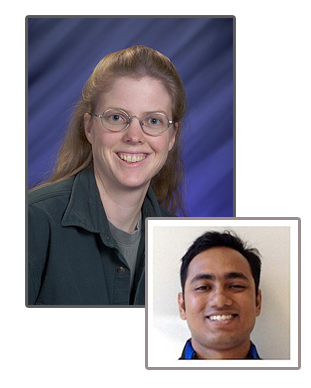
Wendy Shaw, Arnab Dutta
Dr. Wendy Shaw and Dr. Arnab Dutta at Pacific Northwest National Laboratory and their colleagues from France had their work highlighted in Nature Energy and ChemistryViews. The highlights, "Fuel Cells: Bio-inspired design" and "Platinum-Free Hydrogen Oxidation," describe the team's work on integrating a synthetic catalyst into proton exchange membrane fuel cells.
Hydrogenases are natural catalysts that drive the reversible conversion of protons into hydrogen. These reactions can be used in a fuel cell to produce electricity without fossil fuels.
The team examined these natural catalysts and produced a nickel-based catalyst that is easier to produce than hydrogenases. In addition, the synthetic catalyst can operate at conditions that would disable its natural counterpart.
To learn more about the research, see the article in Angewandte Chemie International Edition.
May 2017Maoyi Huang's Research Featured in Blog EnvironmentalResearchWeb
Dr. Maoyi Huang's recent research on water systems' changes over the lower 48 United States was featured in an Environmental Research Letters journal blog, "US Set to See Significant Changes in Surface Water Resources."
The blog describes the research performed by Huang and PNNL colleagues Guoyong Leng, Nathalie Voisin, Xuesong Zhang, Ghassem Asrar, and L. Ruby Leung, to understand how ‘normal' surface water conditions may change in the future because of climate change forces. They found that more than 40 percent of the conterminous United States will see significant changes in summer and winter runoff by the end of the 21st century. The changes will pose a significant challenge for water management issues in almost half of the USA's lower 48 states caused by 'new normal' conditions in surface water systems.
Huang earned her Ph.D. in Civil and Environmental Engineering in 2005 from the University of California at Berkeley, with a focus on surface water hydrology and land surface modeling. Her research at PNNL focuses on studying carbon, water, and energy budgets at regional scale. She is developing land surface and hydrological models at watershed scales to implement them within coupled land and atmospheric systems.
Related PNNL highlight: Consider the Probabilities
February 2017Hailong Wang's Expertise Tapped for Guardian's Arctic Soot Reveal
Reducing soot emissions to the Arctic would be a ‘quick win,' said an article in The Guardian online. Sought for his research knowledge, Dr. Hailong Wang contributed to the story by citing both observational and modeling evidence: soot is warming the Arctic. The article "Why cutting soot emissions is 'fastest solution' to slowing Arctic ice melt," published online in December, reviewed why cutting soot emissions may be the cheapest and fastest way to combat climate change.
"The warming effect could be through the direct heating to the air, snow and sea ice by absorbing sunlight, and then accelerating the melting of snow and sea ice," Wang said. "When the melting starts, there are positive feedback processes that can lead to even faster melting."
The positive feedback Wang spoke of is the effect when melting starts, forces are set in motion to speed up the melting. The warming reinforces itself.
"Unlike greenhouse gases, soot particles are relatively short-lived in the atmosphere," said Wang explaining a key difference between greenhouse gases and soot. "The average lifetime is around a week or two," said Wang. "New snowfall [can also] cover them [the soot particles] pretty quickly."
The article also explains that near-term warming is a problem requiring speedy solutions. But the benefits can happen relatively quickly.
Wang is a climate modeler focused on atmospheric particles such as soot, and how they travel around the globe and end up in the Arctic. He led the development of a source-tagging technique in a global climate model that quantifies the source-receptor relationships of carbon-based particles to understand their effects on climate warming. He holds a PhD from the University of Illinois at Urbana-Champaign.
Related highlights: The Down and Dirty About North American Snowpack; Playing ‘tag' with pollution lets scientists see who's it.
January 20172016
Ghassem Asrar Quoted in EOS on Way Forward
Dr. Ghassem Asrar of Pacific Northwest National Laboratory was quoted in an Eos article after the close of the American Geophysical Union's 2016 Fall Meeting. The article, "Scientists Ponder the Way Forward Under Incoming Administration," questioned several attendees at the meeting to sample reactions to the recent U.S. national election.
Asrar believes in using science to serve humankind. "Earth observations provide societal and economic benefits, for example, for agriculture, fishing, and shipping. It's [about] how we can take advantage of science and technology to serve us and the rest of the world," he said.
Asrar is the director of the Joint Global Change Research Institute located in College Park, MD, an organization jointly sponsored by PNNL and the University of Maryland. His research focuses on understanding earth science using remote-sensor capabilities, including Earth-orbiting satellites, to provide fundamental insights into the connections between Earth's land, oceans, atmosphere, ice, and life. In previous positions, he has served as Director of the World Climate Research Program, the Agricultural Research Service, the U.S. Department of Agriculture, and the U.S. National Aeronautics and Space Administration.
With advanced degrees in soil biophysics, civil engineering and environmental physics from Michigan State University, Asrar commands a broad understanding of Earth and climate change topics.
December 2016PNNL's Steven Smith Quoted on Coolant's Hot Topic
Scientists are exact with their numbers. Many others—including some politicians—tend to round. In Kigali recently, political leaders leveraged a 0.5°C potential savings in global warming to adopt policies that will limit the use of hydrofluorocarbons (HFC) worldwide. Some scientists, although they are in favor of the policy, thought the number was unscientifically ambitious.
Science Magazine turned to Pacific Northwest National Laboratory's climate modeling specialist Dr. Steven J. Smith of the Joint Global Change Research Institute, for some insight. Regarding the scientists' work, Smith said. "They've clearly done the best work on this to date."
The work he's referring to comes from a 2013 paper that forecasts how as developing countries use more refrigerating coolant, the HFCs will push global temperatures up 0.35°C to 0.5°C by 2100. These numbers, according to the article, are substantially higher than HFC warming made by other climate models.
Smith also told Science that more sophisticated models that offer a range of possible futures, such as different patterns of economic growth, could improve such estimates.
November 2016Article Makes Analyst 2016 ‘Hot Original Research’ List
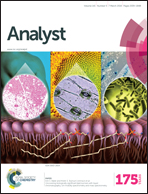
PNNL research snags the March cover of Analyst.
A team of researchers at PNNL are warming to the news that a January article of theirs was named to a list of "hot original research articles" of 2016 by Analyst, the journal of the Royal Society of Chemistry. "Hurray," said bioanalytical chemist Erin Baker in an email, "it has been a good week."
Grabbing the honor for them was "Uncovering biologically significant lipid isomers with liquid chromatography, ion mobility spectrometry and mass spectrometry." The paper outlines a breakthrough analytical technology approach to analyzing the biological roles lipids play. It is known, for instance, that lipid metabolism is linked to type 2 diabetes, cancer, and lipid storage disease.
But getting to the functional details of those links is problematic. Mass spectrometry, the currently dominant approach for analyzing the lipidome, presents challenges when used by itself. But coupling it with liquid chromatography and ion mobility spectrometry as described in the manuscript shows great promise for enhanced measurements.
Baker and biochemist Kristin Burnum-Johnson were the corresponding authors. Lipidomics expert Jennifer Kyle was the lead author.
Other scientists at PNNL share credit for the paper: Xing Zhang, Karl Weitz, Matthew Monroe, Yehia Ibrahim, Thomas Metz, and Richard Smith. The paper also included collaborators from Cincinnati Children's Hospital and the University of Washington.
October 2016Fredrickson on the “Chemistry of Microbiomes” Seminars
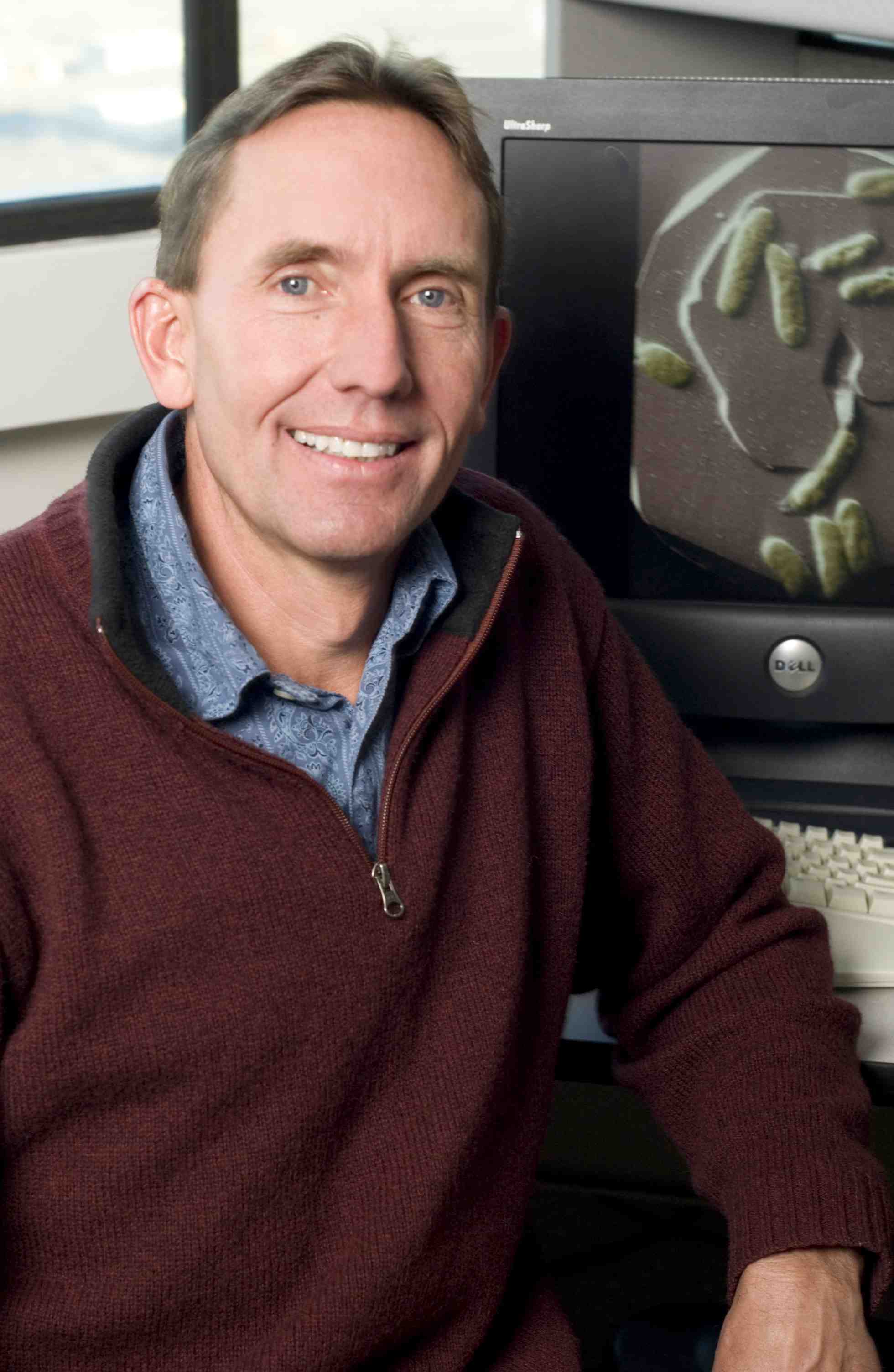
Microbes make up most of the planet's biomass, living in collaborative communities called microbiomes, which thrive on land, at sea, and within ourselves. They catalyze chemical reactions affecting the health of the Earth's ecosystem and of every human. But many mysteries remain for scientists studying these little worlds of large import.
"The Chemistry of Microbiomes" will help. PNNL geomicrobiologist and Laboratory Fellow Jim Fredrickson said the next seminar in the series will be webcast from 2 to 5 p.m. (ET) Wednesday Oct. 19 in Washington, D.C and will focus on the microbiome of marine habitats. It is the second of four seminars sponsored this fall by the Chemical Sciences Roundtable at the National Academy of Sciences and by the Department of Energy. (On the roundtable board is Allison Campbell, Associate Laboratory Director for Earth and Biological Sciences at PNNL.)
Fredrickson is on the planning committee and is one of three chairs in the series. In September, he oversaw the first seminar, on the terrestrial microbiome. This "expansive and diverse" habitat for microbes, Fredrickson explained to a combined audience of 180, includes niches within the Earth's crust, in soils, and in terrestrial-aquatic interfaces - "very special regions," he said, and "very important factors for sustaining the environment."
Importantly, there are also the Earth's little appreciated subsurface terrestrial microbial habitat, Fredrickson said, where there is "more biomass beneath our feet than exists collectively on the rest of the planet." His remarks, along with three other expert presentations, were captured on video.
Following the Nov. 9 seminar (on the human microbiome), Fredrickson will speak at an all-microbiome final seminar on Dec. 7. A proceedings on the whole series, he said, will be published "sometime after the first of the year."
October 2016For NAS, Jansson Weighs in on Microbiomes of the Built Environment
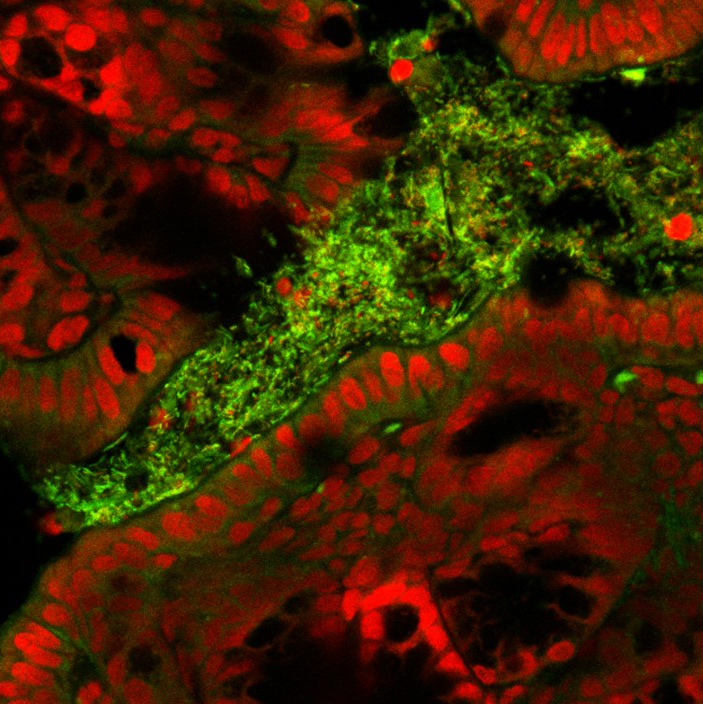
Mouse gut cryo-section, showing the host intestinal epithelial cell nuclei (red) and the bacteria in the lumen (green).
Microbiologists fervently study the teeming and complex microbiome of both soils and the human gut. But not so much the interiors of the built environment, where most humans spend 90 percent of their time. Homes, hospitals, workplaces, transit systems, and other constructed interior spaces are similarly inhabited by ubiquitous and invisible communities of bacteria, viruses, and fungi.
Microbial ecologist Janet Jansson is part of a 20-month study underway on microbiomes of the built environment sponsored by the National Academy of Sciences (NAS). Executing the study, in part through a series of national meetings, are experts in microbial ecology, building science, public health, and related fields. On Oct. 17 and 18, Jansson - a renowned researcher of both soil and gut microbiomes - will be at the University of California, Irvine for NAS's third meeting on the issue.
The largely mysterious life of microbiomes within built environments is both important and little studied (though the effects of indoor mold are well known). Inside constructed environments, most microbial communities are non-pathogenic, thriving peacefully on surfaces and within air and water systems. Nonetheless, resident microbiomes can have both good and bad effects on how long built environments last, how energy efficient they are, how they must be maintained, and how conducive they are to human health.
During the meeting's first panel, Jansson will be the first of three scientists delivering remarks on how the built environment responds to "context and perturbations". She will discuss microbial community response to environmental conditions, and will describe the research mission of Microbiomes in Transition, an initiative she directs at PNNL.
The dynamics of microbes in the built environment were also explored at a 2015 symposium held by the American Association for the Advancement of Science.
October 2016
IEEE Pulse Profiles Microbial Ecologist Jansson
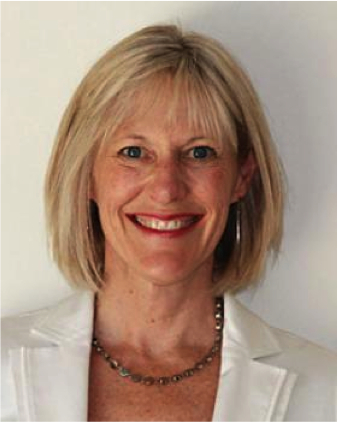
PNNL microbiologist Janet Jansson, a leading international figure in microbiome research, was profiled in the latest issue of the journal IEEE Pulse. "Omics Tech, Gut-on-a-Chip, and Bacterial Engineering" featured three new approaches to studying a suite of gastrointestinal illnesses called inflammatory bowel diseases (IBDs), which impact at least 1 million Americans and many more worldwide.
In the lead profile, Jansson represented those researchers investigating such diseases by using omics technologies - uncovering the DNA sequences, expressed genes, and metabolite signatures used to reveal links to microbial functions in the gut. At PNNL, she leads research into the microbiome, a term for the collective communities of microbes that reside in many environmental niches, including the human gut and soil.
To address IBD, Jansson's team has collaborated with bioinformaticians to integrate overwhelming amounts of new genetic data, and has published studies comparing healthy microbiomes to those in IBD patients - all with the aim of future diagnostics and potential new therapies, she said.
Six years ago, Jansson was part of a landmark case demonstrating the use of fecal transplantation to counter diseases of the human gut affected by dysfunctional microbial communities. She participated by profiling a patient's gut microbial community both before and after the transplantation.
"In that case, the patient was in really bad shape," Jansson told the journal. She was losing weight, wearing diapers, and unresponsive to antibiotic treatments.
The positive outcome "was a wonderful and rather unusual example of introducing a microbial community into a new environment," said Jansson, "where it was able to establish and have a major impact." Since then fecal transplants have been successful in treating infections by the bacterium Clostridium difficile.
Beyond that, Jansson and her colleagues are investigating the impact of a high-fiber diet on the gut microbiome. Such a diet appears to encourage a higher percentage of beneficial organisms. Her PNNL team uses multi-omics to identify the proteins and metabolites made by those beneficial organisms. Ultimately, she said, a "designer diet" could be used to optimize a person's gut microbiome.
Also featured in the story were two researchers at the Wyss Institute for Biologically Inspired Engineering at Harvard, Donald Ingber (for his "gut-on-a-chip" model of intestinal inflammation and bacterial overload) and Pam Silver (for her her work on engineering bacteria as biomarkers of inflammation).
Jansson got the feature's last word, noting how important it is to address diseases so prevalent in those who follow a Western diet - and how important it is to understand the connection of such diseases to the microbiome.
In the course of the IEEE Pulse feature, she joined the Wyss Institute's Silver in being impressed by the number of disease phenotypes linked to the gut microbiome, pointing to suggestive studies on autism, certain cancers, and rheumatism. Jansson is also leading an investigation funded by the Office of Naval Research on how the gut microbiome influences the brain.
October 2016Arun Devaraj Featured in PNNL Director's Column in Tri-City Herald
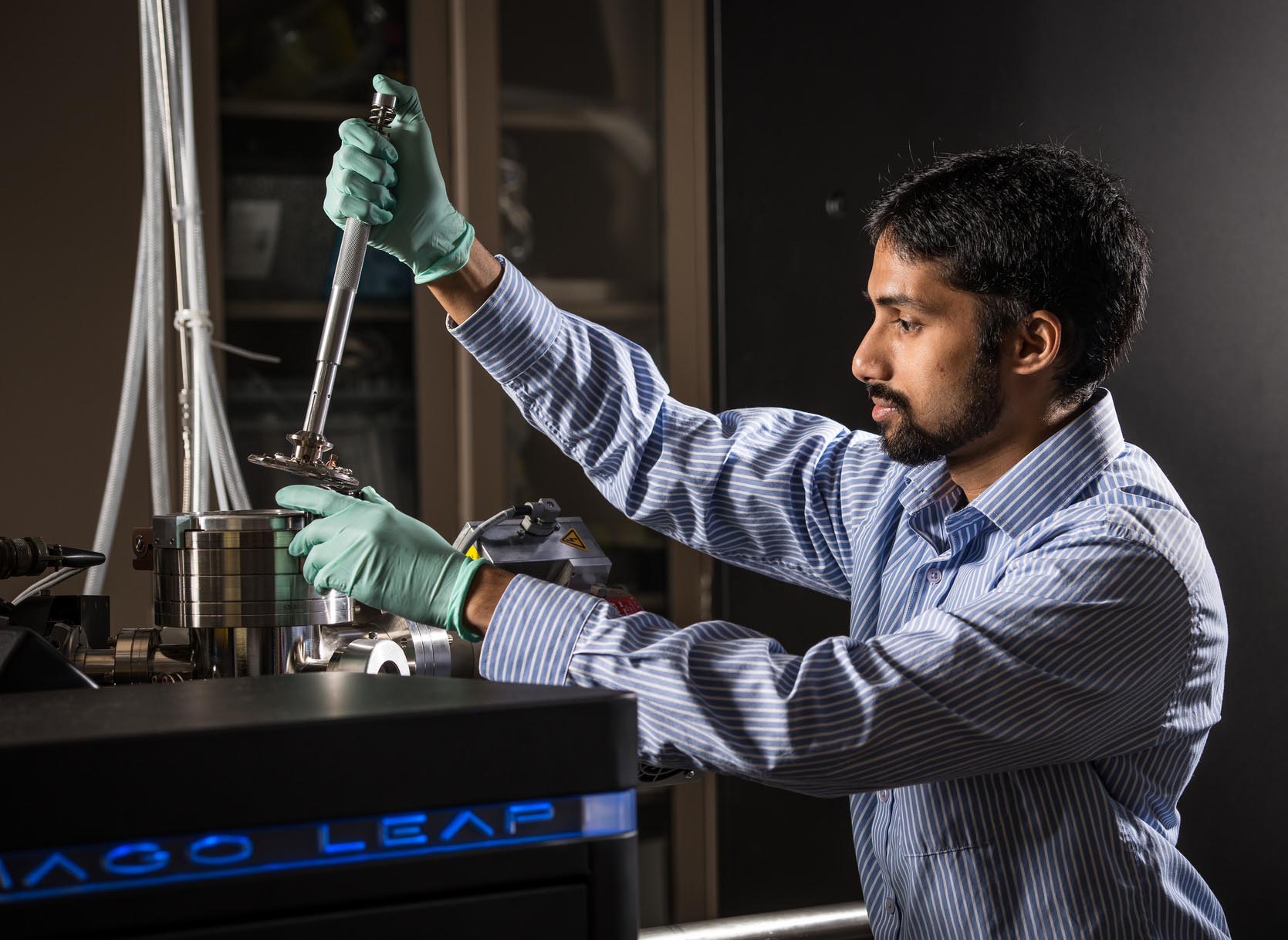
Arun Devaraj using an atom probe tomography system, or APT, one of the specialized instruments at EMSL, to create an atomic map of how individual atoms in a titanium alloy are arranged.
Pacific Northwest National Laboratory materials scientist Arun Devaraj was featured in Lab Director Steve Ashby's monthly column in the Tri-City Herald. In "Making better stuff," Ashby described materials research at PNNL.
Arun and his colleagues at PNNL use atom probe tomography, a high-resolution 3-D imaging capability, to study automotive and energy materials. The insights about these materials and their behavior can help scientists and engineers achieve lightweight vehicles and help develop new energy storage technologies. Arun began working at PNNL as a postdoctoral researcher in 2011 and became a senior research scientist in 2012.
September 2016ISME16, Now History, ‘The Most Epic Thing Ever’
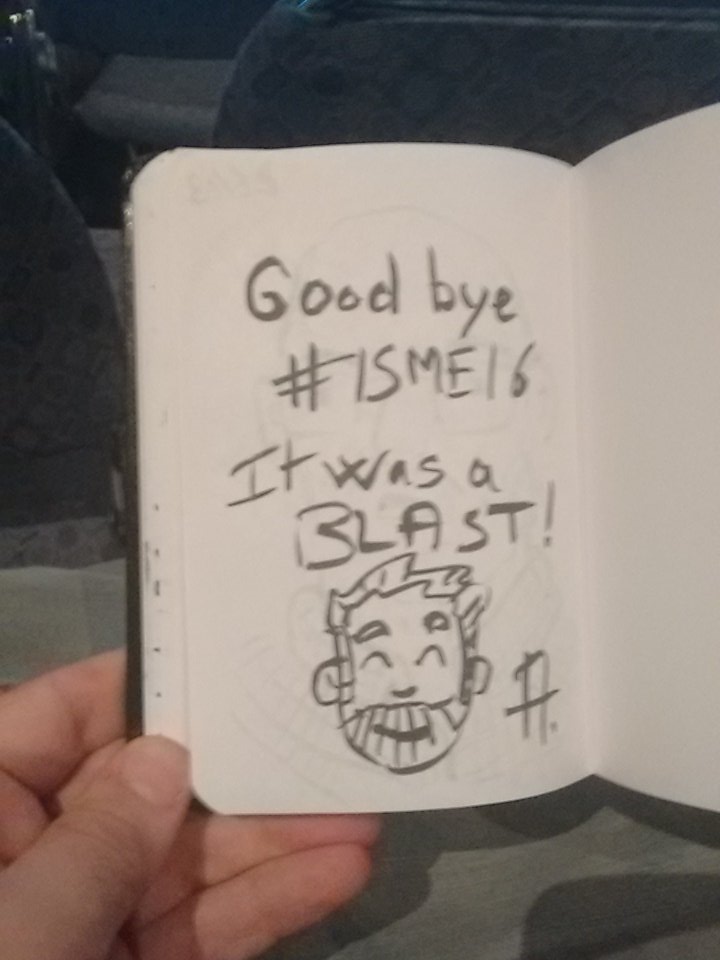
French microbiologist Adrien Assié sketched his way through ISME16, and departed on Friday with this tweeted sentiment.
All good things must come to an end, even the 16th international symposium hosted by the International Society for Microbial Ecology (ISME) from Aug. 22-26 in Montreal.
Society president Janet K. Jansson joined 14 other PNNL researchers at the signature event, held every two years. With the vast Palais des congrès de Montréal as a venue, the conference celebrated professional exchange and education with over 300 presentations, 800 posters, and more than 2,100 attendees from around the world. It was the largest symposium in the society's 40-year history.
By the end, there were some strong reactions. "ISME16 was without a doubt the most epic thing ever," wrote Biological Sciences Division post-doc Richard A. White III in an email. "No other conference is even in the same ballpark. Or will even be close to it - WOW!" A prolific author already, he works with Jansson on advances in analyzing soil microbiomes.
Over the five days of ISME16, a garden of tweets grew up and flourished on the internet. After one particularly lively session, one researcher tweeted, "Mind = Blown (for the 100th time this week)."
Mary S. Lipton, a senior staff scientist at PNNL, had a role in the mind-blowing magic. On Friday (Aug. 26), the conference's last day, she took to the podium with "Deciphering microbial community interactions through succession," which acknowledges 17 PNNL co-authors.
The talk confronted a stubborn fact: Microbial communities, and the autotroph-heterotroph interactions they rely on, influence biogeochemical cycles on a global scale. But the molecular mechanisms behind these interactions are largely unknown. After all, highly diverse and complex natural systems are very difficult to control in laboratory settings. To elucidate the principles governing these natural systems, researchers need them to be "tractable" - that is, easy to control.
To address that challenge, Lipton explained, the PNNL researchers developed an experimental platform that simplifies manipulation and observation. This model consortium of autotrophic and heterotrophic microorganisms experiences metabolic shifts over a 28-day succession cycle. In seven-day intervals, researchers recorded the consortium's patterns of organism abundance and protein expression. Next, she said, the researchers will use metabolic models of other consortia to infer "interaction maps."
On the PNNL campus, Lipton is the capability lead for mass spectrometry at the Environmental Molecular Sciences Laboratory (EMSL). So a plug was in order for the specialized capabilities at this national scientific user facility. One of her slides listed 23 EMSL instruments, specialties, and other attractions, from confocal microscopy and cell isolation systems analysis to microfabrication fluidics.
Lipton was in good company among those making Friday presentations. Other researchers touched on cellulose degradation in landfills, cow-gut resistance to antibiotics, iron cycling in lake snow, fungal gardens, plant-microbe interactions, leaf bacterial diversity, fleshy algae in coral reefs, microbial carbon capture systems, and the bounteous life of microbes in Antarctica's frigid, hypersaline Lake Vida.
University of Colorado evolutionary biologist Noah Fierer packed the house with a talk on how perturbed soils survive. Steven Biller, a research scientist in the Chisholm lab at the Massachusetts Institute of Technology, spoke about extracellular vesicle production in marine bacteria. And microbiologist Adrien Assié (@m3thyl) dove into his cool ocean research into epibionts that live on the surface of a genus of deep-sea mussels called Bathymodiolus. It was Assié who also sketched his way through the conference, then broadcast his quick portraits of presenters via Twitter.
"Fantastic meeting!" tweeted PNNL's Vanessa Bailey, crediting Jansson and her ISME16 team. She used another tweet to comment on a sketch by Assié, who trained in France and works in Germany. At the conference, a long line of posters listed attendees by country.
"At any given time," said White, the PNNL post-doc, "I was talking with a group of scientists from five different continents."
Friday afternoon presentations by two keynoters drew big crowds. Molecular biologist Siv Andersson of Uppsala University in Sweden, who studies how intracellular bacteria and organelles evolve, delivered a plenary talk on bacterial symbionts, including an explanation of why mitochondria contain a genome. McMaster University health science researcher Gerard D. "Gerry" Wright told the science story of antibiotic resistance. To microbes, he observed, antibiotics are more weapons than anything else.
Heavy stuff. But more than one tweet busted the many scientists who used Montreal and ISME16 to play the mobile game Pokémon Go. Someone else took the time to invent a 16-square "ISME Bingo." Among the choices: "n=1," "acronym for new tool," and "mockery from outside fields (e.g., physics)."
At day's end, Jansson gave out poster awards, with James Blunt's "You're Beautiful" as a soundtrack. She also handed over the ISME reins to incoming president Colin Murrell, a British environmental microbiologist who teaches at the University of East Anglia. "There is one person we really need to thank - Janet Jansson," he told her on stage. "We've been extremely fortunate to have your guidance."
ISME17 will be held in August of 2018 in Leipzig, Germany. And in 2020, ISME18 - "Brilliant!" one tweeter crowed - will be in Cape Town, South Africa.
By Friday evening the ISME16 Twittersphere had quieted. But one researcher tweeted that he would remember the symposium this way: "peeking in on all the cool stuff."
August 2016At ISME16, It was Time for Young Researchers to ‘Poster Up!’
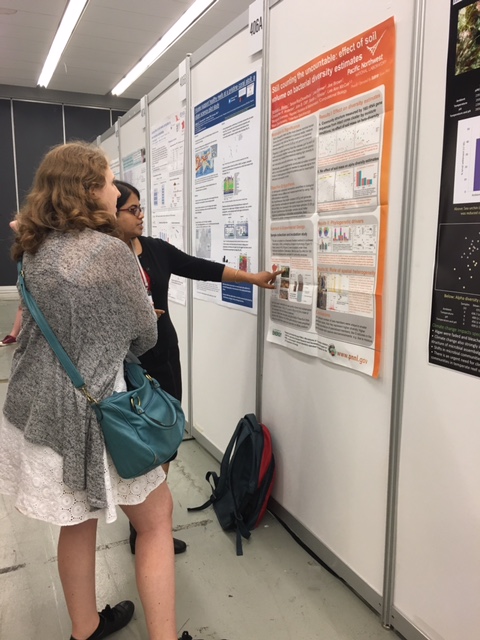
PNNL post-doc Taniya Roychowdhury, who was first author on two of the laboratory’s 10 main posters at ISME16, talks to a viewer at the Montreal conference.
At professional conferences, posters are a chance for mostly young researchers to strut their science stuff when they can't chair a roundtable or present a full lecture.
So it was on the second-last day of this year's 16th international symposium on microbial ecology hosted by the International Society for Microbial Ecology in Montreal. During the Aug. 22-26 symposium (Monday, Tuesday, and Thursday), 500-plus posters were on display, including 10 offerings by PNNL lead authors and 13 others that listed PNNL contributors.
On each of those three days three outstanding posters were chosen as ISME16 winners. PNNL researchers were not among those. But the nine winning authors got free 2017 ISME memberships, opening the way for them to attend the 2017 symposium, slated for August in Leipzig, Germany.
During the day, considerable last-minute energy around posters tore up the Twitter airwaves. Dozens of pictures stormed into sight, along with pleas to take a look. "Shameless promotion time," one began. "Tonight! Tonight!" another promised. Then came the classic "Poster up!" which was followed by an invitation to chat about growing fungi in microfluidic systems.
One tweeted image said it all about the week's good-natured poster competition. It showed two post-docs having a boffo sword fight. With, of course, rolled-up posters.
Many poster topics were certainly compelling. They included investigations of boreal shield lakes, urban soil bacteria, and the skin microbiome of cohabitating couples.
Among PNNL posters, sober and deep ruled the day. Here are the 10, with only lead authors listed:
- "MetFish: A suite of chemoselective tags combined with tandem mass spectrometry for quantitative and comprehensive metabolomics analyses in extreme ecosystems." Chengdong Xu (now at Hexion, Inc.; corresponding author Thomas Metz).
- "Carbon mineralization through alcohol production in high-carbon freshwater sediments." David Hoyt.
- "Emergent responses of microbial partnership; acclimation and coordination in a model phototrophic-heterotrophic consortium." Hans Bernstein.
- "Changes in microbial community and metabolite composition in permafrost thawed under aerobic and anaerobic conditions." Eric Bottos.
- "Still counting the uncountable: effect of soil volume size on bacterial diversity estimates." Taniya Roychowdhury.
- "Prediction of interspecies interactions in model complex microbial consortia using a combined analysis of species abundances and genome-scale functional annotation. Is two better than one?" Hyun-Seob Song.
- "Context-based mutual information networks for understanding coordination of microbial community behavior." Alexander Beliaev.
- "Nitrogen source governs carbon partitioning among members of a model phototrophic consortium." Steve Lindemann (now at Purdue University; corresponding author Janet Jannson).
- "Exploiting multi-omics to decipher soil microbiome responses to perturbations." Taniya Roychowdhury.
- "When deeper and greater depth of sequencing fails for complex soil metagenomic assembly - conquer it with Moleculo." Richard White III.
August 2016
Near the End, ISME16 is Crowded and Energetic
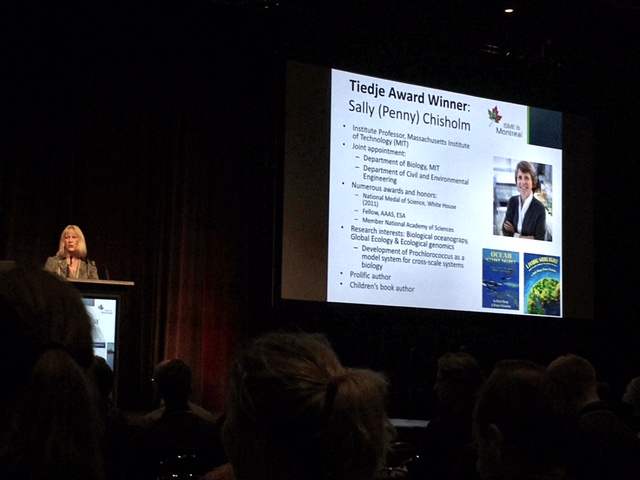
At ISME16, PNNL’s Janet Jansson presides over Thursday night’s plenary session. She is president of the International Society for Microbial Ecology.
Only one professional conference in the world could yield this tweet: "Let's chat about susceptibility of the human gut to Vibrio cholerae."
The comma-shaped bacterium that lives in salty water includes strains that cause cholera. But Vibrio cholerae drew attention at a more cheerful venue: This year's 16th international symposium on microbial ecology, hosted by the International Society for Microbial Ecology in Montreal, which ends Friday (Aug. 26). The society's current president, PNNL's Janet K. Jansson, was there, along with 14 other attendees from the laboratory.
The Aug. 22-26 gathering in the Canadian island city has so far included hours of plenary sessions, invited talks, roundtables, award ceremonies, and chatter about posters. Just over 500 were on display, giving (largely) younger researchers a way to strut their science stuff.
Thursday (Aug. 25) was the symposium's second-last day. From the perspective of most PNNL attendees, there was little official activity, in contrast to the talk-heavy first two days of the week. Microbiology group manager Vanessa Bailey did Thursday's sole PNNL honors at a podium, chairing her second soil microbial ecology session of the week.
A late morning tweet showed conference-goers packed in a corridor, lined up to go into Bailey's session. The event got a Twitter bounce from the Federation of European Microbiological Societies, promoting a thematic joint issue of their journals on the ecology of soil microorganisms.
Also on Thursday the last of the PNNL swag disappeared: 100 Smartphone microscopes that clip on over the phone's camera. They were available free at the joint ISME16 display booth put up by the Environmental and Molecular Sciences Laboratory, located on the PNNL campus, and the Department of Energy's Joint Genome Institute.
With Jansson at the helm, the symposium drew more than 2,000 attendees from around the world - a number that one Thursday conference-goer tweeted "seems to have doubled today."
One reason may have been the day's lectures and roundtables. Researchers held forth on nitrification, gut pathogens, a giant novel virus from the deep sea floor, soil ecology, citizen science, the effect of climate change on maple syrup, and souring microbes in oil wells.
One much-tweeted talk was on the microbiome of moose rumen. It included a picture of one of the antlered Alces alces with a passageway cut from the outside into the animal's stomach, for purposes of painless study. "Behold, the fistulated moose!" tweeted Bailey. She called the session on rumen microbiomes (ideal for studying anoxic carbon degradation) "the most Canadian talk of the week."
The ISME16 Twittersphere on Thursday also included some popular observations, made in and out of talks. One researcher estimated that the Earth is inhabited by 1 trillion microbial species. Another had doubts about citizen science because "sometimes people say they're 6 inches tall." And many others repeated this nugget from one talk on fecal transplants (which mentioned a pill called "the crapsule"): It's hard to get enough fresh human poop for gut microbe experiments.
Or maybe ISME16 felt crowded Thursday because attendees were still energized by their day off on Wednesday. Mid-way through some conferences it's a tradition that attendees break away for local sightseeing and for collegial conversation in more casual settings.
So time-off tweets bloomed on Thursday, along with proof in pictures: hikes, favorite meals (one was hot dogs and poutine), public art in the island city, kayaking on the Lachine Canal, a culinary tour (which merited a picture of macaroons stacked in a bakery case), and many views of Montreal and the St. Lawrence flowing past. One such tweeted picture included a scientific note: "I sampled that river!"
But the sense that ISME16 felt crowded Thursday was most likely because of the day's true highpoint: the Tiedje Award Plenary Session, chaired by Jansson. In the spotlight was this year's award winner, Sallie W. "Penny" Chisholm, a biological oceanographer who has been at the Massachusetts Institute of Technology for four decades. She delivered an address that lit up the Twittersphere, "Tiny Cell, Global Impact: The Prochlorococcus Story."
Chisholm, who during the address related how she arrived at this signature microbe, has collaborated in spectacular discoveries regarding Prochlorococcus. This cyanobacterium is achingly tiny: just 1700 genes, 20 percent smaller than most algae, and about the size of the wavelength of light it absorbs in its solar-powered genome. It is also vastly abundant, sometimes accounting for half of the ocean's photosynthetic biomass. And oxygen-making Prochlorococcus is critical to the Earth's climate.
At MIT, Chisholm and her team investigate how oceanic microbes shape the marine environment, how they evolve, and how they influence global biogeochemical cycles. They are working on the bacterium as a model system for studying life across every scale of time and space.
August 2016Day Two of ISME16: Microbe Fans Unite
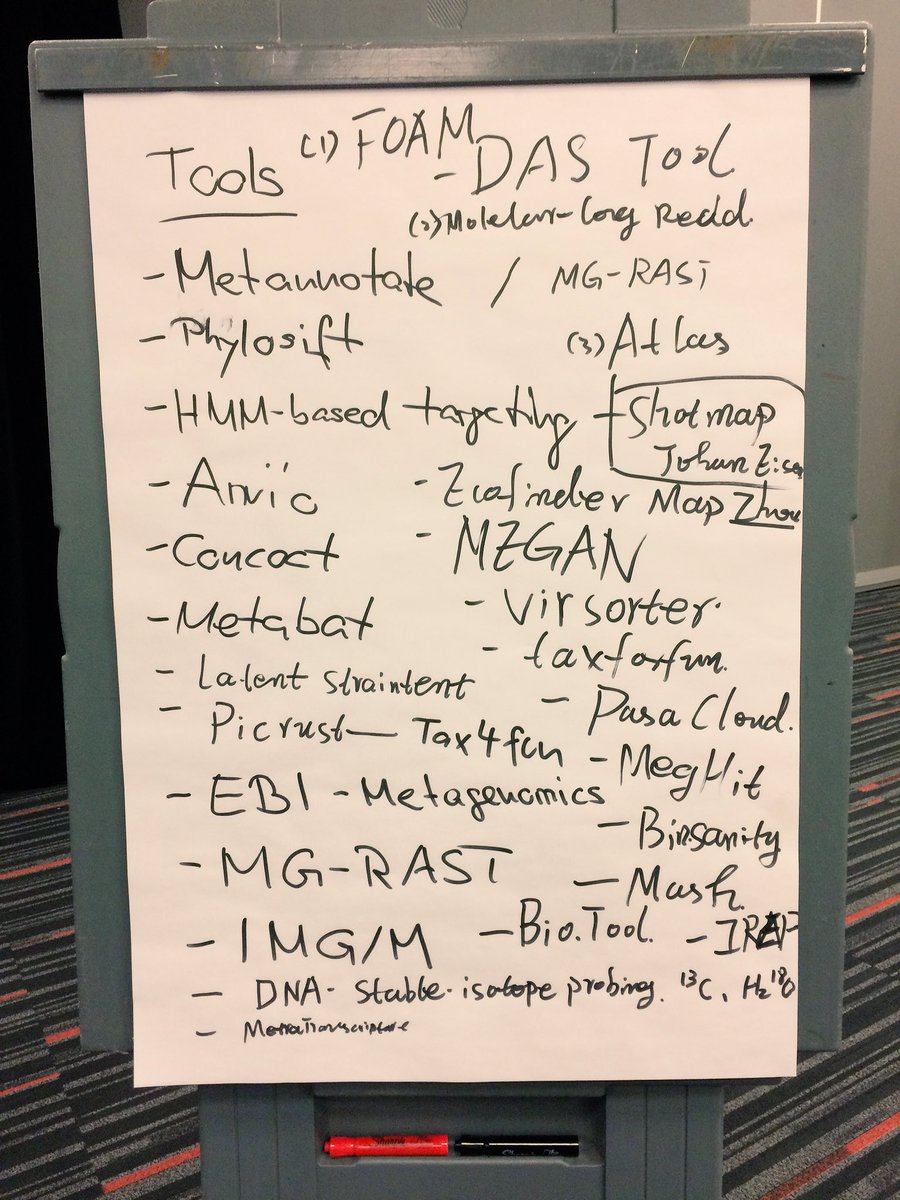
An ISME16 roundtable on soil metagenomics – one of PNNL’s own research strengths – resulted in this dauntingly crowded image, a tweet from Nature Microbiology.
On Tuesday afternoon Aug. 23, the following tweet went out from a conference hall in Montreal: "Being able to study plasmids in soils, rhizosphere is so exciting!"
You are right: The tweet was from the 16th international symposium on microbial ecology, hosted by the International Society for Microbial Ecology (ISME). Our own Janet K. Jansson is the group's current president and is among 15 PNNL attendees this year.
And right again: The tweet was from microbial ecologist Vanessa Bailey, who manages PNNL's Microbiology group in the Biological Sciences Division. She delivered one of three talks by PNNL scientists on Tuesday, the symposium's second of four days this week. (Attendees have Wednesday Aug. 24 off to sightsee and to confer offline.)
The Aug. 22-26 professional gathering at Palais des congrès de Montréal, dubbed ISME16, has drawn more than 2,000 attendees from around the world, including Austria, Brazil, Canada, China, Japan, New Zealand, and Russia. So far they have crowded into roundtables, invited talks, poster sessions, and other venues for exchanging information about the microbial universe, which affects the environment, our health, and the nature of Earth's climate.
The ISME16 Twittersphere on Tuesday was lively too, with tweets that occasionally strayed from enzyme profiles and diel cycling into the problems of managing microbiology and family at the same time.
During Tuesday's sessions, PNNL was represented at the podium by Bailey, who delivered a 30-minute talk to a very large audience; by EMSL chief scientist David A. Stahl, who holds a dual appointment at the University of Washington; and by Aaron Wright, a scientist and proteomics expert.
"Talk was great," Bailey reported later in a quick email. "I got some twitter love!"
And what was not to love? For one, the presentation title had a sonorous ring: "Integration of soil metagenomic and chemical data to identify microbial processes altered by simulated climate change after an 18-year soil transplant." Bailey and others published a paper this spring on the same experiment. The research was updated in the conference talk, and also acknowledged PNNL co-authors Lisa Bramer, Sarah Fansler, Nancy Hess, Alejandro Heredia-Langner, Lee Ann McCue, and Malak Tfaily.
Stahl delivered a talk on ammonia-oxidizing archaea (AOA), single-celled organisms that are part of an abundant domain of creatures morphologically similar to bacteria. AOA, fully described only 11 years ago, may be "major contributors to the atmospherically active gases methane and nitrogen oxides," wrote Stahl in an abstract. In his talk, he presented recent findings about how these consequential AOA microorganisms are distributed, and how they act, in natural systems.
Wright, a chemical biologist, delivered a talk entitled "Activity-based probing reveals new contributions for vitamin B12 in modulation of microbial protein activity and gene regulation." Within microbes and microbial communities, vitamin B12 is "a requisite and precious commodity," he wrote. Despite its importance, the many likely roles of vitamin B12 in microbial metabolism and gene regulation are not well understood. Wright described a strategy for learning more: an activity-based probe that mimics vitamin B12 and can be used to sweep up proteins likely tied to important microbial functions.
Wright's talk acknowledged his co-authors, including five from PNNL: Lindsey N. Anderson, Yukari Maezato, Thomas O. Metz, Premchendar Nandhikonda, and Margaret F. Romine.
Poster sessions are a staple activity at science conferences, giving voice to many new additional projects and research. At ISME16, with authors standing by, 10 PNNL posters are on display, including those that touch on microbial activity in thawed permafrost, prairie pothole region lakes, biofilm, and hypersaline ecosystems. Another 13 posters on display include contributions from PNNL scientists.
Aside from the speakers mentioned, other PNNL researchers joined Jansson at the symposium: Hans Bernstein, Eric Bottos, David Hoyt, David Koppenaal, Mary Lipton, Lee Ann McCue, Jim Moran, Ljiljana Pasa-Tolic, Taniya RoyChowdhury, Hyun-Seob Song, and Richard A. White III.
This year marks the 40th anniversary of ISME and the 10th anniversary of its influential journal.
August 2016With a President from PNNL, ISME Launches a Worldwide Symposium in Montreal
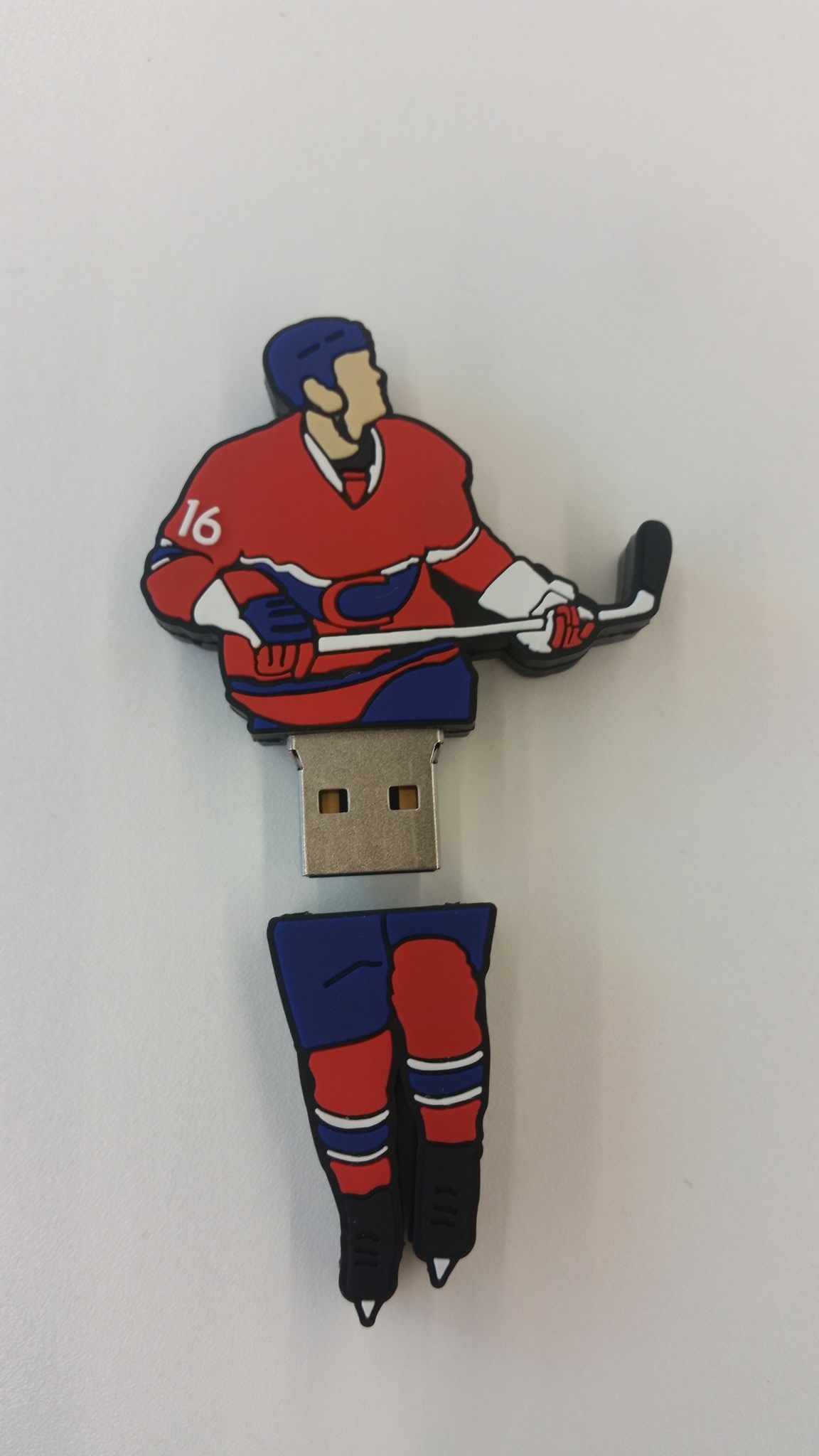
Conference swag. Photo courtesy of Vanessa Bailey.
Microbes and Montreal. What could bring together Canada's second largest city and the tiny organisms that (arguably) rule the environment, health, and even Earth's climate?
The answer: This year's 16th international symposium on microbial ecology, hosted by the International Society for Microbial Ecology. PNNL's Janet K. Jansson is the group's current president and is among 15 attendees from the laboratory, many of whom will take to the podium.
The Aug. 22-26 gathering in French-speaking Montreal is a busy science gala of plenary sessions, invited talks, and roundtables. More than 2,000 attendees, including a woman who wore an "I (Heart) Microbiomes" T-shirt on the first day, will spend time puzzling over soil microbes, extreme environments, pathogen ecology, the mammalian microbiome, and much more. (The oral sessions alone number 57.)
Joining Jansson at the symposium from PNNL are Vanessa Bailey, Hans Bernstein, Eric Bottos, David Hoyt, David Koppenaal, Mary Lipton, Lee Ann McCue, Jim Moran, Ljiljana Pasa-Tolic, Taniya RoyChowdhury, Hyun-Seob Song, David A. Stahl (who holds a dual appointment at the University of Washington), Richard A. White III, and Aaron Wright. This week, microbiome researchers Bailey and Wright will both lead convened sessions and present invited talks.
PNNL's Moran did the early honors on Monday with a brief late-morning talk on diel carbon flow dynamics within photoautotrophic microbial mat communities. (They capture energy from the sun to make their own food, converting carbon dioxide into organic compounds at the same time.) "Diel" denotes a cycle of 24 hours; "carbon flow dynamics" is a hot topic among researchers trying to map how carbon moves through an aquatic ecosystem, including how it might be influenced by a "loop" of microbial communities.
Mid-afternoon Monday, PNNL's Bernstein, a scientist specializing in microbial communities, presented Poster No. 462A (another sign of how large the symposium is). "Emergent responses of microbial partnership: Acclimation and coordination in a model phototrophic-heterotrophic consortium" was one of seven themed conference posters on communication and networks on biofilm communities. It cited four PNNL co-authors.
To cap off the first day, there were two simultaneous late-afternoon events related to PNNL.
Stephen R. "Steve" Lindemann (at PNNL until this summer and now an assistant professor at Purdue University) led a roundtable on model communities and whether they can be used to discover generalizable principles in microbial ecology. The event was co-organized by PNNL's Alex Beliaev.
Stahl and Koppenaal led a roundtable on the technology landscape of microbial systems research, a companion event to an oral session entitled "Cutting-edge methods in microbial ecology," convened by PNNL's Wright. The roundtable panel included Bailey, Pasa-Tolic, and Wright.
For a late session, one observer said, the audience was big: about 75 people. Most were interested in accessing and applying fast-emerging advances in computational and analytical capability, particularly those available through Department of Energy (DOE) national science user facilities.
Two of these figured prominently in the discussion: the Environmental and Molecular Sciences Laboratory (EMSL) located on the PNNL campus and DOE's Joint Genome Institute (JGI). Stahl and Koppenaal, respectively, are EMSL's Chief Scientist and Chief Technology Officer.
EMSL and JGI will have a joint display booth open all week at the symposium. Monday morning, this is how it looked.
Too bad, though: The video shows no sign of the researcher with the "I (Heart) Microbiomes" T-shirt. But the symposium has four microbe-celebrating days to go. Check this space for daily updates.
August 2016Brian Thrall Honored in NIEHS Feature for PNNL Nanotoxicology Work
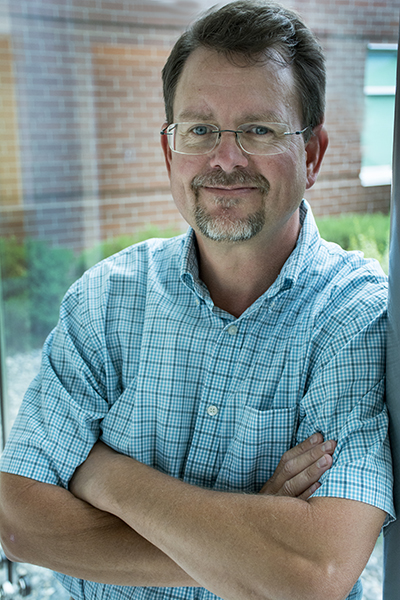
Success!
That was the basic message of an Aug. 22 feature story published by the National Institute of Health Sciences (NIEHS) about the work of Brian D. Thrall and his PNNL colleagues. Brian manages the Health Impacts and Exposure Science group in the Biological Sciences Division and directs the laboratory's NIEHS-funded Center for Nanotoxicology.
NIEHS, the environmental research arm of the National Institutes of Health, publishes a "Success Stories" series about outstanding research directions its grantees pursue. In this case, it was Thrall's work on the potential health effects of engineered nanomaterials (ENM), so tiny that they are typically one-thousandth the width of a human hair. ENM are increasingly used in biomedicine, food packaging, and other industries with direct contact to consumers.
Exactly how ENM reach and affect human cells is little known, so Thrall's multidisciplinary team is ferreting out potential health risks by employing the latest techniques in proteomics, imaging, bioinformatics, and other specialties.
Thrall and his team are going beyond the big issue of oxidative stress and cell death to pursue the effects of ENM at low levels - what Thrall refers to as "the early targets and downstream impacts of oxidative stress."
They developed and have applied quantitative redox proteomics, a novel technique that identifies changes in cellular proteins with enhanced specificity and sensitivity. The feature pointed to "technical innovations" led by PNNL's Wei-Jun Qian.
Present work by the group is focused on testing a broader range of ENM for toxicity potential and on research towards a future predictive nanotoxicology framework.
August 2016For BioTechniques, Janet Jansson Weighs in on Science's Ways of Unlocking Microbial Communities
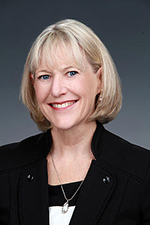
Vastly ubiquitous microbial communities live on, in, and around everything on Earth, from within the human gut to across the biggest ocean. But they are as little known as they are vital to life, health, and the environment. In soil alone, 99 percent of microbial species have yet to be isolated.
PNNL microbiologist Janet K. Jansson was just quoted at length regarding the stubborn mysteries of microbial communities, which can be good or bad for the ecosystems they populate. "There are many unknown unknowns," she said in a feature story released in the August issue of BioTechniques. Among nine scientists quoted or cited, she was the most frequently heard.
Up front, the story outlined the challenges of understanding the structure and function of microbial communities. Then it outlined in detail the techniques researchers are using to make headway. Carrying the narrative thread was one frontier of research in particular: biofilms, the largely bacterial multicellular communities that colonize surfaces everywhere.
Every bacterium plays a role in these layered ecosystems, within a diversity of chemical and physical environments. Up close, the feature said, biofilm structures are city-like, "with water channels and skyscrapers, mushroom shapes, or thick layers peppered with pores."
Cell by cell, even single-species biofilms are complex, so scientists have gone beyond simple chemical analysis to a variety of tools that help investigate the spatial and temporal relationships of these cooperating cells.
Researchers use imaging mass spectrometry to get a two-dimensional picture of biofilm surfaces; vibrational spectroscopy to get at the chemistry of biofilm polymers; fluorescence microscopy to show biofilms down to the resolution of a single cell; and something called spinning disk confocal microscopy to examine biofilm cells up to 35 microns deep, a 10-fold improvement over previous techniques.
But scientists, Jansson among them, want to go beyond visualizations to explore techniques that reveal how genes and proteins work within microbial communities. In part, that means using next-generation sequencing (NGS), "a powerful tool for examining highly heterogeneous natural microbial communities," the article states.
"Now sequencing isn't the bottle neck," Jansson said of NGS and other technologies that have improved so much in her 30 years of research. "It's interpretation of the data."
But assembling all that data from NGS and elsewhere in meaningful ways is the challenge now, she said. Microbial diversity in soil is especially daunting, and getting good gene assemblies is hard too. But once science has a technique to "bin" entire microbial genomes, said Jansson, it will be a "gamechanger."
Her recent paper with colleagues at PNNL, spelled out in the feature, used a long-lead technique called Moleculo to facilitate a very productive round of genetic binning and gene re-assembly in a sampling of soils from the Kansas prairie.
Jansson and her colleagues also got attention for going beyond metagenomics to integrate that approach with other "omics" techniques. Those include metaproteomics and metabolomics, which another scientist speculated would be where in the near future the microbiome field "sees the greatest technical advances."
By the article's end, Jansson was wishing out loud she could unravel all the metabolic pathways in just one soil-bound microbial community. After all, she added, a better understanding of those pathways could improve predictive models of how climate change will affect the planet's ecosystems.
August 2016PNNL’s Vanessa Bailey Helps Pen an Eos Article on a Workshop to Advance Soil Science
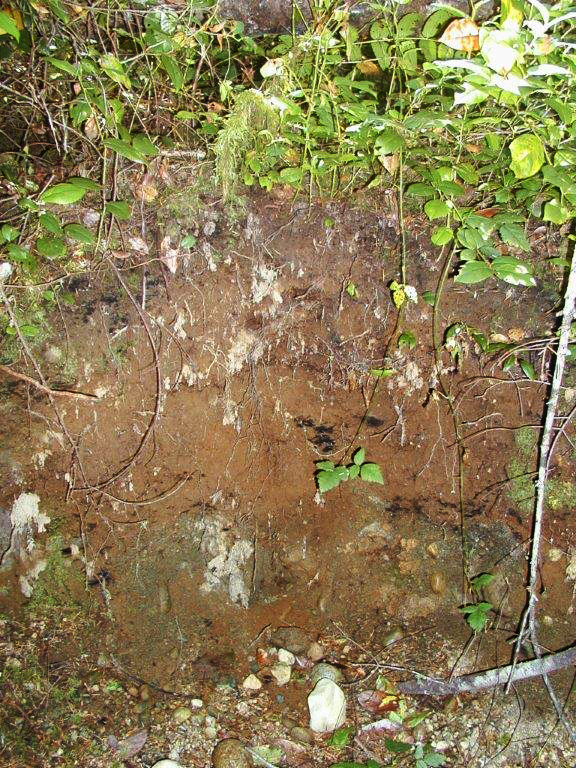
Cedar River soil site.
Adding to increased national attention on the importance of soil to Earth's ecosystems, health, and climate, PNNL microbiologist Vanessa Bailey co-authored a meeting report on soil carbon science imperatives that went online Aug. 12 in the journal Eos.
"Advancing Soil Carbon Science" recapped a March 14-16 workshop held in Boulder, Colo. to celebrate the International Decade of Soils (2015-2024), which was declared last December by the International Union of Soil Sciences during a conference in Romania. At the same event, scientists adopted the Vienna Soil Declaration to declare the importance of healthy soils and to set a framework for future research.
Early in the Eos article, Bailey joined co-authors Melanie A. Mayes of Oak Ridge National Laboratory and Kate Lajtha of Oregon State University in laying out the basics: that soils play a vital role in the world's carbon cycle by exchanging carbon with both the Earth's envelope of gases (the atmosphere) and its watery collective of seas, lakes, rivers, groundwater, and even clouds (the hydrosphere).
Moreover, the authors stated, carbon storage in soils helps regulate Earth's climate and determines the productivity of its ecosystems and agriculture. As such, the International Decade of Soils workshop, convened and funded by the 12-agency Carbon Cycle Interagency Working Group, set out to establish a framework for understanding what factors influence soil carbon's resilience and the vulnerability.
Soil carbon vulnerability, for one, heightens when perturbations alter the various forms in which soils store carbon. The result is more leached carbon dioxide and methane, both greenhouse gases.
The workshop had three primary goals: to better understand factors behind soil carbon resilience and vulnerability; to improve predictions of how soils generate climate feedbacks; and to inform what will be the second State of the Carbon Cycle Report, to be published in 2018 by the U.S. Sustained National Climate Assessment.
To that end, the workshop generated three frameworks for action, conceptions which will each later be expanded on and published as forward-looking science: a method for assessing and predicting soil vulnerability; a synthesis of proxies for modeling carbon cycling; and measureable compartments for soil carbon models.
Participants also drafted a survey that will poll soil scientists on how global changes impact soil carbon.
The workshop, held at the University Corporation for Atmospheric Research in Boulder, was co-organized by staffers at Lawrence Berkeley National Laboratory, Argonne National Laboratory, and the U.S. Carbon Cycle Science Program.
August 2016Bailey & Jansson Quoted in PNAS Article
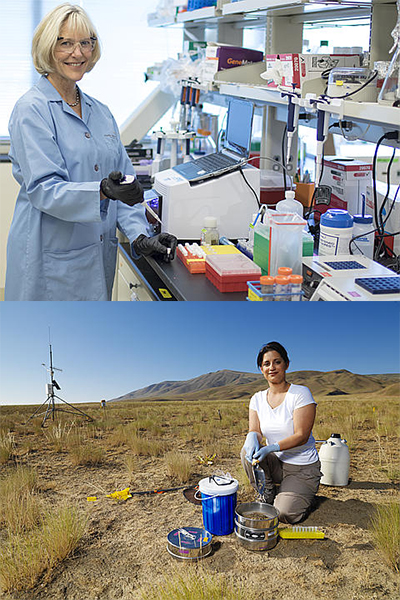
Vanessa L. Bailey and Janet K. Jansson, prominent microbiologists at Pacific Northwest National Laboratory (PNNL), were quoted extensively this week in "Crucial role of belowground biodiversity," a John Carey feature story in the July 12 issue of the prestigious journal Proceedings of the National Academy of Sciences (PNAS).
It was Bailey's description of soil science as a "black box" of mysteries to researchers that was the story's leitmotif. This recurrent image illustrates the huge task ahead for soil scientists, many of whom are doing pioneering soil microbiome work at PNNL.
Bailey, a PNNL Senior Scientist, was quoted as saying that since getting her Ph.D. 17 years ago, "we know more about what's in the black box and what those microorganisms are doing." Gigabytes of new data are emerging from today's studies, now that soil science has moved from the laboratory to the natural world and now that its critical significance to human health and climate change has emerged.
Jannson, Chief Scientist of Biological Sciences at PNNL and director of the Microbiomes in Transition (MinT) initiative, was quoted regarding the many surprises that true soil biodiversity brought to science once genomics and other molecular tools were brought into play. Before, she said, "we had no way of testing what was there. People didn't anticipate there was such a concentration of unknown organisms in soil."
Some of the startling facts of soil biodiversity, according to the story, include that more than 100 billion organisms can live in a handful of soil. And that just one gram of soil, about the weight of a paper clip, can contain enough hyphae (fungal filaments) to stretch out a mile.
Then there is the emerging proof that in surprising ways soils are vital to understanding climate change. Soils, after all, contain an immense percentage of the world's carbon and, when perturbed, could release it into the atmosphere. In the story, climate related research by both Jansson and Bailey got strong mentions.
As the feature pointed out, "much more soil carbon is now poised to churn out into the air as the permafrost melts." As an example of how new genetic and molecular tools are being applied to arctic [cq] soils, the author pointed to Jansson's 2015 paper on the potential climate consequences of warming permafrost. "There is a rapid conversion of this community into one that can release greenhouse gases," she said, referring to bacteria in the subzero soils she studied.
Bailey called soil "the major buffer system for environmental changes" in a statement that earned her a pullout quote. The PNAS feature then gave several column inches of real estate to the 2016 Rattlesnake Mountain soil-switching study she did with PNNL research scientist Ben Bond-Lamberty and others.
Even after 17 years, the paper showed, soil samples subject to the switched locations displayed an apparent lack of climate-change resilience to alterations in moisture and temperature, as measured by bacterial activity. "That was really weird," said Bailey, "and very sobering in the face of planetary change."
July 2016Janet Jansson Among Nine Authors of Nature Review Article

Renowned veteran microbiologist Janet K. Jansson, Chief Scientist of Biological Sciences at Pacific Northwest National Laboratory (PNNL), was among nine authors of a review article in Nature published online July 6.
"Microbiome-wide association studies link dynamic microbial consortia to disease" used 122 papers and drew on authors from seven U.S. research institutions to summarize the latest perspectives. The paper outlines two main points: how much more the scientific community knows about the human microbiome than even the recent past, and how much closer researchers are to linking that microbiome to disease states.
Progress has been accelerated by advances in the research tools used to investigate the microbiome, the authors say, including advances in DNA sequencing, metabolomics, proteomics, and computational methods.
Microbiome-wide disease association studies have shot ahead so fast, they add, particularly because of new multiple molecular perspectives and improved time-series studies. That's an analytical method that collects successive points of data over a period of time, which broadens understanding of a phenomenon.
Some early findings already point to microbiome-disease links that call for action. But there are no clinical applications yet. More frequent observations of the "dynamic interface" are needed, the authors say, along with "an appreciation of the complexity of interactions among the microbiome and the host's diet, chemistry, and health."
The object remains, they say: to develop "precision diagnostics and therapies that are based on the microbiome."
The review article points out how disease has been linked to the microbiome (the genes of our microbes) and to human microbiotas (the microbes themselves, which inhabit an individual's body space). But it also goes into the technical and conceptual pitfalls confronting researchers, especially those pitfalls compounded by studies scaled up to include tens of thousands of people over time.
Microbiome-wide association studies (MWAS), as in the review's title, capture this kind of scale and can help link the microbiome with disease. MWAS is "somewhat analogous" to genome-wide association studies (GWAS), the authors say. But the microbiome contains more genes, and has to take into account a person's individual microbiotas.
Jansson has published widely on the microbiome and helped organize the National Microbiome Initiative launched in May. At PNNL, she leads the Microbiomes in Transition (MinT) initiative.
July 2016Dick Kouzes Quoted in Science on Helium-3 Shortage
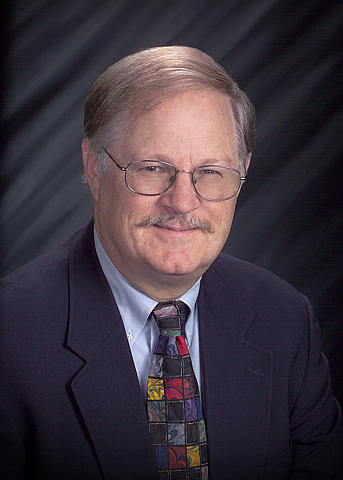
Richard Kouzes was quoted in the July 1 issue of Science.
Pacific Northwest National Laboratory physicist Dr. Richard Kouzes was quoted in the July 1 issue of Science in an article about the efforts to create alternatives to Helium-3 (3He). This rare isotope has unique properties that make it invaluable for applications from cryogenics to detecting hidden nuclear bomb material.
An increased demand for 3He was because of a substantial expansion in its use for neutron detectors in homeland and national security applications, as well as use for neutron scattering science. At the same time, 3He supply was impacted by an unexpected reduction of Russian exports to the marketplace. The demand for 3He by the U.S. Department of Energy's Office of Nuclear Physics alone has been as high as 70,000 liters per year.
Kouzes leads research in fundamental and applied nuclear science at PNNL. He was Principal Investigator and Technical Lead for the Lab's largest single project, the Radiation Portal Monitor Project, which resulted in radiation monitors being deployed at all U.S. international borders. At PNNL, Kouzes is a Laboratory Fellow, the highest rank a PNNL scientist or engineer can attain. July 2016HPCwire Revisits CENATE
HPC center 'quickly winning industry support and collaboration'
HPCwire recently reported how new resources from a growing list of industry partners are helping PNNL’s Center for Advanced Technology Evaluation, known as CENATE, to rapidly expand its capabilities for providing diverse methods to steer optimal computing system designs and enhance overall performance.
In the article, CENATE Project Director and PNNL Chief Scientist for Computing, Adolfy Hoisie, explains how the CENATE technology maturity pipeline can be applied to analyzing advanced architectures that are expected to emerge from the union of diverse technologies, for example, minimizing data movement, which is a central concern in achieving optimality for performance and power.
The article also includes a brief rundown of CENATE’s current slate of analysis equipment and testbeds from industry providers, including IBM, Mellanox, NVIDIA, Micron, Penguin Computing, and Data Vortex Technologies.
CENATE is a computing proving ground at PNNL supported by the U.S. Department of Energy’s Office of Advanced Scientific Computing Research. Darren Kerbyson, Associate ACMD Division Director, High Performance Computing, and PNNL Laboratory Fellow, serves as CENATE’s Lead Scientist.
For more from John Russell’s most recent profile about CENATE, read the HPCwire article here.
July 2016Rasch, a Sailing Scientist, Shares Climate Change Insights
In a recent interview, author Paul Vandevelder tapped Pacific Northwest National Laboratory's Dr. Philip Rasch for his expertise in climate science—his passion for sailing is a bonus.
Cruising World is a resource for sailboat enthusiasts. In his article The Climate Conundrum, Vandevelder says, "A new term in the sailor's glossary, climate change, is going to be a factor in all things sailing for the rest of our lives and beyond."
Rasch explains the interaction between weather patterns on land and the effects on oceans. He also talks about how oceans carry heat from the equator to the polar regions.
"Tropical cyclones and hurricanes are going to get stronger. In the overall pattern, wet places are going to get wetter, and the dry places drier," Rasch said.
Rasch is chief scientist for climate and a laboratory fellow.
Read the article: The Climate Conundrum in Cruising World
June 2016PNNL Climate Scientist Chand Consulted for ClimateWire Story
ClimateWire's article "Do clouds + smoke = climate change? Africa may have answers" explores how a farmer burning his fields in Africa might contribute to cooling the planet. It considers a $1 million study-funded by NASA and the Department of Energy—which is the first of its kind in the Southern Hemisphere.
The story consults Pacific Northwest National Laboratory's Dr. Duli Chand, atmospheric scientist, for his expertise in atmospheric measurement and data sciences. Chand explains that a satellite launched in 2006 shows where the aerosol particles are located, but not the micro-detail of the particles.
"If the satellite is perfect, I'd prefer to use the satellite observations. But unfortunately, they are not perfect and complete, so we have to rely on aerial observations," Chand told ClimateWire.
June 2016Huffington Post Chats with Ghassem R. Asrar
Dr. Ghassem Asrar, often sought out for his technical expertise, was interviewed by the Huffington Post for an article in a recent blog post. Asrar is the director of the Joint Global Change Research Institute, a partnership between Pacific Northwest National Laboratory and the University of Maryland. His pre-PNNL portfolio is impressive with appointments to World Climate Research Program (WCRP) and U.S. National Aeronautics and Space Administration (NASA).
The recent Huffington Post blog takes readers on a journey from his childhood in Iran to his recent acceptance of an Exceptional Performance Award from NASA. The goal of the interview is "harnessing the untapped potential of Iranian-Americans, and building the capacity of the Iranian diaspora in effecting positive change in the U.S. and around the world."
Asrar's research interests are grounded in:
- Earth system science research and education
- Multi-spectral remote sensing of Earth's biosphere and atmosphere
- Modeling mass, energy and the transfer of heat energy (radiation exchange) between Earth's surface and atmosphere
Read the interview on HuffPost
June 2016Morris Bullock Quoted in Chemical & Engineering News
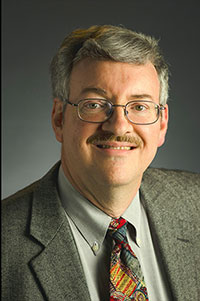
Morris Bullock was quoted in the June 13, 2016, issue of Chemical and Engineering News.
In the June 13 issue of Chemical & Engineering News, Dr. Morris Bullock at Pacific Northwest National laboratory is quoted as an outside expert. In the article titled "Chemists announce the end of the innocence for cyclopentadienyl," writer Stephen K. Ritter covers research by two groups that show the ligand cyclopentadienyl is reactive, suggesting new opportunities for catalyst design. Bullock is quoted at the end of the article about the significance of the research.
At the national laboratory, Bullock leads the Center for Molecular Electrocatalysis, an Energy Frontier Research Center funded by the U.S. Department of Energy's Office of Science. He is a Fellow of the Royal Society of Chemistry and American Chemical Society. His work in developing transition metal electrocatalysts earned him the Royal Society of Chemistry's Homogeneous Catalysis Award in 2013.
June 2016Teeguarden behind EPA panel on new framework for Exposure Science
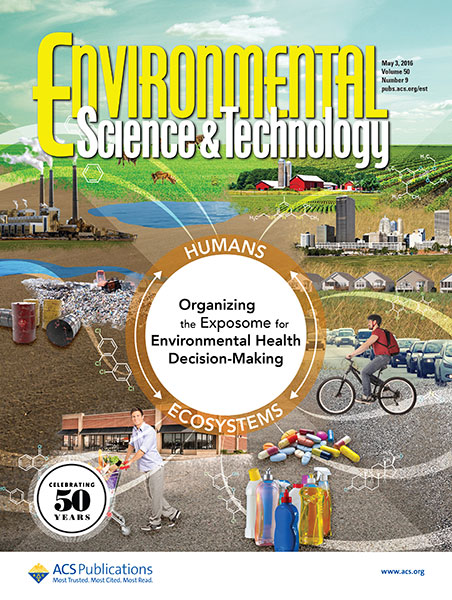
Toxicologist Justin Teeguarden, a scientist in PNNL’s Health Impacts and Exposure Science organization and Director of the Oregon State University-PNNL Superfund Research Center’s Research Translation Core, helped organize and lead a May 9-11 expert workshop hosted by the Environmental Protection Agency (EPA). Under discussion was the new systems-based “Aggregate Exposure Pathway” (AEP) concept proposed by Teeguarden and his colleagues, in response to a call by a committee of the National Research Council for an organizing framework for the field of Exposure Science.
The workshop brought together scientists from the fields of toxicology, exposure science, modeling, epidemiology, and risk assessment from academia, industry, regulatory agencies, and non-governmental organizations. Attendees advanced the AEP concept in three working groups focused on high impact application areas, the infrastructure to support implementation, and ecological exposure assessment.
Teeguarden's involvement in the Research Triangle Park, NC workshop followed his May 2016 paper in Environmental Science & Technology: "Completing the Link between Exposure Science and Toxicology for Improved Environmental Health Decision Making: The Aggregate Exposure Pathway Framework." Researchers from the EPA and Oregon State University also contributed.
Exposure science, the paper averred, is changing fast, and is transitioning "from a field of observation to a field of prediction." The AEP framework is a step in that evolution, the authors wrote, and is a systems-based response to "major scientific advances in analytical methods, biomonitoring, computation, and a newly articulated vision for a greater impact in public health."
The paper and the workshop reflect a growing scientific leadership role for PNNL in the field of exposure science.
June 2016PNNL Researcher Ben Kravitz's Opinion Sought on 'Far Out' Climate Solutions
Some geoengineering scientists are thinking of big—out-of-this-world sized—solutions to cool our warming planet. The BBC article How a giant space umbrella could stop global warming wonders if the answer might be to create a man-made structure between us and the Sun to cast a shadow on our planet.
They asked Dr. Ben Kravitz for his opinion.
Kravitz was consulted as an outside source because of his expertise in the field. As a researcher at Pacific Northwest National Laboratory, Kravitz's primary method of investigating how the climate system works is through simulations of geoengineering—or deliberate interventions into the climate system to counteract some of the effects of human-induced climate change. He also is the coordinator of the Geoengineering Model Intercomparison Project (GeoMIP), a worldwide effort to understand common climate model responses to various geoengineering scenarios.
"There's still a lot of work to do before we understand what geoengineering can and cannot do," Kravitz told the BBC.
May 2016Thallapally's Metal-Organic-Composites Research Featured in MRS Bulletin
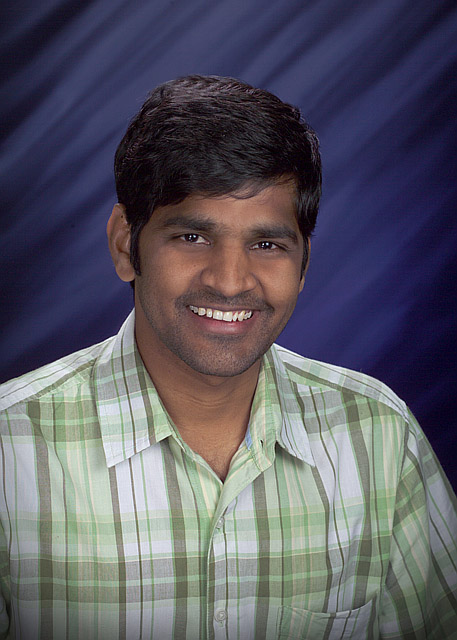
Dr. Praveen Thallapally
Dr. Praveen Thallapally’s research on a novel, oxygen-separating metal-organic-framework (MOF) was featured in the Material Research Society’s MRS Bulletin in April 2016. Thallapally and his Pacific Northwest National Laboratory (PNNL) team discovered how to separate oxygen from other gases simply and cheaply, as first reported in Advanced Materials. They developed a composite of MOFs with a helper molecule to separate oxygen from other gases. Practical applications for the discovery could range broadly from removing oxygen for food storage to making pure oxygen for fuel cells.
May 2016Bailey, Bond-Lamberty, Jansson in Yale Environment 360
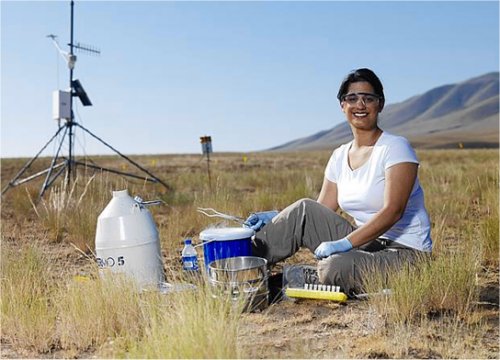
Vanessa Bailey checking on soil samples in 2008, during a nearly two-decade-long analysis of microbial activity in soil.
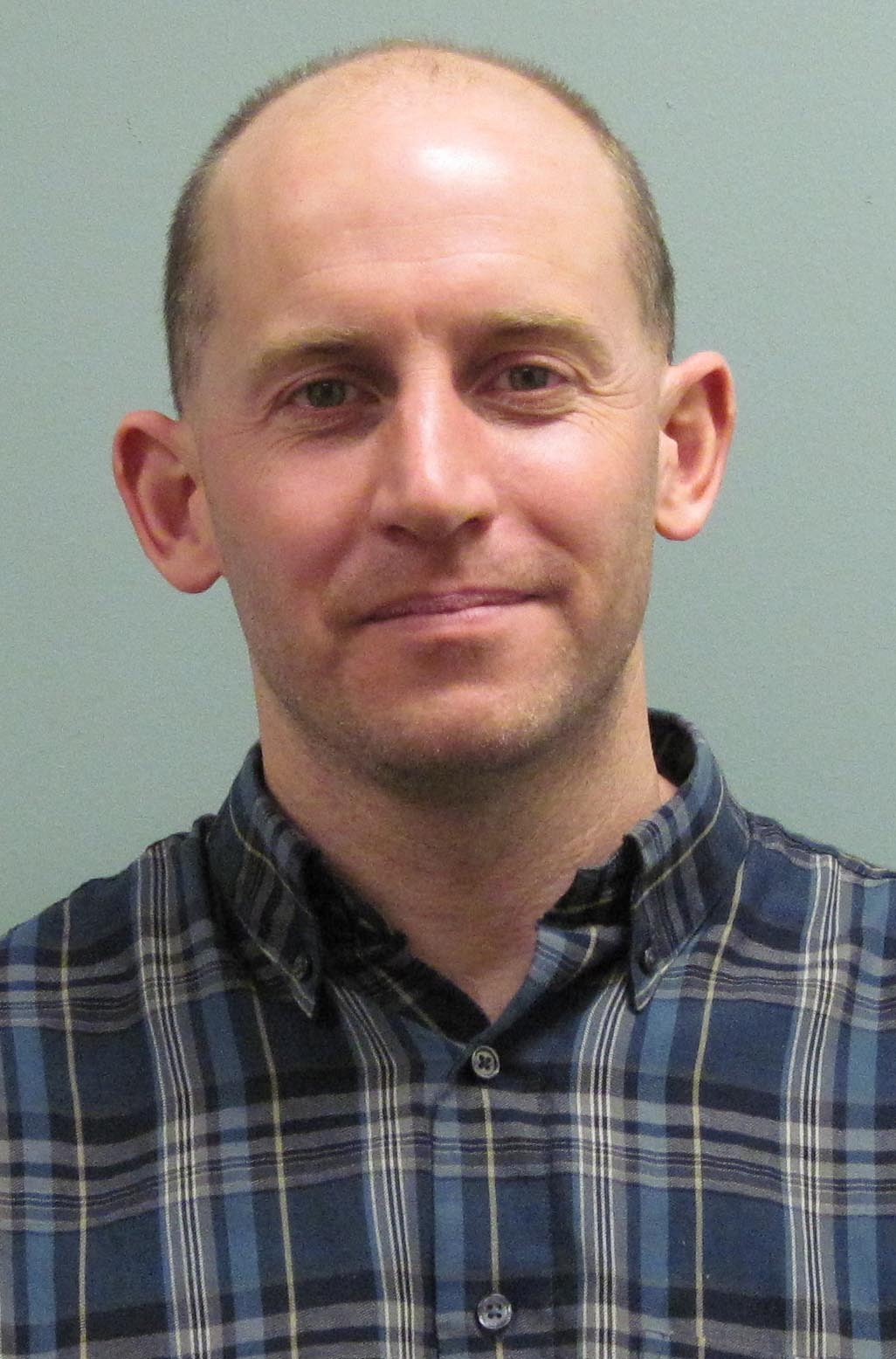
Ben Bond-Lamberty
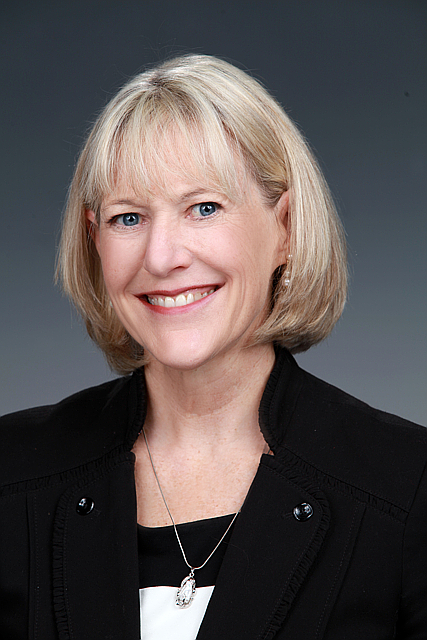
Janet Jansson
A study led by Dr. Vanessa Bailey and Dr. Ben Bond-Lamberty of Pacific Northwest National Laboratory (PNNL) took center stage in "Is Climate Change Putting the World's Microbiomes at Risk?," a March 28 article in the online magazine Yale Environment 360.
In the study, which appeared in PLoS One (see research highlight), researchers had a rare long-term look at soil responses over 17 year to changes in temperature, moisture, and other factors. They transplanted dryland soil-core samples from a moist, cool, higher-elevation site to a lower, drier site (and vice versa) and found that microbial communities and carbon-transfer characteristics in the soils had adapted very little to the new climate conditions.
In what may become, in part, a rapidly warming and drying world, this is no good news, said Bailey. "Soil is the major buffer for environmental changes, and the microbial community is the basis for that resilience." Climate change, the article added, will affect in unknown ways the "planetary microbiome in the Earth's crust and water," the quadrillions of microorganisms that "run the world."
PNNL researchers are at work unraveling what role microbes in soil play in the ecological machinery of Earth. The tiny, teeming, and cooperative fungi, archaea, and bacteria in soils represent one-third of Earth's biodiversity. They also store up vast quantities of CO2 and other greenhouse gases, and (once they are understood more) may one day improve climate models.
Also quoted was Dr. Janet Jansson, chief scientist for the Earth and Biological Sciences Directorate at PNNL and president of the International Society for Microbial Ecology. She is initiative lead for PNNL's Microbiomes in Transition, which investigates how climate change and pollution affect microbiomes.
April 2016Jim De Yoreo's Research on Biomineral Growth Featured in C&E News
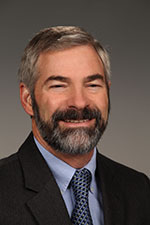
Dr. Jim De Yoreo was quoted in Chemical & Engineering News.
As part of their coverage of the 2016 American Chemical Society Meeting in San Diego, Chemical & Engineering News' Mitch Jacoby wrote about the research presented by Pacific Northwest National Laboratory's Jim De Yoreo. The article on how the biomineral calcite forms. The research, published in Nature Communications, reveals how soft clumps of biological matter get into calcium carbonate crystals and endow them with remarkable strength. The research provides insight into the formation of natural minerals will help scientists develop new materials for a sustainable energy future.
April 2016Climate Scientist Rasch is Expert for Michigan Engineering Article
Help with understanding geoengineering
Dr. Philip Rasch, Chief Scientist in climate science at Pacific Northwest National Laboratory, was quoted in an in-depth article from Michigan Engineering, "Is it Time to Get Serious About Geoengineering?"
The article describes the sometimes controversial topic of geoengineering. It's a concept that involves what many believe are last-ditch efforts to reduce the climate effects of greenhouse gases only while long-term mitigation is in progress.
The article describes geoengineering as an area of science many avoid for fear of showing recognition of human-caused climate change significance.
"We would all like to believe that we're not harming the planet," said Rasch. "And any time you consider something like geoengineering it's an explicit recognition that we've reached a point where we need to be really worried."
As an internationally recognized scientist in climate modeling with emphasis on the climate impact of aerosols and clouds, Rasch's expertise makes him one of few to use innovative analysis studies to provide insight into the impacts and consequences of geoengineering techniques.
Rasch and his climate modeling colleagues are optimistic their expertise will provide a fundamental and useful understanding of Earth's climate system. "We don't have a lot of time to mess around," he said. "Because some of the changes we're anticipating will at some point become irreversible."
March 2016Praveen Thallapally's Research on MOFs Featured in Materials Today
Dr. Praveen Thallapally's research on a new metal-organic framework, or MOF, that separates oxygen was featured by Materials Today in March 2016. Thallapally and his colleagues at Pacific Northwest National Laboratory created the material -- a composite of a MOF and a helper molecule where the two work in concert - that separates oxygen from other gases simply and cheaply. The results, reported in Advanced Materials, might help with making pure oxygen for fuel cells, using that oxygen in a fuel cell, and removing oxygen in food packaging, among other uses.
March 2016Susannah Burrows' Biogenic Research Featured in Earth Magazine
Dr. Susannah Burrows, atmospheric scientist at Pacific Northwest National Laboratory, authored a study published in the journal Science Advances, together with the University of Washington, and was featured in the November 2015 issue of Earth Magazine. The Earth article, "Marine Microorganisms Drive Summer Clouds Over Southern Ocean," highlights the finding that gases and particles originating from phytoplankton, microorganisms that live in the sea, are responsible for up to half of the droplets that produce clouds over the Southern Ocean during the summer months.
Burrows' research is focused on how tiny particles called aerosols interact with clouds to affect climate. Her expertise in atmospheric diagnostics and modeling is frequently called upon to study aerosols, especially those resulting from material produced by marine organisms.
Researchers are continually working to include adequate measurements to better inform the climate models. Studies such as Burrows' highlight how previously overlooked contributors may affect the climate. These measurements will be vital for informing climate models to improve that understanding.
March 2016Hailong Wang's Soot-in-Snowpack Research Highlighted in NPR Story
Dr. Hailong Wang described the sources and consequences of soot falling on snowpack in the Pacific Northwest and around the world for a story that aired on Northwest News Network public radio stations. The soot, a result of incomplete combustion, is coming from sources such as vehicle pollution, carbon-fueled power plants, and forest fires. Because the soot absorbs sunlight, it warms just enough to cause increased snow melting. This can be a problem in regions that rely on mountain snow melt for seasonal water supplies to fill reservoirs and crop irrigation systems.
Wang led research to improve climate models accounting for soot falling on snowpack. Better models will help those who need to understand changes in seasonal fresh water supplies in a warming climate.
Wang, a PNNL researcher since 2009, got his Ph.D. in atmospheric sciences from the University of Illinois at Urbana-Champaign. Recently, his research has focused on developing a source-tagging technique in the Community Earth System Model, to understand the relationship between global sources of soot and its impact on snowpack and glaciers at various locations around the world.
Related highlights: The Down and Dirty About North American Snowpack; Playing ‘tag' with pollution lets scientists see who's it.
February 2016Bond-Lamberty Provides Carbon Storage Insight for The Washington Post
Reporting on a recent study about terrestrial carbon storage, The Washington Post quoted Dr. Ben Bond-Lamberty about the change in tropical nighttime temperatures that may play a big role in the global carbon cycle balance under the pressures of climate change.
"Daytime temperatures, we're going to expect, will affect both sides of the carbon uptake and loss equation-the photosynthesis uptake side and then the respiration loss side-whereas changes in nighttime temperature are just going to affect the respiration side," he said. "I would say, sort of a priori-and there have been a couple of previous papers on this subject-you would expect that the nighttime temperatures would exert an unbalanced effect."
Bond-Lamberty, a PNNL researcher working at PNNL's Joint Global Change Research Institute (JGCRI) in College Park, Maryland since 2009, got his Ph.D. at the University of Wisconsin, Madison. He is a section editor for PLOS ONE, and on the editorial boards of Global Change Biology and Plant and Soil. The JGCRI is a partnership between PNNL and the University of Maryland.
Related: Top-10 Paper Co-Authored by PNNL's Ben Bond-Lamberty; Bond-Lamberty Appointed to Global Change Biology Editorial Board; Ben Bond-Lamberty, Section Editor for PLOS ONE
February 2016Samson Hagos Research Featured in Climate Central Post
Dr. Samson Hagos was quoted in a posting by Climate Central, a respected online site where scientists research climate science and journalists report the impacts of climate change on Americans. In a post authored by John Upton, Hagos' most recent published work was used as the basis of the article "West Likely to Be Stormier With Climate Change."
Hagos led research that showed the effects of climate change on atmospheric rivers that carry lots of water from the tropical Pacific Ocean, eventually dumped on the West Coast during winter. The increase of the frequency and severity of these storms threatens more devastating floods in the U.S. West. The research projects an increase in extreme rain events due to atmospheric rivers by century's end under the influence of climate warming.
Hagos, a PNNL researcher since 2008, got his Ph.D. in atmospheric science from Cornell University. His research investigates the variability of precipitation at a wide range of spatio-temporal scales that span individual storm systems, the Madden-Julian Oscillation, atmospheric rivers and regional monsoons as well as their responses to climate change.
February 2016Marquez Floats Ideas about Underwater Data Centers in IEEE Spectrum
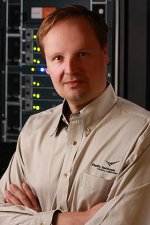
In a discussion about Microsoft’s Project Natick, where the computing giant is examining the viability of underwater data centers, Andres Marquez, a research scientist and Advanced Architectures Team Leader in the Advanced Computing, Mathematics, and Data Division’s High Performance Computing group, spoke to IEEE Spectrum about how these undersea facilities could “play an important role in meeting the world’s growing demand for Internet services.” He also touched on how the salty ocean presents other problems when it comes to protecting data servers over time.
Read more in the article, “20,000 Leagues Under the Cloud.”
February 2016Kravitz Provides Geoengineering Insight for Slate
When the e-zine Slate needed expertise to explain geoengineering and climate modeling for a recent article, they turned to Dr. Ben Kravitz, atmospheric scientist and climate modeler at Pacific Northwest National Laboratory.
The Slate article, How Geoengineering Could Affect the Global Climate, covered ideas explored in the Geoengineering Model Intercomparison Project, something Kravitz knows very well. As a lead scientist organizing and designing experiments for the project, he is in a unique position to provide insight. The question-and-answer format of the article provides many details about modeling geoengineering questions. The Slate article is part of "Futurography," a series introducing readers to "the technologies that will define tomorrow."
Kravitz, a PNNL researcher since 2013, got his Ph.D. at Rutgers University in 2011. He is a recipient of the International Union of Geodesy and Geophysics Early Career Scientist Award.
February 2016Gokul Iyer Quoted in News Outlets on Emission Reduction
Dr. Gokul Iyer, researcher at the Joint Global Change Research Institute, a collaboration between Pacific Northwest National Laboratory and the University of Maryland, was quoted in several outlets regarding a paper published in Science. The publication Can Paris Pledges Avert Severe Climate Change? was co-authored by Iyer and colleagues including PNNL researchers Leon Clarke, Jae Edmonds, Haewon McJeon, and Ghassem Asrar.
“Real success depends on a robust process that allows pledges to be progressively tightened over time. If countries ramp up efforts beyond 2030, we'll have a much better chance of avoiding extreme warming and keeping temperature change below 2 degrees Celsius,” said Iyer, as quoted in Huffington Post.
The research attracted media attention as its timely publication focused on climate change research just days before world leaders of 190 countries gathered in Paris to discuss pledges to reduce emissions through the year 2030. The study in Science compared the Paris commitments to a world where countries take no action, or where they begin to reduce emissions only after 2030. They found that if successfully implemented and followed by additional, post-2030 measures of equal or greater ambition, the pledges are a stepping stone for reducing the probabilities of the worst levels of climate change and limiting global warming to 2°C.
For more, see The Washington Post; Scientific American; Huffington Post; Climate Wire; PNNL News Release; PNNL Research Highlight.
January 2016Leon Clarke Quoted in Nature
Dr. Leon Clarke, integrated assessment modeling researcher at Pacific Northwest National Laboratory, was quoted in the article "Is the 2°C world a fantasy?" The article, published by the journal Nature, discusses the different scenarios for limiting global warming and the efforts society would need to take for this to be possible.
Clarke conducts his research at the Joint Global Change Research Institute (JGCRI), a partnership between PNNL and the University of Maryland, and was recently honored by the Integrated Assessment Modeling Consortium (IAMC) for his prominent contributions to the integrated assessment modeling community.
Clarke received his Ph.D. in Engineering-Economic Systems and Operations Research from Stanford University. His research at PNNL tackles issues related to energy, technology, policy, and climate change.
January 2016RedOrbit, US CLIVAR and others Feature Yoon's Research
Dr. Jin-Ho Yoon, atmospheric scientist at Pacific Northwest National Laboratory, led research that suggests more frequent and extremely wet and dry events are likely to occur due to weather patterns known as El Niño and La Niña. The study forecasts at least a doubling of extreme droughts and floods later this century. Published in Nature Communications, the study, and how it may affect California in the coming years, was featured by multiple news outlets including US CLIVAR, RedOrbit, and Before It's News.
Yoon received his Ph.D. in Meteorology from Iowa State University. His research focuses on climate modeling, prediction, variability and change, and sensitivity studies.
Read the PNNL News Release: California 2100: more frequent and more severe droughts and floods likely
Read the PNNL research highlight: California, Here We Come: Floods and Drought
January 20162015
HPCWire Features CENATE
PNNL's Center for Advanced Technology Evaluation gets the SC15 spotlight

As part of its in-depth coverage of The International Conference for High Performance Computing, Networking, Storage and Analysis, better known as SC15, HPCwire profiled PNNL’s Center for Advanced Technology Evaluation. The center, dubbed CENATE, serves as a computing proving ground, affording accurate measurements of performance, power, and thermal effects, from device to system level.
For more about HPCwire’s take on CENATE, read the article here.
November 2015Fan's Research Featured in Global Times
Dr. Jiwen Fan, atmospheric scientist at Pacific Northwest National Laboratory, led a research team finding that air pollution can significantly contribute to extreme weather conditions that can result in floods or droughts. The news article featured a profile of Fan and her research in the September, 2015 edition of Global Times, a newspaper journal that focuses on news in China.
Fan, a Chinese-American, covers research in atmospheric chemistry, aerosols, cloud, and convection studies. She is an internationally-recognized expert in the field of aerosol-cloud-precipitation interactions, and a winner of 2015 American Geophysical Union's Ascent award recently mentioned on Earth & Space Science News (EOS). She received a Ph.D. in atmospheric sciences from Texas A&M in 2007 and joined PNNL as an atmospheric researcher that same year.
Read the Global Times news article: “Top Scientist Shows How Smog Amplified Flooding in SW China”
Read about the research led by PNNL: “Air Pollution Amplified Extreme Weather, Floods in China”
Read about the Ascent award here: “Jiwen Fan Wins Prestigious Ascent Award”
October 2015Arizona State University and PNNL Announce Agreement
Collaboration to tackle energy, climate science, and sustainability challenges
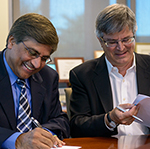
Finding solutions for global challenges in energy, climate science, and sustainability requires our best minds. The Arizona State University and Pacific Northwest National Laboratory signed a memorandum of understanding on September 29 at ASU's Tempe campus that will bring two partners together for just such an effort. Their collaboration will extend the research projects between the two institutions on areas of interest vital to the nation.
Past projects between the two have included power grid resilience, climate change, and environmental sustainability. The agreement means that they will each bring unique capabilities to address the issues and achieve mutual objectives, such as attracting new investment in global security and complex systems science. The collaboration will also include developing learning opportunities for students.
Read the PNNL news release for more about this agreement. October 2015Top-10 Paper Co-Authored by PNNL's Ben Bond-Lamberty
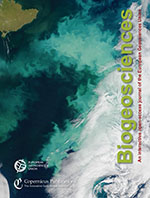
Cover of the journal Biogeosciences
An influential paper co-authored by Pacific Northwest National Laboratory scientist Dr. Ben Bond-Lamberty was recently listed as one of the 10 most-cited papers from Biogeosciences in 2014. Published in 2012, the paper finds that scientists haven't yet come to a conclusion on what happens when soil freezes or gets very dry.
The study reviewed 50 years of literature and found that there is a wide range of results when soil is dried and then rewetted, or frozen and then thawed. The paper received attention because of its comprehensive review, as well as its recommendations to address the current gaps in knowledge. Learning more about what happens when soils are rewetted or thawed is important because transitions like those will be happening more often in parts of the world experiencing climate changes. Current models don't simulate such dry-to-wet or cold-to-warm changes very well.
Bond-Lamberty is a research scientist at the Joint Global Change Research Institute, a partnership between PNNL and the University of Maryland. He received a Ph.D. in Forest Ecosystems Ecology from the University of Wisconsin, Madison.
Reference: Kim DG, R Vargas, B Bond-Lamberty and MR Turetsky. 2012. "Effects of Soil Rewetting and Thawing on Soil Gas Fluxes: A Review of Current Literature and Suggestions for Future Research." Biogeosciences 9:2459-2483. DOI: 10.5194/bg-9-2459-2012.
July 2015Jiwen Fan's Research is News in Science, Nature and BBC
Dr. Jiwen Fan, atmospheric scientist at Pacific Northwest National Laboratory, led research that linked heavy air pollution to devastating floods in China. The ground-breaking work caught the attention of the journals Science and Nature, and both published new articles about the research. The British Broadcasting Company (BBC) World Service also covered the research for their Science in Action Series. Fan, colleagues from PNNL, and her collaborators from The Hebrew University of Jerusalem and the University of Maryland, conducted modeling studies on the devastating 2013 Sichuan flood in China to find the connection to pollution. The complete study is published in the early online edition of Geophysical Research Letters.
Fan's research covers atmospheric chemistry and aerosol formation, to cloud and convection studies. She is a well-recognized expert in the field of aerosol-cloud-precipitation interactions and a winner of 2015 American Geophysical Union's ASCENT award. She received a Ph.D. in atmospheric sciences from Texas A&M in 2007 and joined PNNL as an atmospheric researcher that same year.
Read the Science news article: "Catastrophic Chinese floods triggered by air pollution"
Read Nature news highlight: "Air pollution triggers floods"
Listen to the BBC interview: Science in Action, Global Warming and the Arctic Tundra
Read about the research led by PNNL: "Air Pollution Amplified Extreme Weather, Floods in China"
July 2015Bill Morgan Interviewed in Nature Article on Radiation Risks
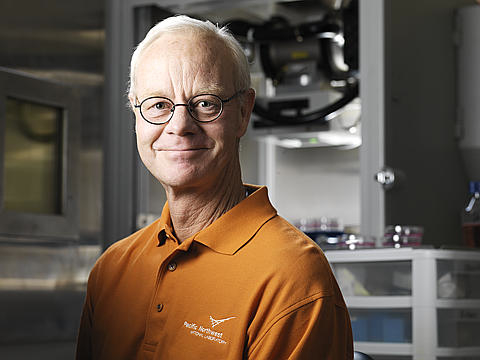
Radiation biologist Dr. Bill Morgan, Pacific Northwest National Laboratory, was interviewed by Nature magazine for an article on a recent international study on the risks of low dose radiation exposure. Morgan, an international expert on radiation effects, discussed the difficulty of communicating even miniscule health risks from low dose radiation exposure, such as that received from medical scans.
Morgan is a Laboratory Fellow at PNNL and director of radiation biology in the Biological Sciences Division. He is a scientific representative for regulatory agencies such as the United Nations Scientific Committee on the Effects of Atomic Radiation, the International Commission on Radiological Protection, and the National Council for Radiation Protection.
Reference: Abbott A, "Researchers pin down risks of low-dose radiation," Nature 523, 17-18 (02 July 2015) DOI: 10.1038/523017a. July 2015Janet Jansson Featured in Quanta Magazine
Dr. Janet Jansson, Director of Biological Sciences at Pacific Northwest National Laboratory, is featured in the June 16 issue of Quanta magazine in "Below Our Feet, a World of Hidden Life." Reporter Elizabeth Svoboda describes Jansson's research on microbes in soil and highlights from a scientific career that spans more than 30 years.
Jansson is internationally known for her work on molecular approaches (omics) to study complex microbial communities, such as those in soil, sediments, and the human gut. The goal of these studies: to predict how these communities will react to different conditions and then "tweak" them to—for example—improve crop yields or capture carbon dioxide.
Jansson is President of the International Society of Microbial Ecology and a Fellow of the American Academy of Microbiology. She also leads the Microbiomes in Transition Initiative at PNNL, a new program that is integrating multidisciplinary research to gain a mechanistic understanding of microbiome function and response to perturbation.
Quanta is an online publication launched by the New York City-based Simons Foundation to enhance public understanding of science.
June 2015Gao's Research Featured in Nature Climate Change
Dr. Yang Gao, atmospheric postdoctoral researcher at Pacific Northwest National Laboratory, co-authored "Persistent Cold Air Outbreaks over North America in a Warming Climate" that was highlighted in the Nature Climate Change May, 2015 edition. The article summarizes the team's research to analyze climate forces that allow extreme cold events to persist of North America, even as the climate gets warmer. Projections show that cold extremes are likely to continue despite climate warming.
Gao has expertise in global and regional climate modeling, especially extreme weather events. He has undergraduate degrees in environmental engineering from universities in China, and a Ph.D. in civil engineering from the University of Tennessee.
Read Nature Climate Change article: "North American cold spells"
Read Earth Day blog post: "Riding the cold weather rollercoaster"
Read about the research into cold air outbreaks: "Cold Snaps Linger Despite Climate Change"
June 2015Yu Receives Secretary of Energy Moniz Recognition
Congratulations to Pacific Northwest National Laboratory's System for Analysis at the Liquid Vacuum Interface (SALVI) team who received a letter of recognition from the U.S. Secretary of Energy Ernest Moniz. Moniz congratulated Dr. Xiao-Ying Yu, a physical chemist, who led the research and development on SALVI, a prestigious 2014 R&D 100 award winner and a winner of the 2015 Award for Excellence in Technology Transfer by the Federal Laboratory Consortium (FLC).
Yu and her team developed PNNL's SALVI allowing for the first-time, powerful chemical imaging of liquids using vacuum instruments such as scanning electron microscopes and time-of-flight secondary mass spectrometry to study liquid surfaces and solid-liquid interfaces in real-time and a realistic microenvironment.
"By transferring what was originally a new tool invented for PNNL's use into the broader scientific community via a commercial partner, PNNL and SPI dramatically expanded SALVI's potential impacts to science, enabling new research never before possible. Your contributions are commendable and reflect well upon you, your colleagues, and the Department of Energy," stated Secretary Moniz in his congratulatory letter.
Read more about the FLC award.
June 2015Chemistry Research at PNNL Mentioned in New York Times
Vanadium salt research at Pacific Northwest National Laboratory was mentioned in the New York Times. In "Liquid Batteries for Solar and Wind Power," Henry Fountain notes the salt chemistry in UniEnergy Technologies' vanadium flow batteries was based on a technology developed at PNNL. The PNNL technology uses a mixed electrolyte that significantly increases the energy density and operation temperature range. UniEnergy was founded by a few former PNNL scientists who worked on the mixed acid electrolyte chemistry while working at PNNL. Recently, one of the largest flow batteries was installed in Pullman, Wash. Researchers are studying how the battery could add electricity to the grid on demand.
The article appeared on April 22, 2015.
May 2015Steven Spurgeon quoted in Supercomputing Online News
Dr. Steven Spurgeon at Pacific Northwest National Laboratory was quoted in Supercomputing Online News about his doctoral work with spintronic memory as an alternative to hard drives and RAM. The SC News article, "Taheri puts a new spin on memory" written by Tyler O'Neal, highlights a group of researchers from Drexel University working to increase the use and capabilities of spintronics for memory devices. Spurgeon's previous research contributed to the group's recently published research in Nature Communications.
May 2015Nigel Browning Quoted in PNAS News
Dr. Nigel Browning at Pacific Northwest National Laboratory was quoted in the Proceedings of the National Academy of Sciences on filming chemical reactions at the atomic scale. The PNAS news article, "Core Concept: Capturing atoms in motion" by Danielle Venton, discusses the development of the dynamic transmission electron microscope that is planned to come online in 2015. The microscope is part of the U.S. Department of Energy Office of Science's Office of Biological and Environmental Research funded EMSL user program. The instrument will provide the ability to film chemical reactions at the atomic scale. Browning is the project leader for the DTEM and directs the Chemical Imaging Initiative at PNNL.
April 2015Battery Video Hits the Big Time
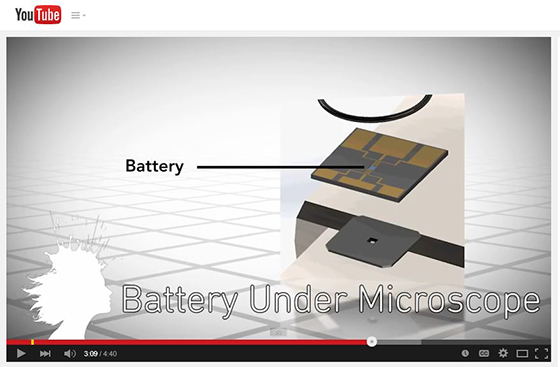
Popular YouTube channel Vsauce2 features PNNL research.
The microscopic view of a battery discharging during research at Pacific Northwest National Laboratory was featured in a popular science YouTube channel called Vsauce2. At Vsauce2, the YouTuber breaks down sometimes-complicated science news into entertaining and educational video clips for a broad audience.
The popular research featured in Vsauce2, and the March issue of the journal Nano Letters, described how PNNL Laboratory Fellow Dr. Nigel Browning, and PNNL chemist Dr. Layla Mehdi used a powerful microscope to watch multiple cycles of charging and discharging batteries. The unique device that makes this all possible is called an operando electrochemical stage. The researchers gained new insight into the chemistry that clogs rechargeable lithium batteries—the kind found in many popular consumer products like cell phones and computers—to understand just why batteries lose their charge so fast.
View the complete Vsauce2 video, or the snippet about batteries.
Read the research highlight, Putting Batteries on Stage Spotlights Performance at the Nanoscale
Hagos MJO Paper Featured in Eos
Dr. Samson Hagos, atmospheric researcher at Pacific Northwest National Laboratory, authored a paper published in the Journal of Geophysical Researcher - Atmospheres which was then chosen as a research spotlight in the American Geophysical Union's Eos Earth & Space Science News weekly newsletter. "Researchers Roll Clouds into Climate Modeling" appeared in the April 2015 newsletter as a summary of how scientists can now explicitly simulate cloud systems in regional and global climate models instead of parameterizing them.
On comparing model simulations that included clouds with what played out in reality during observations as part of the ARM Madden-Julian Oscillation (MJO) Investigation Experiment/Dynamics of the Madden-Julian Oscillation Experiment (AMIE/DYNAMO) field campaigns, the team found factors as small as raindrop physics may affect the accuracy of these state-of-the-art models.
"Our study highlights the utility of using observations to evaluate how well the next generation of climate models, called cloud-permitting models, can directly capture the behavior of clouds," said Hagos. "While these newer models have not yet completely overcome several challenges, they do capture some processes fairly well. For example the relationship between cloud size and depth, which is an important feature of organization of tropical clouds, is well reproduced by the model simulations."
Hagos is a recognized leader in tropical cloud dynamics and regional climate modeling. His research interests are focused on the understanding and modeling of precipitation processes over a wide range of spatio-temporal scales, from the lifecycles of individual convective cells, intraseasonal oscillations and monsoons to their responses to global climate change.
Hagos earned his Ph.D. in atmospheric sciences in 2008 from Cornell University, and was a Postdoctoral Research Associate at the Rosenstiel School of Marine and Atmospheric Sciences of University of Miami before joining PNNL in 2009.
For more, see the PNNL research highlight, "Tall Clouds from Tiny Raindrops Grow."
April 2015Yang Gao Invited Blog Author for Earth Day at Weather Underground
Dr. Yang Gao, atmospheric postdoctoral researcher at Pacific Northwest National Laboratory, was invited to write a community member blog for the Weather Underground's Earth Day events. "Riding the cold weather rollercoaster" explains recent research that indicates extreme cold events, called "cold air outbreaks" will continue over North America, though less frequently, despite global warming trends.
Gao and his PNNL team, Drs. Ruby Leung and Jian Lu, and collaborators from Giacomo Masato and the University of Reading, UK, found that a large swath over North America will still experience the top five coldest historical events, even with global climate warming. These cold snaps can be more deadly than heat waves, with large human and economic costs.
The research analyzed climate forces that allow extreme cold events to persist over the region, even as the climate warms. Understanding these trends and projections will be vital to communities that, while adapting to warmer average temperatures, will still have to be prepared for extreme cold events.
Gao has expertise in global and regional climate modeling, especially extreme weather events. He has undergraduate degrees in environmental engineering from universities in China, and a Ph.D. in civil engineering from the University of Tennessee.
Read the Earth Day blog post.
Read about the research into cold air outbreaks: "Cold Snaps Linger Despite Climate Change"
Janet Jansson Featured on NPR's Science Friday
Dr. Janet Jansson at Pacific Northwest National Laboratory spoke with Ira Flatow on National Public Radio's Science Friday on April 10, 2015, about how permafrost thaw is changing our environment. As temperatures warm, microbes in the permafrost become more active and decompose carbon in the permafrost soil. The permafrost has a large reservoir of carbon available, about twice as much as resides in the atmosphere. In worst-case scenarios, climate change could lead the microbes to release large amounts of methane and carbon dioxide into the atmosphere. Understanding the impacts of climate change on biological systems is a key part of Jansson's research.
April 2015Kravitz Talks Geoengineering with Grist
Dr. Ben Kravitz, a climate researcher specializing in geoengineering studies at Pacific Northwest National Laboratory, was contacted by Grist - an online source of environmental news and commentary for his insight about climate change. The article, "Why we should talk about geoengineering even if we never do it," quoted Kravitz about some concerns that geoengineering could be used to offset the warming of the climate. "Modeling studies of geoengineering have allowed us to ask questions about how the climate system works that we didn't even know we wanted to ask," said Kravitz. "It's actually in some ways changed the way I think about problems in climate science."
With his Rutgers University Ph.D. mentor Alan Robock, Kravitz began an international collaboration called the Geoengineering Model Intercomparison Project. The GeoMIP successfully compares identical geoengineering simulations on climate models today. "My experience is that by talking about geoengineering, I get more people interested in talking about climate change, which I think is a much bigger issue." Kravitz is also hosting a weeklong summer school for early-career scientists interested in climate change.
Geoengineering, sometimes called solar radiation management, is the deliberate reduction in the amount of solar radiation retained by the Earth as a proposed temporary method to reduce some of the effects of greenhouse gases while mitigation is in progress.
March 2015Climate Change Authority Steven J. Smith Quoted in The New York Times
Pacific Northwest National Laboratory scientist Dr. Steven J. Smith was quoted in The New York Times online edition article about a recent International Energy Agency report. The preliminary report indicates that efforts to increase energy efficiency and reduce carbon dioxide emissions may be paying off.
However, several experts, including Smith, indicate caution in interpreting short-term numbers. "We need to be cautious about the meaning of data from any one year," said Smith. "What is important is the long-term trend. We need to understand if the fundamental forces that drive energy and emissions have changed."
Smith, a recognized international expert in global emissions and climate mitigation, works at PNNL's Joint Global Change Research Institute, a partnership with the University of Maryland, located in College Park.
To read the article in The New York Times, see Emissions by Makers of Energy Level Off
March 2015Steven J. Smith Quoted in Climate Central, Scientific American, The Guardian, NBC News
Dr. Steven J. Smith of Pacific Northwest National Laboratory was quoted in several outlets regarding a paper published in the journal Nature Climate Change. The publication "Near-term Acceleration in the Rate of Temperature Change" was co-authored by PNNL researchers Jae Edmonds, Corrine Hartin, Anupriya Mundra, and Kate Calvin.
"Essentially the world is entering a new regime where what is normal is going to continue to change and it's changing at a rate that natural processes might not be able to keep up with," said Smith, as quoted in Climate Central and Scientific American.
The research attracted media attention as one that focused on the critical issue of the rate at which the climate is warming. While other studies have focused on climate over a 100-year perspective, the PNNL study looked at 40-year periods, a time interval important for infrastructure and systems planners.
"We focused on changes over 40-year periods, which is similar to the lifetime of houses and human-built infrastructure such as buildings and roads," said Smith. "In the near term, we're going to have to adapt to these changes."
The researchers work at PNNL's Joint Global Change Research Institute, a partnership with the University of Maryland, located in College Park.
For more, see Climate Central, Scientific American, The Guardian, NBC News, International Business Times, Weather.com, The Carbon Brief, PNNL News Release, PNNL Research Highlight.
March 2015Burrows Quoted in Scientific American on Youth Science Competition
Dr. Susannah Burrows, an atmospheric postdoc researcher at Pacific Northwest National Laboratory, discussed her experience as Science Olympiad alumna and volunteer at the 2015 MIT Invitational in a blog post by Scientific American's Amanda Baker. The article highlights youth science competitions that aim to examine their performance when faced with real scientific research challenges. As an alumna, Burrows expressed the importance of partnership and teamwork in these competitions. Teamwork, such has this, has left a lasting impression throughout her career.
"Science Olympiad is a great way for students to engage with different science topics and at a deeper level than they might in the classroom," said Burrows. "Being part of a team makes the science competition a lot more attractive and fun for many students than competing on an individual basis. Many people think of science as a solitary pursuit, but teamwork is more reflective of how most scientists actually work."
Burrows is a climate modeler whose research explores chemical modeling of marine biogeochemical influence on submicron sea spray particles.
February 2015Rasch Quoted in Tri-City Herald on Cooling Planet Ideas
Dr. Philip Rasch, atmospheric scientist at Pacific Northwest National Laboratory, was quoted in the February 10, 2015 issue of Tri-City Herald on the hot topic - cooling the planet. The article, "Fed Report with PNNL Input: Time to examine purposely cooling planet idea," discuses one idea in particular: to purposely intervene in the planet's climate as a last ditch effort to counter global warming effects.
Using such an artificial shield over the Earth, similar to a cloud, but made of small particles, could be a relatively cheap, effective and quick way to cool the planet by mimicking the natural effects on climate of large volcanic eruptions. But scientists concede there could be dramatic and potentially dangerous side effects that they don't know about.
Rasch, a panelist for the first-of-its-kind National Academy of Sciences discussion on these ideas, was quoted in the article to say that the strategy may be useful to society in the future. "There are many issues associated with climate intervention that are currently poorly understood, and research would help. I'd rather know more than less if we ever need to decide whether to try it," said Rasch.
According to Rasch, the research could also advance knowledge of the way climate processes work, creating a better understanding of the basic physics and chemistry that affect Earth. The government-associated panel said that research in the field would benefit from some kind of governance or other oversight before it is done.
February 2015Ben Kravitz Quoted in The New York Times Op Talk
Dr. Ben Kravitz, atmospheric scientist at Pacific Northwest National Laboratory, was quoted in a February 20 New York Times Op Talk blog. Kravitz is known for his research on atmospheric particles, also known as aerosols, and the way they change how the Earth reflects or absorbs sunlight. The blog explored the idea that a purposeful injection of tiny particles into the atmosphere to reflect sunlight away from the Earth might also alter the night sky, blocking the view of stars. Kravitz stated that the whitening effect of aerosol injections "would be similar to the whiter sky that is often seen in large cities or areas with industrial pollution." Geoengineering is another term for "albedo modification," a theoretical method that could make the Earth more reflective to temporarily alleviate some of the climate warming effects of greenhouse gases. Read The New York Times blog.
Related research: The Bright Side of Arctic Clouds, and Opening a Dialogue on the Future
February 2015Haewon McJeon Quoted in New York Times
Dr. Haewon McJeon, research economist at Pacific Northwest National Laboratory, was quoted in the New York Times regarding expanded use of natural gas as a cleaner alternative to high-emission fuels. McJeon and his colleagues recently published a paper in the journal Nature, "Limited Impact on Decadal-Scale Climate Change from Increased Use of Natural Gas."
McJeon, a researcher at PNNL's Joint Global Change Research Institute (JGCRI), a collaboration with the University of Maryland, stated that "In the absence of a climate-change-mitigation policy, having abundant, lower-cost natural gas alone is not going to significantly reduce greenhouse gas emissions."
McJeon's colleagues at JGCRI, Drs. Jae Edmonds and Leon Clarke, were co-authors on the Nature publication along with several international collaborators.
Read the complete New York Times article.
For more, see "Haewon McJeon Quoted in Scientific American, The Guardian, The Times of London on Nature Publication"
February 2015Justin Teeguarden's BPA Study Featured in WSJ Editorial
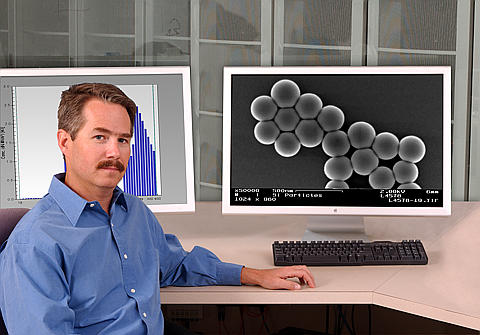
Dr. Justin Teeguarden
The Feb. 11 issue of the Wall Street Journal included an editorial, "Snoopy is Safe After All," triggered by PNNL toxicologist Justin Teeguarden's recent study on bisphenol A (BPA) and a PNNL news release pointing to the study. The research appeared in Toxicology and Applied Pharmacology and was conducted by a team including National Center for Toxicological Research and Ohio State University researchers. News articles about the study and the conflicting views over BPA's health impacts are also scheduled to appear in Scientific American and Newsweek, among others.
February 2015
Bill Morgan Quoted in Science
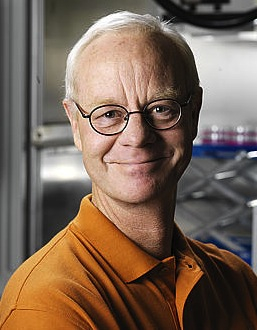
Dr. Bill Morgan
Dr. William (Bill) Morgan, a radiobiologist and laboratory fellow at Pacific Northwest National Laboratory, was quoted in a January 12, 2015 article in Science Insider, the online news site of Science magazine. The article “U.S. lawmakers looking to intensify DOE’s low-dose radiation research” describes a bipartisan bill passed by the House of Representatives January 7 to revitalize the Department of Energy’s Low Dose Radiation Research Program.
Morgan, an internationally renowned leader in radiation biology, is chief scientist of radiation biology and biophysics at PNNL. His research concentrates on the long-term biological effects of low-dose radiation exposure. Morgan is an advisor and representative for agencies such as the United Nations Scientific Committee on the Effects of Atomic Radiation, the International Commission on Radiological Protection, the National Council for Radiation Protection, and the Environmental Protection Agency's science advisory board that provides advice to the Agency on radiation protection and radiation science.
January 20152014
Will Shaw Quoted in Virginian-Pilot on Wind-Measuring Buoy
Dr. William Shaw, atmospheric scientist at Pacific Northwest National Laboratory, was quoted in a December 13 online edition of The Virginian-Pilot serving the Virginia Beach area. The article describes the laser-carrying buoy that will measure offshore wind at different altitudes for one year to assess wind energy potential. The buoys, another of which will also be deployed off Oregon's Coos Bay, carry lidars and other instruments that can measure wind speed and related meteorological and oceanographic variables. The data will be used to better understand wind behavior and enable effective development of offshore wind farms. Shaw is a project manager for the PNNL work to develop and deploy the instruments, sponsored by the Department of Energy.
Read more about this offshore buoy and another buoy site.
December 2014Will Shaw Quoted in Wired on Measuring Wind
Dr. William Shaw, atmospheric scientist at Pacific Northwest National Laboratory, was quoted in November's online Wired article, "Scientists Are Going to Shoot Lasers Into the Sky to Measure the Wind." The article describes the new ocean-going buoys that PNNL is operating for the U.S. Department of Energy to measure how much energy really is in the wind offshore. The measurements will also help engineers determine just how much wind force the turbines need to withstand. To get previously unavailable wind measurements, the team of scientists will measure offshore winds up to 200 meters above the ocean surface beginning in mid-November off the coast of Virginia. Using upward-facing lidar instruments attached to the buoys, they will learn more about how wind behaves offshore, which in turn will help turbine designers produce larger, more efficient turbines. The buoys will be periodically moved to provide new wind measurements at numerous locations along the coasts.
Read more about offshore power potential.
November 2014Haewon McJeon Quoted in Scientific American, The Guardian, The Times of London on Nature Publication
Dr. Haewon McJeon of Pacific Northwest National Laboratory was quoted in multiple outlets regarding his research paper recently published in the journal Nature. The publication "Limited Impact on Decadal-Scale Climate Change from Increased Use of Natural Gas" was co-authored by PNNL researchers Dr. Jae Edmonds, Leon Clarke, and several international collaborators.
The research attracted international attention as the first study to conduct comprehensive modeling studies showing that a global abundance of inexpensive natural gas would not reduce greenhouse gas emissions in the absence of climate policy.
McJeon, Edmonds and Clarke are researchers at PNNL's Joint Global Change Research Institute, a collaboration with the University of Maryland.
For more, see Scientific American, The Christian Science Monitor, US News & World Report, The Hill, Discovery News, The Times of London, The Guardian, Associated Press, and Nature's own News & Views post.
November 2014Ian Kraucunas Comments in Yale Climate Connections Podcast
Dr. Ian Kraucunas was featured in a November 5th posting of Yale's Climate Connections podcast series. Kraucunas, Pacific Northwest National Laboratory's deputy director of the Atmospheric Sciences & Global Change division explained why climate change projections are important to inform everyday decision making.
November 2014Phil Rasch Quoted in Forbes on Great Climate Modeling
Dr. Philip Rasch, Pacific Northwest National Laboratory Chief Scientist for Climate Science, was quoted in the October online issue of Forbes. The article, "The Great Climate Model," describes the newly developed Accelerated Climate Modeling for Energy (ACME) project, a collaboration between eight U.S. Department of Energy national laboratories, the National Center for Atmospheric Research, four academic institutions and one private company. The ACME team is developing a forward-looking state-of-the-art climate model using high performance computing. In the Forbes article Rasch explains, "Development of the new model requires a significant reframing of process representations and advanced computational methods directed toward the next generation of computers." The new model will aid in figuring out the changes the Earth is going through with climate change. See related: New Project is the ACME of Addressing Climate Change.
October 2014Ben Kravitz Quoted in IOP News Blog for Geoengineering Work on Climate Change
Dr. Ben Kravitz, a postdoctoral researcher in atmospheric sciences at Pacific Northwest National Laboratory, was quoted in environmentalresearchweb, the IOP community website on his recent solar geoengineering paper. Discussing the publication in Environmental Research Letter, "A multi-model assessment of regional climate disparities caused by solar geoengineering," the article quoted lead author Kravitz on the concerns of solar geoengineering used to offset the warming of the climate and some examples of the tradeoffs that could arise across different regions. The takeaway: solar geoengineering alone is not the answer to slowing climate warming, but depending on the regional needs geoengineering can offset some of the effects. "If society continues to increase carbon dioxide emissions and offsets the climate change with geoengineering, we would need to do continually more geoengineering to keep up with increasing emissions," said Kravitz.
Geoengineering—deliberate reduction in the amount of solar radiation retained by the Earth—is a proposed temporary way of reducing some of the effects of greenhouse gases while mitigation is in progress.
September 2014Aaron Wright Quoted on Innovative Protein Profiling
Dr. Aaron Wright, Pacific Northwest National Laboratory, discussed his recent research in a Genetic Engineering & Biotechnology News article, "Protein Profiling Plumbs Hidden Depths." The article features the Wright-led study on profiling functional enzymes in the lysosomes of living cells. Because of the lysosome's role in fighting diseases, this work provides insights relevant to the progression of neurodegenerative conditions and other diseases. The study by Susan Wiedner, Lindsey Anderson, Natalie Sadler, William Chrisler, Vamsi Kodali, Richard Smith, and Aaron Wright appears in Angewandte Chemie.
September 2014Jim De Yoreo Quoted in Chemical & Engineering News

Dr. Jim De Yoreo, Chief Scientist of PNNL's Materials Synthesis and Simulation across Scales Initiative, was quoted in Chemical & Engineering News.
Dr. Jim De Yoreo at Pacific Northwest National Laboratory was quoted in Chemical & Engineering News about his recent study that showed that calcium carbonate formation can take previously unseen pathways. The C&E News article, "Spying on Crystal Formation" written by Mitch Jacoby, is based on a study De Yoreo co-authored in Science: "In situ TEM imaging of CaCO3 nucleation reveals coexistence of direct and indirect pathways." The research was done with colleagues at Lawrence Berkeley National Laboratory and University of California at Berkeley.
September 2014Yoon Quoted Nationwide on Melting Sea Ice
Jin-Ho Yoon, climate physics scientist at Pacific Northwest National Laboratory, was quoted in more than 250 outlets nationwide regarding a recent publication on how shrinking sea ice contributes to a weakening polar vortex, which can be potentially linked to cold weather in the United States or other parts of the world. The article, "Study Links Polar Vortex Chills to Melting Sea Ice," ran in outlets ranging from the local Herald to The Associated Press. Yoon also is co-author of the publication, "Weakening of the Stratospheric Polar Vortex by Arctic Sea-ice Loss," appearing in September's issue of Nature Communications. In the article, Yoon and his co-authors describe the polar vortex, which usually stays in the Arctic, wandering south from time to time, but recently has moved more southward, as being disturbed by the sea ice loss over the Kara-Barents Sea region. When there is less ice, more energy can move from the relatively warm ocean surface to the atmosphere and disturb the polar vortex. Although this mechanism is newly identified, there are other processes that potentially compete or work simultaneously to cause the polar vortex to weaken, creating cold air outbreaks.
September 2014Kraucunas Quoted on Science Politics and Climate Change
Ian Kraucunas, Deputy Director of the Atmospheric Sciences and Global Change Division at Pacific Northwest National Laboratory, was quoted in New Security Beat, a blog of the Environmental Change and Security Program. The article, "Ian Kraucunas on Bridging the Science-Politics Divide for Climate Change," is based on a talk that he gave at the Woodrow Wilson Center as part of a symposium on national security and climate change.
Kraucunas is an atmospheric scientist leading an interdisciplinary team to formulate simulation tools designed to help regional stakeholders develop and evaluate strategies for responding to complex climate issues. In the article, he describes some of the direct and indirect risks posed by climate change and explains how scientists can assist political leaders in making informed decisions. Kraucunas explains that it is important to consider multiple climate scenarios and to evaluate climate information in the context of other risks and opportunities facing decision makers, rather than as a stand-alone consideration. The article also presents some of the newest scientific research that is available to help inform climate-related decision making in different regions.
For more, read the complete article, “Ian Kraucunas on Bridging the Science-Politics Divide for Climate Change.”
August 2014Aaron Wright, Natalie Sadler Quoted in C&E News on Chemical Probes

Aaron Wright
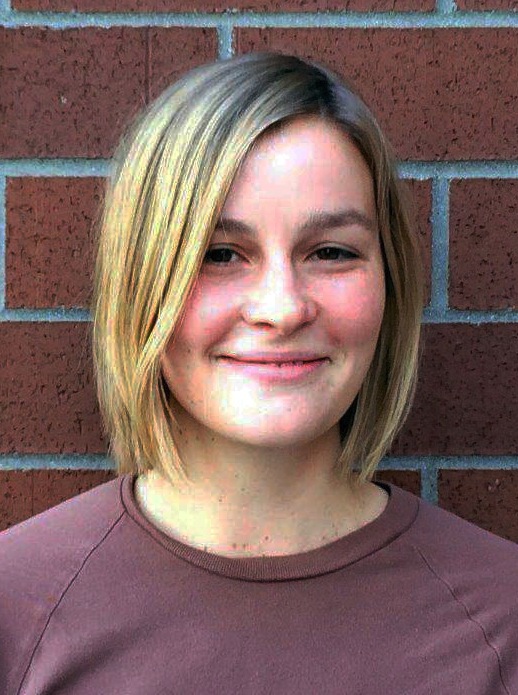
Natalie Sadler
Aaron Wright and Natalie Sadler, Pacific Northwest National Laboratory, were quoted in a C&E News article "Probes Search Live Cyanobacteria For Biofuel-Production-Boosting Proteins." They were interviewed after a presentation Sadler made at the American Chemical Society national meeting in San Francisco August 10 on cell-permeable chemical probes developed at PNNL.
According to Wright, who led the research, "We want to identify proteins where redox chemistry acts like a switch, and where keeping that switch on keeps production of your hydrogen or alkane fuel flowing." The article also contains outside opinions on the work by two of the most renowned scientists in the chemical biology field: Christopher J. Chang at University of California, Berkeley, and Kate Carroll, a protein redox regulation expert at Scripps Research Institute Florida. August 2014Morris Bullock Quoted in Prestigious Scientific Journal

Morris Bullock was quoted in the August 8, 2014, issue of the Science.
In the August 8 issue of Science, Dr. Morris Bullock at Pacific Northwest National Laboratory is quoted as an outside expert on a new ammonia production method. In the article titled "New Recipe Produces Ammonia from Air, Water, and Sunlight," writer Robert Service covers work at George Washington University that uses a molten mixture of sodium hydroxide and potassium to synthesize ammonia. Bullock is quoted about the significance of the research.
At the national laboratory, Bullock leads the Center for Molecular Electrocatalysis, an Energy Frontier Research Center funded by the U.S. Department of Energy, Office of Science, Basic Energy Sciences. He is a Fellow of the Royal Society of Chemistry and American Chemical Society. His work in developing transition metal electrocatalysts earned him the Royal Society of Chemistry's Homogeneous Catalysis Award in 2013.
August 2014Jim De Yoreo Quoted on Innovative Material Synthesis Approach in Physics World

Dr. Jim De Yoreo, Chief Scientist of PNNL's Materials Synthesis and Simulation across Scales Initiative, was quoted in Physics World.
Dr. Jim De Yoreo at Pacific Northwest National Laboratory was quoted in Physics World about a self-assembly method, based on viruses and DNA, that places fluorescent molecules within just a few nanometers of a gold nanoparticle. As De Yoreo notes, "This [approach] provides a means of creating an intense electromagnetic field near an ensemble of light-absorbing centres, thus allowing us to greatly increase the capture of light." The Physics World article is based on a study De Yoreo co-authored: "Hierarchical Assembly of Plasmonic Nanostructures Using Virus Capsid Scaffolds on DNA Origami Templates" in ACS Nano. The research was done by scientists at PNNL, Lawrence Berkeley National Lab, University of California at Berkeley, and Arizona State University.
August 2014Gordon Bell Prize Narrowed to Five Finalists
PNNL's Adolfy Hoisie Chairs Association for Computing Machinery's Gordon Bell Prize Committee
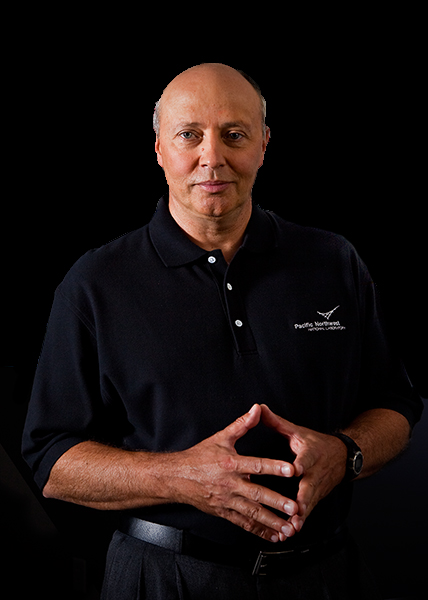
Dr. Adolfy Hoisie is a past Gordon Bell Prize winner.
This month, the Association for Computing Machinery’s Gordon Bell Prize Committee, chaired by Adolfy Hoisie, a PNNL Laboratory Fellow and director of the Advanced Computing, Mathematics, and Data Division, announced they had narrowed the list of contenders for the prestigious award to five finalists. According to Hoisie, each finalist represents advances for the high-performance computing (HPC) research area in new or specialized architectures, algorithms and applications leading to high performance, or increased system and application performance.
ACM’s Gordon Bell Prize is awarded annually, recognizing outstanding achievement in HPC. The award tracks the progress of parallel computing, emphasizing innovation in applying HPC to applications in science, engineering, and large-scale data analytics. In 1996, Hoisie was awarded the Gordon Bell Prize (price/performance category) for running an electronic structures calculation on a multiprocessor at 6.3 Gf/s/$M (billion floating-point operations per second per million dollars).
This year’s Gordon Bell Prize winner and runner-up honorable mention will be announced during an awards ceremony at SC14 this November in New Orleans.
To learn more about the 2014 Gordon Bell Prize finalists, read the ACM release available here.
Yu Research Paper Achieved 3000 Downloads
Dr. Xiao-Ying Yu, atmospheric scientist at Pacific Northwest National Laboratory, recently reached an impressive 3,000 downloads on a published book chapter in InTech. Her chapter in Integrated Waste Management–Volume I, “Measurements of Carbonaceous Aerosols using Semi-Continuous Thermal-Optical Method” discusses the impact of waste management on emitting carbon-containing aerosols, a big contribution to pollution. Published in August 2011, the paper has been a most popular download in the United States, India, China, Italy, and the United Kingdom.
July 2014Burrows Quoted on Sea Spray Research in IOP News Blog
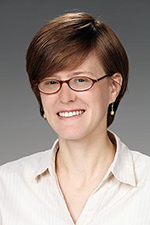
Dr. Susannah Burrows
Dr. Susannah Burrows, atmospheric researcher at Pacific Northwest National Laboratory, was quoted in the IOP community website, environmentalresearchweb for her recent co-authored paper, "Prospects for Simulating Macromolecular Surfactant Chemistry at the Ocean-Atmosphere Boundary" published in Environmental Research Letters. Until recently, most atmospheric climate models treated sea spray as sea salt. As explained in the paper, researchers are beginning to quantify and evaluate the large amount of organic matter in sea spray, finding its composition varies hugely depending on local conditions. For the first time, climate models can mechanistically predict the amount of organic matter in sea spray. Burrows is a climate modeler whose research explores chemical modeling of marine biogeochemical influence on submicron sea spray particles.
July 2014Rasch, Guenther Make Highly Cited Researchers 2014 List
Researchers at Pacific Northwest National Laboratory are impacting the atmospheric science community, with the science to prove it. Highly Cited Researchers found that two of PNNL's atmospheric scientists, Phil Rasch and Alex Guenther, are among the top cited researchers in average citations per paper in the category of geosciences. The ranking was found with InCites, a Thomson Reuters analytical tool that combed their database of indexed published papers from 2002-2012. Representing the top 1% in their field, only 250 researchers in each field were selected based on total citations to their papers published during this period.
Read more here: http://highlycited.com/info.htm
For more, see Five PNNL researchers named among the world's most cited
For a searchable list, see: http://isihighlycited.com/
July 2014Leon Clarke and Jae Edmonds Quoted on IPCC Report Conclusions
Leon Clarke and Jae Edmonds of Pacific Northwest National Laboratory were quoted in numerous media outlets concerning the third of three recent working group reports, "Mitigation of Climate Change," from the Intergovernmental Panel on Climate Change (IPCC). Clarke, coordinating lead author of the report's chapter on mitigation strategies, explained that future options will be limited by the actions societies take now to lower carbon emissions. Clarke is a senior research economist working on model analysis and the role of technology to address climate change.
In The Washington Post: "'The longer we wait, the harder this is going to get,' said Leon Clarke, a senior research economist at the Pacific Northwest National Laboratory...."
Edmonds, a Battelle Fellow and senior scientist at PNNL, is lead author of the report's chapter on energy systems. He was quoted about the trade-offs involved in choosing energy systems through emissions reduction, cost and climate change.
In ClimateWire: "'From an energy perspective, the growth of gas is a big deal,' said James Edmonds. ...‘From a climate perspective, maybe less so.' Gas reduces carbon emissions when it displaces coal, he said, but raises them when it displaces renewables or nuclear power."
Clarke and Edmonds work at the Joint Global Change Research Institute, a partnership between the University of Maryland and PNNL, located in College Park, Maryland.
See also The Washington Post, The Christian Science Monitor, ClimateWire, Mashable, On Point - WBUR, USA Today, National Geographic and Science.
For more information, read the Working Group III report and watch a video statement by Edmonds.
May 2014Aaron Appel Quoted on Catalyst for Ethanol Fuel
Dr. Aaron Appel at Pacific Northwest National Laboratory wrote a News & Views article in Nature about copper-based materials that efficiently convert carbon monoxide and water to ethanol. The discovery, made at Stanford University, is a major advance towards storing renewable energy in the form of a liquid fuel. This article led to Appel being quoted in a story by Reuters' Will Dunham that appeared in multiple outlets, including the Wichita Eagle, the New Hampshire Union Leader, the Toledo Blade, and Deutschlandfunk.
April 2014Dooley Quoted in National Geographic on Coal Impacts
James Dooley, Pacific Northwest National Laboratory senior scientist working at the Joint Global Change Research Institute, a partnership between PNNL and the University of Maryland, was quoted in the April issue of National Geographic. The article "Can Coal Ever Be Clean?" describes the leading role coal plays in driving global climate change as well as the local ecological impacts associated coal mining. Dooley is an expert on greenhouse gas emissions mitigation technologies and in particular on carbon dioxide capture and storage (CCS). In the National Geographic article, he states that while CCS is a promising component of how humanity can address climate change, CCS will not begin to deploy commercially unless there are regulations in place that establish a penalty for releasing greenhouse gases to the atmosphere or otherwise encourage the use of this technology. Dooley's research has shown that CCS technologies that exist today can play a critical role in reducing the global climate impacts associated with fossil fuel use, and can do so at a reasonable cost.
April 2014LA Times Cites PNNL Climate Modeling in Geoengineering Article
Geoengineering modeling research at Pacific Northwest National Laboratory is proving impactful in a recent article in the Los Angeles Times. The article, "Climate engineering ideas no longer considered pie in the sky" includes PNNL research assessing the impacts of geoengineering techniques. The article covers proposed geoengineering techniques, as well as several efforts to assess geoengineering. Geoengineering describes deliberate technologies proposed by some as a temporary way of reducing the climate effects of greenhouse gases while mitigation is in progress.
March 2014PNNL Research Makes Top Ten in Journal of Hydrometeorology
Researchers at Pacific Northwest National Laboratory are having an impact in understanding how surface water processes intersect with land, atmosphere and climate systems. Two recent papers led by PNNL researchers are now in the top ten most read papers for the previous 12 months at the Journal of Hydrometeorology (JHM).
PNNL researchers in the two studies include Larry Berg, Andre Coleman, Maoyi Huang, Yinghai Ke, L. Ruby Leung, Hong-Yi Li, and Mark Wigmosta.
The two papers include research on a new river-routing model that improves simulation of water flow at different scales than some widely used large-scale routing models. See the highlight, Rivers Run Right Through It...The Model; and research that included irrigation in a climate model to find it tips the balance of water vapor and upward moving air to affect the boundary layer and shallow cloud systems. See the highlight, Irrigation's Impact on Clouds and Climate.
A journal of the American Meteorological Society, JHM publishes the science of modeling and forecasting water and energy fluxes, interactions with the lower atmosphere and boundary layer, and precipitation, radiation and associated meteorological processes.
February 2014James Amonette Quoted in Capital Press
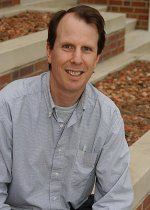
Dr. James Amonette, a geochemist at Pacific Northwest National Laboratory, was quoted in a story about the agriculture industry considering potential uses for biochar, a charcoal formed by heating biomass in the absence of oxygen. Biochar has the potential to both sequester carbon and help with soil fertility, especially in the tropics where soils are typically quite acidic. When added to soil, biochar degrades extremely slowly according to Amonette. The article "Bringing up biochar" was published on February 6 in Capital Press.
February 2014Kleese Van Dam Quoted in Genetic Engineering & Biotechnology News
In the January 2014 issue of Genetic Engineering & Biotechnology News, PNNL's Kerstin Kleese van Dam, an associate division director in CSMD and Technical Lead of the Scientific Data Management Group, is featured as part of an article highlighting the upcoming Big Data and Analytics in Life Sciences Forum, hosted by the International Quality & Productivity Center in Boston on January 27-28, 2014.
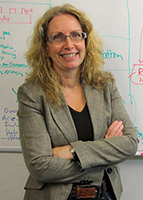
Kerstin Kleese van Dam discusses big data.
In the article, "Big Data Expected to Impact Pharma R&D," which also examined how to manage, and benefit from, the vast amounts of data affecting pharmaceutical development, Kleese van Dam is quoted describing the work of the Chemical Imaging, Future Power Grid and Analysis in Motion initiatives at PNNL in creating tools that address this confluence of volume, rate and heterogeneity of informatics data. Notably, she explained the role of three data paradigms that PNNL uses to simultaneously organize and interpret data throughout the research process: always on analysis, analysis in motion and analytics at the edge.
Kleese van Dam will present "Case Study: Advances in Predictive Analytics" at the Big Data and Analytics in Life Sciences Forum on Tuesday, January 28 at 1:30 PM.
January 20142013
Kravitz Quoted in ClimateWire and Science on Geoengineering Studies
Dr. Ben Kravitz, atmospheric researcher at Pacific Northwest National Laboratory, was quoted in two news articles for the prestigious ClimateWire and Science. The devastating consequences of starting and suddenly stopping a climate engineering process could dangerously accelerate climate change, according to the study featured in ClimateWire's article. Kravitz, a member of the science team that ran the study's models, noted that benefits of these techniques are not only unproven, but the secondary effects of starting and stopping them are unknown.
In a related article, Kravitz was quoted in a Science News Focus article commenting on a colleague's contribution to the study of climate engineering, also known as geoengineering. Kravitz is a climate modeler whose research explores geoengineering techniques and their possible limits and consequences.
Geoengineering—deliberate reduction in the amount of solar radiation retained by Earth—is a proposed temporary way of reducing some of the effects of greenhouse gases while mitigation is in progress.
December 2013Morris Bullock Quoted in New York Times

Morris Bullock was quoted in the December 2, 2013, issue of the New York Times
In the December 2 issue of the New York Times, an American daily newspaper that has won 112 Pulitzer Prizes, Dr. Morris Bullock at Pacific Northwest National Laboratory is quoted on the diversity of approaches to the discovery of molecular catalysts as alternatives to precious metals. In the article, "Building a Cheaper Catalyst," writer Douglas Quenqua covers creation of catalysts based on iron and cobalt reported by three teams. These metals could replace precious metals, which have toxicity and cost issues. Bullock is quoted regarding the impact of the diverse recipes used.
Bullock leads the Center for Molecular Electrocatalysis, an Energy Frontier Research Center funded by the U.S. Department of Energy, Office of Science, Basic Energy Sciences. He is a Fellow of the Royal Society of Chemistry and American Chemical Society. His work in developing transition metal electrocatalysts has earned him the Royal Society of Chemistry's Homogeneous Catalysis Award in 2013.
December 2013Morris Bullock Quoted in C&E News

R. Morris Bullock, Center for Molecular Electrocatalysis Director
Dr. Morris Bullock at Pacific Northwest National Laboratory is quoted in the December 16 issue of Chemical & Engineering News. In the article, "Catalysts that are less precious," Deputy Assistant Managing Editor Stu Borman covers three new catalytic studies about using iron and other earth-abundant metals. These metals could replace palladium and other precious metals, which present cost and toxicity issues. Bullock is quoted at the conclusion of the article regarding the diverse approaches: "there is no exclusive single 'recipe' for success in developing catalysts based on cheap metals -- an observation that is encouraging to chemists seeking to design and develop catalysts based on abundant, inexpensive metals."
Bullock leads the Center for Molecular Electrocatalysis, an Energy Frontier Research Center funded by the U.S. Department of Energy, Office of Science, Basic Energy Sciences. He is a Fellow of the Royal Society of Chemistry and American Chemical Society. His work in developing transition metal electrocatalysts has earned him the Royal Society of Chemistry's Homogeneous Catalysis Award in 2013.
December 2013Morris Bullock Quoted in Chemistry World

Dr. R. Morris Bullock
Dr. Morris Bullock at Pacific Northwest National Laboratory is quoted in Chemistry World, the Royal Society of Chemistry's magazine. In the article, "Base metal catalysts strike hydrogenation gold," writer Andy Extance discusses three new studies about iron and other earth-abundant catalysts. These metals could replace precious metals, such as rhodium and palladium, which offer cost and toxicity challenges. Bullock highlights the value these catalysts present to reactions responsible for creating pharmaceuticals and producing energy.
Bullock leads the Center for Molecular Electrocatalysis, an Energy Frontier Research Center funded by the U.S. Department of Energy, Office of Science, Basic Energy Sciences. He is a Fellow of the Royal Society of Chemistry and American Chemical Society. His work in developing transition metal electrocatalysts has earned him the Royal Society of Chemistry's Homogeneous Catalysis Award in 2013.
December 2013Ilke Arslan featured in DOE Pulse
The November 18 issue of DOE Pulse featured Dr. Ilke Arslan of Pacific Northwest National Laboratory. The article discusses how this diplomat's daughter, who completed her doctoral degree at the age of 25, applies the fundamentals of physics to change the scientific community's view of nanoparticles. Her research is working towards the goal of providing a clear view of a working catalyst in real time, in three dimensions, and at the atomic scale. Arlsan's imaging work is providing fundamental answers for her teammates in PNNL's Chemical Imaging Initiative and Institute for Integrated Catalysis.
Read the DOE Pulse article "Ilke Arslan: A catalyst for clarity."
November 2013Cho, Cort, and Fraga Quoted in C&E News
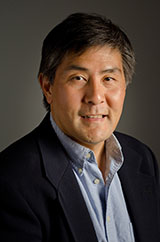
Herman Cho
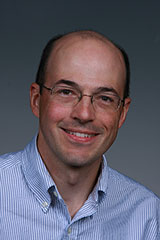
John Cort
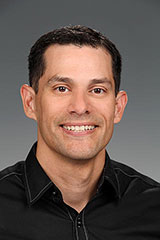
Carlos Fraga
The chemical forensics work of Herman Cho, John Cort, and Carlos Fraga at Pacific Northwest National Laboratory was called out in Chemical & Engineering News. Reporter Carmen Drahl had readers vote on what she would cover each day at the American Chemical Society's fall meeting in Indianapolis. A symposium on analytical methods in chemical forensics, organized by Cho, Cort and Fraga, received the most votes and was highlighted in her article. The PNNL scientists are supported by federal agencies to research methods for tracking illicit substances and materials used to produce chemical weapons. The session included talks about recent advances, including Cort's discussion of recent nuclear magnetic resonance spectroscopy advances. Cho and Cort are in PNNL's Fundamental & Computational Sciences Directorate; Fraga, National Security.
November 2013Ian Kraucunas Quoted in Ensia
Ian Kraucunas, Deputy Director of the Atmospheric Sciences and Global Change Division at Pacific Northwest National Laboratory, was quoted in Ensia, a magazine addressing environmental solutions. The article, The Value of Talking About Values, coincided with the release of the Intergovernmental Panel on Climate Change's Fifth Assessment Report, which documents the current state of the science of climate change. The article examines how people react to climate change science and proposed solutions, based on their personal values. Kraucunas recounts an enlightening anecdote from his previous position with the Board of Atmospheric Sciences and Climate at the National Research Council and provides an analogy to help illustrate how values intersect with facts in the context of political decision making. The article goes on to discuss some of the perils of allowing scientific research to become a proxy for debates over values, and what might be done to ensure that science effectively informs, rather that exacerbates, political debates.
For more, read the complete article, "The Value of Talking About Values."
October 2013Smith Paper Featured in Science Magazine Editor's Choice
A Science magazine "editor's choice" article discussed recent work by Dr. Steven Smith, senior scientist at Pacific Northwest National Laboratory. The article, "Which Emissions to Reduce?" covered Smith's new results concerning the merits of prioritizing reducing climate-affecting pollution emissions that have a short life in the atmosphere, versus focusing on reducing long-lived greenhouse gases. The publication concludes that a policy of targeting short-term climate forcers may not achieve the reductions in climate change that previous work had postulated. Smith is well-known for his research on the role of pollutant emissions in scenarios of future climate change. He works at the Joint Global Change Research Institute, a partnership between PNNL and the University of Maryland. Read the full article.
October 2013Cort, Metaxas Research Featured in Chemical & Engineering News
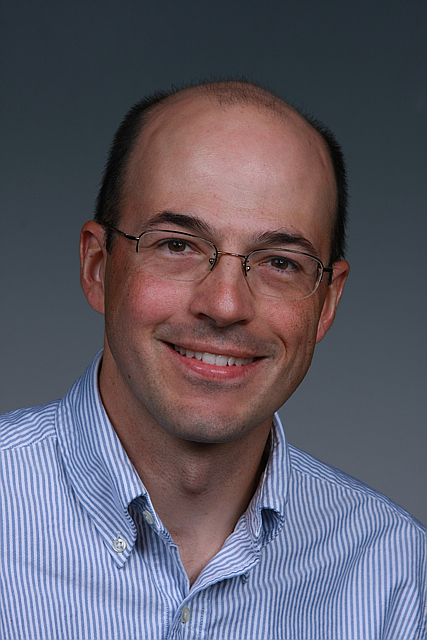
John Cort
Research by Pacific Northwest National Laboratory scientist Dr. John R. Cort and PNNL undergraduate summer intern Athena E. Metaxas was highlighted by Chemical & Engineering News reporter Carmen Drahl in the September 16 issue. "NMR Method Can Chase Down Chemical Threats," described the researchers' use of nuclear magnetic resonance spectroscopy to clearly distinguish different salt forms of the highly toxic alkaloid strychnine from one another based on the way different counterions such as chloride or sulfate influence the NMR spectra.
The ability to associate chemicals with their source or with other samples having a common origin is fundamental to the establishment of attribution signatures for chemical forensics. This method may be applicable to other organic compounds of interest that commonly exist as two or more distinct salt forms, including many pesticides, counterfeit pharmaceuticals, illicit drugs, and biological toxins.
Reference: Metaxas AE and JR Cort. 2013. "Counterion Influence on Chemical Shifts in Strychnine Salts." Magnetic Resonance in Chemistry 51(5):292-298. DOI: 10.1002/mrc.3945.
September 2013John Loring Quoted in Physics Today Online
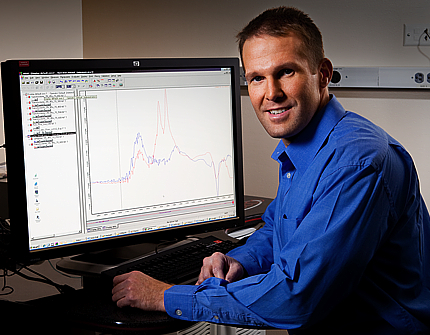
John Loring
Dr. John Loring, a geochemist at Pacific Northwest National Laboratory, was quoted by reporter Rachel Berkowitz about PNNL's investigations related to carbon dioxide storage under the Carbon Sequestration Initiative. The article "Trapping and keeping carbon dioxide emissions" was published in the September 11 online edition of Physics Today. Loring is a principal investigator for the CSI's project "In Situ Molecular-Scale Investigations of Reactions between Supercritical CO2 and Minerals Relevant to Geological Carbon Storage."
September 2013Meredydd Evans Quoted in Concentrated Solar Power Today
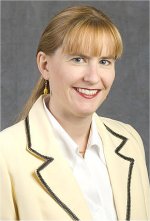
Meredydd Evans
Meredydd Evans, energy efficiency expert and scientist at Pacific Northwest National Laboratory, was quoted in CSP Today, an online trade publication reaching professionals and researchers interested in new technologies and research for the concentrated solar power industry. The article explores how China might use clean energy options for district heating. Evans has worked extensively in China and collaborated with researchers, engineers, government and policy offices in the region. She is internationally known for her work in building energy codes, energy efficiency and clean energy policy and conducts research at the Joint Global Change Research Institute (JGCRI) in Maryland. JGCRI is a partnership between PNNL and the University of Maryland. Read the full article.
September 2013Ruby Leung Authored Regional Climate Model Article in EOS
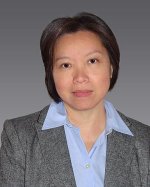
L. Ruby Leung
Dr. L. Ruby Leung, atmospheric scientist at Pacific Northwest National Laboratory, wrote a feature article for EOS, Transactions of the American Geophysical Union (AGU), published August 20. The report describes recent advancements in regional climate modeling through a project called Development of Frameworks for Robust Regional Climate Modeling. Leung describes a hierarchical framework to systematically evaluate climate simulations at regional scales and insights from several studies that analyzed simulations generated as part of the hierarchy to understand discrete challenges in regional climate simulations. Leung is a world-renowned leader in regional climate modeling, is co-principal investigator of the North American Regional Climate Change Assessment Program, and is a designated fellow of the American Association for the Advancement of Science, the American Meteorological Society, the AGU and a member of the Washington State Academy of Sciences. Read the full article.
September 2013Szanyi and Peden featured in Chemical & Engineering News
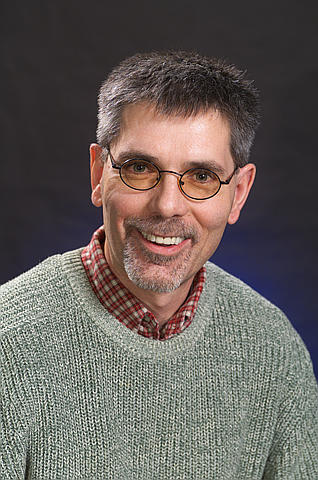
Janos Szanyi
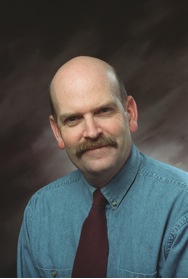
Chuck Peden
In the August 26 issue of Chemical & Engineering News, Mitch Jacoby discussed the research of Pacific Northwest National Laboratory scientists Janos Szanyi and Charles H.F. Peden, and their team. The article "Pinpointing Intermediates," identifies the key geometries and oxidation states in catalysts for NOx cleanup, and shows the connection to enzyme catalysis. Szanyi was quoted explaining how tailoring the catalyst can help certain engines meet emission standards.
Article link: http://cen.acs.org/articles/91/i34/Pinpointing-Intermediates.html
September 2013Climate Modeling of Geoengineering: Meeting report featured in EOS
Dr. Ben Kravitz, atmospheric postdoctoral researcher at Pacific Northwest National Laboratory, co-authored "Robust Results from Climate Model Simulations of Geoengineering" published in the August 13 edition of EOS. The publication is a summary report from the Geoengineering Model Intercomparison Project (GeoMIP) meeting held in April 2013. Solar geoengineering—deliberate reduction in the amount of solar radiation retained by the Earth—is a proposed temporary way of reducing some of the effects of greenhouse gases while mitigation is in progress. GeoMIP uses climate models developed around the world to simulate the effects of solar geoengineering in response to greenhouse gas emissions.
September 2013Ben Bond-Lamberty Blogs for PLOS Biology
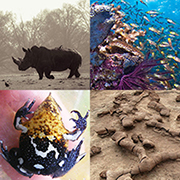
Sharing his expertise, Pacific Northwest National Laboratory's scientist Dr. Ben Bond-Lamberty authored an introduction to the Ecological Impact of Climate Change Collection for the Public Library of Science (PLOS) journals. As an editor for PLOS ONE, Bond-Lamberty curated a list of publications in conjunction with the 2013 Ecological Society of America meeting. His article presents the broad range of research within the Collection that reveals the multi-faceted impacts of climate change on ecological and human systems. The article is published in PLOS Collections and on the PLOS EveryONE blog.
The Public Library of Science (PLOS) is a nonprofit publishing, membership, and advocacy organization with a mission to accelerate progress in science and medicine by leading a transformation in research communication. Bond-Lamberty works out of the Joint Global Climate Research Institute, a partnership between PNNL and the University of Maryland.
See also: Discover Magazine news release, "How 9 Well-Known Critters are Weathering a Changing Climate," and the Huffington Post news release "PLOS Research Predicts Climate Change ‘Winners' and ‘Losers'."
August 2013Nigel Browning Commentary in Nature Chemistry
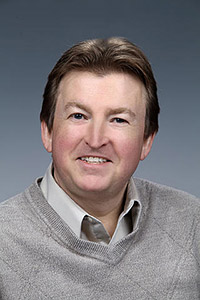
Nigel Browning serves as the Chief Science Officer on PNNL's Chemical Imaging Initiative
A commentary by Dr. Nigel Browning, the Chief Science Officer for the Chemical Imaging Initiative at Pacific Northwest National Laboratory, was recently published in Nature Chemistry. The commentary featured recent four-dimensional electron microscopy (4D-EM) work done by the research group of Nobel prize winning scientist Ahmed Zewail. Browning highlighted the wealth of new information 4D-EM has revealed about how electronic phase transitions occur in individual nanoparticles, how the particle-to-particle variability changes the speed and magnitude of the transition, and how interactions between nanoparticles control the ensemble-average response of the system. The power of 4D-EM to image structural dynamics on the scale of a few hundred nanoseconds and allow the switching dynamics to be quantified makes a unique contribution to the study of nanostructures. A broad class of electronic phase transitions in individual nanomaterials can now be studied directly using 4D-EM.
August 2013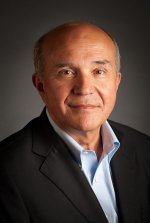
Johannes Lercher
Johannes Lercher Quoted in Nature
Dr. Johannes Lercher, who is PNNL's Institute for Integrated Catalysis Director, was quoted in "Here, there and everywhere," in May 23, 2013, in Nature. The article discusses scientists who travel extensively in their job and how they manage the additional challenges and opportunities it brings. Lercher was quoted because in addition to his work in Richland, Washington, he is also a professor at TU Munich in Germany. In regards to his situation, Lercher states, "It broadens your horizons. You can do things you cannot do in a single location."
May 2013
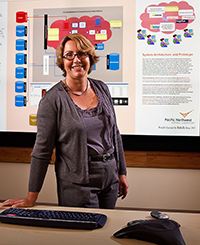
Kerstin Kleese van Dam
Kerstin Kleese van Dam Authors Big Data Article
The Multimodal Analysis and Integration Framework for Chemical Imaging lead at Pacific Northwest National Laboratory, Dr. Kerstin Kleese van Dam wrote about the need for in-situ management and analysis of massive experimental data sets in Datanami. The Rapid Experimental Analysis Framework and Component Library, REXAN, is discussed. Developed through the Chemical Imaging Initiative, REXAN provides a library of analytical components for essential actions, including compressions, feature detection and visualization. In the future, Kleese van Dam expects to see a publically available REXAN repository with open-source and proprietary components that allow scientists to build near-real-time analysis tools.
April 2013
Sotiris Xantheas' Work Highlighted in Chemical & Engineering News
Research by Dr. Sotiris Xantheas at Pacific Northwest National Laboratory on how the classic SN2 bimolecular nucleophilic substitution reaction, a reaction of fundamental importance in organic chemistry, is halted in the gas phase by just two or three water molecules was highlighted in a 2-page story in Chemical & Engineering News, February 25. The reaction exchanges atoms or functional groups attached to an electron-deficient carbon center. The reaction works well in organic solvents, but not in water. Xantheas and his colleagues at Hiroshima University, in a Communication which will appear in the Angewandte Chemie International Edition, combined theory and experiment to gain a molecular-level understanding of how the water stops the reaction.
February 2013
Morris Bullock Named Geek of the Week
Center for Molecular Electrocatalysis Director Dr. R. Morris Bullock was selected as Geek of the Week. Bullock was chosen for this honor for his foundational research in affordable, earth-abundant catalysts. You can learn more about Bullock's inspirations, aspirations and role models in GeekWire's article.
February 2013
Dick Smith interviewed for R&D Magazine
R&D Magazine explores systems biology with Pacific Northwest National Laboratory's Dr. Richard (Dick) Smith and other former scientists of the year in the article "Beyond the Genome," published February 26. Smith, who is a Battelle Fellow and Director of Proteome Research at PNNL, was the magazine's 2010 Scientist of the Year, selected for his pioneering work in effectively combining the development of new technology with its application to biological systems to gain new insights.
February 2013
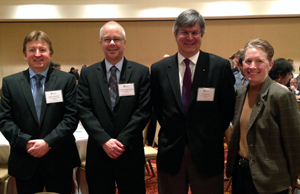
New AAAS Fellows Honored
Laboratory Fellow Nigel Browning, Associate Laboratory Director for National Security Anthony Peurrung, Associate Laboratory Director for Fundamental & Computational Sciences Douglas Ray, and Associate Laboratory Director for Environmental Molecular Sciences Allison Campbell (left to right) were inducted as Fellows of the American Association for the Advancement of Science at the 2013 AAAS meeting in Boston. Learn more about our newest AAAS Fellows.
February 2013
L. Ruby Leung Quoted in Science
Dr. L. Ruby Leung, atmospheric scientist at Pacific Northwest National Laboratory, was quoted in a Science magazine News & Analysis article about global and regional modeling. The article describes a recent study by climate modelers to gauge the effectiveness of regional models to predict regional change. Leung, a world-renowned leader in regional climate modeling, is co-principal investigator of the North American Regional Climate Change Assessment Program, which recently evaluated temperature and precipitation results from six regional climate models over a 30-year period.
February 2013
Jim Fredrickson Quoted in Science News
Pacific Northwest National Laboratory Fellow Jim Fredrickson was quoted in the February 3 issue of
February 2013
Ben Kravitz Quoted in The Chronicle of Higher Education
Dr. Ben Kravitz, atmospheric postdoctoral researcher at Pacific Northwest National Laboratory, was quoted in "As Temperatures Keep Rising, Geoengineering Gets a Closer Look" published in the January 28th edition of The Chronicle of Higher Education. The Chronicle is a publication for college and university faculty members and administrators. Kravitz was sought after for his expertise on the impacts of climate engineering techniques. The article features the topic of geoengineering, including Kravitz's comment regarding the use of iron sulfate to grow phytoplankton in the Pacific Ocean. This research has implications for climate warming.
February 2013
Evgueni Kassianov Aerosol Research Featured in Eos Research Spotlight
Dr. Evgueni Kassianov, atmospheric scientist at Pacific Northwest National Laboratory, was lead author on a publication chosen for a January 15 Eos "Research Spotlight." Eos, a newsletter for members of the American Geophysical Union, highlights selected new research from all of the AGU journals. The spotlight features Kassianov's research published in the journal Geophysical Research Letters, concerning the unexpected role of large, "coarse-mode" aerosols in relatively clear-sky conditions. The research has implications for calculating the effects of these sunlight-scattering particles on the Earth's energy budget. For more on this research, see "Invisible Giants in the Sky"
January 2013
2012
Yuehe Lin Quoted in Chemistry World
Dr. Yuehe Lin, Pacific Northwest National Laboratory, was quoted in the November 13 issue of Chemistry World, the print and online magazine of the Royal Society of Chemistry. The article, "Detecting Cancer Cells and Parasites" discussed the research of Jaime Castillo-León and colleagues from the Technical University of Denmark who designed a new sensor that may aid in cancer research, among other applications. The sensor acts to detect cells that over-express folate receptors. Lin, whose expertise is biomedical diagnosis commented on the research and was optimistic regarding the potential of this sensor for use in detecting both diseases in which cells over-express folate receptors and, eventually, for other biomarkers as well.
November 2012
Dan DuBois Quoted in ScienceNow
Dr. Dan DuBois of Pacific Northwest National Laboratory was quoted on Nov. 8, 2012, in ScienceNow, published by the American Assocation for the Advancement of Science. The article, "A Wet Way to Better Burning," discussed a new catalyst recently developed by chemists at the University of Rochester that uses the energy in sunlight to generate hydrogen gas. DuBois commented on this contribution and remarked favorably on the durability of the new catalyst.
November 2012
Johannes Lercher Honored by Honeywell's UOP, LLC
Dr. Johannes Lercher, Director of the Institute for Integrated Catalysis at Pacific Northwest National Laboratory, was honored at the Vladimir Haensel Honeywell UOP Inaugural Invitational Lecture in Catalysis. This event recognized Lercher’s work in the global refining and petrochemical industries. Lercher presented the lecture, "Catalytic Alkane Activation and Catalytic Transformation" at Honeywell’s UOP Research Center in Des Plaines, Illinois. This lecture series is expected to occur annually.
November 2012
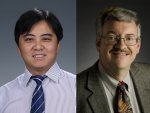
Tianbiao Liu and Morris Bullock Featured in Physics Today
The work of Pacific Northwest National Laboratory (PNNL) scientists, Dr. Tianbiao Liu and Dr. R. Morris Bullock was featured in the September 21 issue of Physics Today. The article was written by Rachel Berkowitz and titled "Plant-inspired Catalysts Smooth the Path to Cleaner Energy." It discussed research being conducted by Liu and Bullock at the Center for Molecular Electrocatalysis at PNNL, an Energy Frontier Research Center (EFRC) funded by Department of Energy. The focus of this work is to gain an understanding of how hydrogenase reactions function so that scientists will be able to design iron-based fuel cell catalysts that will perform the role of platinum at a much lower cost. This research is made possible through the efforts of the team members Shentan Chen, Molly O'Hagan, Mary Rakowski DuBois and Dan DuBois.
October 2012
Steve Smith, Laboratory Equipment's Scientist of the Week
Dr. Steven Smith, Pacific Northwest National Laboratory, was featured as Scientist of the Week by Laboratory Equipment, a print and online publication for laboratory researchers. Smith was chosen for his recent research that investigated the implications of solar radiation management, a technique that some have proposed for mitigating effects of climate change. See PNNL research highlight, Dimming the Sun's Light.
October 2012
James Amonette in Climate Central
Dr. James Amonette, Pacific Northwest National Laboratory, was quoted in a September 18 article in Climate Central, an online publication that communicates the science and effects of climate change. The article, "Biochar's Potential to Help Is Rich, but Hurdles Remain," discusses the applications of biochar and explained that there is a need for funding this type of research. Biochar is a charcoal formed from biomass, such as wood, rice straw or cornstalks, by pyrolysis, a process of that involves heating in the absence of oxygen. When the resulting material is added to soil, it degrades extremely slowly and can improve several soil properties that affect plant growth. As a result, biochar has the potential to both sequester carbon and help with soil fertility, especially in the tropics where soils are typically quite acidic.
September 2012
Smith and Rodland on Proteomics in Science
Pacific Northwest National Laboratory Director of Proteomics Dr. Richard (Dick) D. Smith and Dr. Karin Rodland, Director of Biological Separations and Mass Spectrometry were quoted in a feature on Life Science Technologies in the August 31 issue of Science magazine. "Panning the Proteome for Biomarker Gold." The article features proteomics work being done by nine scientific institutions around the world to find biomarkers for cancer and other diseases.
September 2012
Science's "Editor's Choice" Highlights Research
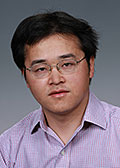
Dr. Minghuai Wang
Dr. Minghuai Wang, atmospheric scientist at Pacific Northwest National Laboratory, was lead author on a publication featured as an editor's choice highlight in the journal Science on September 7. The article, titled "Constraints from Above," describes the research to develop a new metric from satellite-derived measurements showing how current climate models overestimate aerosol effects on the amount of cloud. The research was performed by an esteemed team of scientists led by Wang including Drs. Steven Ghan, Xiaohong Liu, Kai Zhang, Mikhail Ovchinnikov, Richard Easter, Duli Chand and Yun Qian at PNNL; Dr. Tristan L'Ecuyer of University of Wisconsin; Dr. Hugh Morrison of NCAR; Dr. Roger T. Marchand of University of Washington; and Dr. Joyce E. Penner of University of Michigan. See also, "How to Catch Aerosols in the Act."
September 2012
Phil Rasch Quoted in Seattle Post-Intelligencer on Cloud Brightening
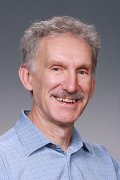
Dr. Phil Rasch
Dr. Philip Rasch, Pacific Northwest National Laboratory, was quoted in an article about new research exploring a way to counteract some features of climate change. The article, published in the Seattle PI online newspaper, details research by a team of scientists, including Rasch, about a concept called marine-cloud brightening, that would increase cloud cover over the ocean to reflect sunlight away from the Earth. Rasch is chief scientist for atmospheric sciences at PNNL and a prominent researcher in the area of geoengineering, which looks at ways to alter the atmosphere to mitigate some effects of global warming. The research was published in the Philosophical Transactions of the Royal Society A in September.
Dilip Ganguly in Nature as Community Choice Selection
Dr. Dilip Ganguly, Pacific Northwest National Laboratory, was mentioned in a Nature community choice article "Aerosols Keep Down Monsoon Rain" on August 1. Ganguly led a research team at PNNL that found local and remote sources of pollution effectively reduce the summer monsoon rainfall over South Asia. Nature's Community Choice articles feature "the most viewed papers in science." The Nature article also notes that Ganguly's publication was in the most highly read for all American Geophysical Union journals for the week of July 23. The publication has ranked in the top tier of "most popular journal articles" in Journal of Geophysical Research since July 23. See "Pollution Weakens Monsoon's Might."
August 2012
Morris Bullock Quoted in National Academy of Science Workshop Report
Dr. Morris Bullock, Director the Center for Molecular Electrocatalysis at Pacific Northwest National Laboratory, was quoted in The Role of the Chemical Sciences in Finding Alternatives to Critical Resources: A Workshop Summary. Bullock spoke at the 2011 workshop on the need to develop catalysts based on earth-abundant metals, creating catalysts that can replace those based on noble metals. Bullock is quoted in the workshop report, which was published by the National Academy of Science through the Chemical Sciences Roundtable.
July 2012
Tony Janetos, Climate Expert on Fox Television
Dr. Anthony C. Janetos, Pacific Northwest National Laboratory, was interviewed by the Fox television Washington, D.C., affiliate on July 6, 2012, as an expert on global climate change. Janetos, who directs the Joint Global Change Research Institute, a partnership between PNNL and the University of Maryland, commented about this summer's heat wave and extreme storm event in the Washington, D.C., area. Janetos said that recent heat waves are on top of a long-term pattern of rising regional temperatures, in effect making them more noticeable. View the video telecast.
July 2012
Tony Janetos, Seattle Science Festival 2012
Dr. Anthony C. Janetos, Pacific Northwest National Laboratory, was a featured speaker at the 2012 Seattle Science Festival in June. Janetos, who directs the Joint Global Change Research Institute, a partnership between PNNL and the University of Maryland, talked about the difficulty of balancing the growing global needs for energy and food with the realities of rapid changes in the atmosphere and climate. Janetos presented how the scientific community uses both observations and models to understand societal changes, understanding the potential consequences of those choices and the urgency of the problems. View video of the presentation (beginning at 1:04:54).
June 2012
Karin Rodland interviewed by ProteoMonitor, KONA Radio
GenomeWeb's ProteoMonitor and KONA Radio ![]() interviewed Pacific Northwest National Laboratory Fellow and cancer biologist Karin Rodland about a collaborative study on triple-negative breast cancer research. PNNL, Walter Reed Medical Center, and Windber Research Institute are teaming on a 20-month, $8.6-million project for the Department of Defense. Learn more, PNNL News Center.
interviewed Pacific Northwest National Laboratory Fellow and cancer biologist Karin Rodland about a collaborative study on triple-negative breast cancer research. PNNL, Walter Reed Medical Center, and Windber Research Institute are teaming on a 20-month, $8.6-million project for the Department of Defense. Learn more, PNNL News Center.
May 2012
Todd Schaef and Casie Davidson featured on NBC Local News
Todd Schaef and Casie Davidson, scientists at Pacific Northwest National Laboratory, were interviewed for an NBC Local News story regarding the use of underground basalt rock for the storage of carbon dioxide gases, aired May 22. The story described how scientists at Pacific Northwest National Laboratory are researching local basalt formations as an option for controlling greenhouse gas emissions. Their research involves injecting liquid CO2 into porous basalt formations which over time will combine to eventually form a solid carbonate mineral that will remained buried forever. This process could go a long way toward mitigating global climate change. May 2012
Chuck Peden and Darrell Herling, C&E News
Pacific Northwest National Laboratory's extensive research on new methods for controlling emissions from fuel efficient "lean-burn" vehicles was featured in Mitch Jacoby's cover story in the May 21 issue of Chemical and Engineering News. The article described considerable recent advances in catalytic converters. Dr. Chuck Peden was quoted on the subject of copper-chabazite catalysts for the selective catalytic reduction of harmful nitrogen oxides. Two captioned images of Peden and Dr. Darrell Herling were included in the article; one photo showing Peden and Herling comparing new and used diesel particulate filters, and the other photo featuring them conducting catalytic emission control tests on a diesel-fueled engine. May 2012
Doug Ray interviewed on "How on Earth"
Dr. Doug Ray, Associate Laboratory Director at Pacific Northwest National Laboratory, was interviewed for the radio program "How on Earth," produced by Jim Pullen of Boulder, CO. "How on Earth ![]() " is a half-hour weekly show that discusses current topics in science. The May 1, 2012, show focused on climate engineering options for addressing carbon dioxide emissions to curb the resulting climate change. Ray stressed that there are many unanswered questions and that there is a critical need for more research into potential solutions to reduce the levels of carbon dioxide in the atmosphere. May 2012
" is a half-hour weekly show that discusses current topics in science. The May 1, 2012, show focused on climate engineering options for addressing carbon dioxide emissions to curb the resulting climate change. Ray stressed that there are many unanswered questions and that there is a critical need for more research into potential solutions to reduce the levels of carbon dioxide in the atmosphere. May 2012
Doug Ray Quoted in a Story About the Future of Energy
Doug Ray, Associate Laboratory Director for the Fundamental & Computational Sciences Directorate at Pacific Northwest National Laboratory, was quoted in an article titled "The Future of Energy: There is No Silver Bullet on April 16, 2012. Ray was quoted during a panel discussion at the University of Colorado Boulder at the 64th annual Conference on World Affairs. He expressed that further encouraging the development of a national carbon policy, such as a carbon cap and trade or a carbon tax system, could be a good way to transition to an energy system that is much cleaner than the one we currently have. April 2012
Monte Helm featured in NewScientist
The work of Pacific Northwest National Laboratory's scientist, Dr. Monte Helm and his team was featured in the cover story of the April 16 issue of NewScientist (subscription required). The article described the challenges of artificial photosynthesis and discussed various options for catalysts. Monte and his team developed a new catalyst that uses nickel and discovered that it worked much faster than the hydrogenase found in nature, which utilizes two atoms of iron to stir up the electrons. While Helm's concept has not been actually used in a photosynthetic system, it shows promise due in part to nickel's abundance and cost-effectiveness. The research was originally featured in Science, vol 333, p 863. April 2012
Julia Laskin in Chemical & Engineering News
Dr. Julia Laskin, Pacific Northwest National Laboratory, was featured in the April 16, 2012, issue of Chemical & Engineering News. The article discusses a new award, now being given annually by the Women Chemists Committee of the American Chemical Society at their annual spring meeting. The "Rising Star Award" honors female chemists at the midpoint of their careers and aims to recognize and retain women in the field of chemistry. Ten women, representing a diverse range of chemistry specialties, were honored at this initial presentation. Laskin was selected for this award in deference to her work in gas-phase ion chemistry and mass spectrometry of complex molecules. April 2012
Tony Janetos Testifies on Climate Variability and Change
Dr. Anthony C. Janetos gave testimony on the impacts of rising sea levels on domestic infrastructures to the U.S. Senate Committee on Energy and Natural Resources in Washington, D.C. on April 19, 2012. Read "Vulnerability of Energy Infrastructure to Sea-Level Rise and Climate Variability and Change or hear a webcast of the testimony by Janetos and the other four panelists. April 2012
Chongmin Wang and Fei Gao in Chemical and Engineering News
The research of Drs. Chongmin Wang and Fei Gao of Pacific Northwest National Laboratory was highlighted and quoted in the March 26, 2012, issue of Chemical and Engineering News. The article, "Watching Battery Anodes In Action" discussed chemical and physical changes Wang, Gao, and their team observed when viewing a silicon-carbon anode in a nano-sized lithium-ion battery while it was being charged and discharged. The eventual aim of this research is to increase the charge capacity of lithium-ion batteries by replacing the carbon anodes with a silicon-carbon nanocomposite. April 2012
Richard Moss in NJSpotlight, Energy & Environment News
Dr. Richard Moss of Pacific Northwest National Laboratory was quoted in an article titled "Weather Report: Wild with a Chance of Record Heat, Precipitation" in the March 29, 2012, edition of NJSpotlight's Energy & Environment News. Moss was quoted during a Rutgers University symposium titled "Extreme Weather and Climate Change: How can we address uncertainty?" He commented that the evidence to link changes in the frequency and intensity of tropical storms to human-caused climate change is not yet solid. Moss is a scientist working at the Joint Global Change Research Institute, a partnership between PNNL and the University of Maryland. April 2012
Tony Janetos, Expert for "Climate Science 101"
Dr. Anthony C. Janetos of Pacific Northwest National Laboratory explains the impacts of climate change in "Climate Science 101," a short course series recently released online. Janetos was instrumental in designing the course, sponsored by Osher Lifelong Learning Institute at George Mason University, and the National Oceanic and Atmospheric Administration (NOAA). In the presentation, Janetos explains the evidence of climate impacts on the U.S. economy, the environment, and our use of natural resources. Janetos is Director of the Joint Global Change Research Institute, a partnership between PNNL and the University of Maryland. The presentation and short-course videos are now available on the NOAA ClimateWatch website. March 2012
John Cort in Chemical & Engineering News
The chemical forensics work of Pacific Northwest National Laboratory Fundamental and national security scientists appear in the February 6 cover story of Chemical & Engineering News, "Tracing a Threat." The article, which includes quotes from Dr. John Cort, Dr. Carlos Fraga, Dr. David Wunschel, and Dr. Helen Kreuzer explores the world of chemical forensic research and the scientific advances being made to link chemical weapons to their source, history, and maker. This work is sponsored by the Science and Technology Directorate of the U.S. Department of Homeland Security. February 2012
Jun Liu in Chemical and Engineering News
Dr. Jun Liu, Pacific Northwest National Laboratory, was quoted in an article titled "Nanoparticle Catalysts that Rest on Graphene" in the February 3 issue of Chemical & Engineering News, a weekly magazine published by the American Chemical Society. This publication covers science and technology, business and industry, as well as government and policy aspects of the chemistry field. In this article, Liu commented on work done a Brown University. He spoke to the problems associated with polymer-electrolyte-membrane fuel cells and some of the challenges moving forward. February 2012
Tony Janetos, Weather and Climate Summit

Tony Janetos participated in a climate change panel discussion at the 2012 Glen Gerberg Weather and Climate Summit.
Dr. Anthony C. Janetos, Pacific Northwest National Laboratory, was a featured speaker at the 2012 Glen Gerberg Weather and Climate Summit in January. The event gathered television weathercasters, meteorologists and leading climate researchers in the U.S. and Canada for education and information exchange. Janetos, Director of the Joint Global Climate Research Institute, was a featured speaker at the summit and also part of a climate change panel discussion with Ms. Eileen Shea of the U.S. National Oceanic and Atmospheric Administration and Dr. John Furlow of the United States Agency for International Development. View presentations and panel discussions on the StormCenter YouTube channel.
January 2012
Chuck Long and John Shilling in Atmospheric Measurement Laboratory News Video
Drs. Chuck Long and John Shilling of Pacific Northwest National Laboratory explained about the complex mixing of chemicals in the atmosphere through a KNDU/KNDO-TV news report that aired on January 24. The report also featured the Atmospheric Measurement Lab's Environmental Chamber where scientists study formation of tiny chemical particles under conditions similar to those found in the atmosphere. This "atmosphere in a box" is a one-of-a-kind testing instrument at PNNL, and is helping researchers advance the science on aerosols, tiny bits of smoke, soot, and chemicals in the air that affect climate change. View the minute-plus video here.
January 2012
2011
Tony Janetos, Nature
Dr. Anthony C. Janetos, Pacific Northwest National Laboratory, was quoted in an opinion article published in Nature about the necessity to promote the value of science during challenging budget times. Janetos, who directs the Joint Global Change Research Institute, a partnership between PNNL and the University of Maryland, commented on the difficulties faced by research scientists who pursue participation in public policy discussions.
December 2011
Jie Xiao, Talking Points Memo
Dr. Jie Xiao, Pacific Northwest National Laboratory, is quoted in "How graphene is helping to build a better electric car battery," which appears in Talking Points Memo, an online news organization that provides breaking news for the politically engaged. Xiao talks about her team's latest research into lithium-air batteries. By using a new form of graphene, the PNNL and Princeton University team achieved the highest energy storage capacity to date: 15,000 milliamp hours per gram.
December 2011
Tristram West, Nature Climate Change
Dr. Tristram O. West, Pacific Northwest National Laboratory, wrote an analysis published in the November 2011 issue of Nature Climate Change titled "Mitigation: Monitoring Informs Management." West, a research scientist at the Joint Global Change Research Institute, a partnership between PNNL and the University of Maryland, analyzed methods to monitor greenhouse gas emissions from crops.
December 2011
Jerome Fast Receives AGU Editors' Citation
Dr. Jerome Fast, Pacific Northwest National Laboratory, received an American Geophysical Union 2010 journals editors' citation for excellence in refereeing. The editors' citation recognizes a special contribution to AGU. Fast, an atmospheric scientist, was commended for consistently providing constructive and thoughtful reviews for the journal JGR-Atmospheres. November 2011
Dan DuBois, Science
Dr. Dan DuBois, Pacific Northwest National Laboratory, is quoted in Robert F Service's article, "Turning over a New Leaf" in the November 18, 2011 issue of Science Magazine. The article discussed different approaches to artificial photosynthesis and the difficulties in splitting water as effectively as plants do in natural photosynthesis. The article describes the challenge of turning electricity from the sun into fuel in an efficient and cost-competitive manner. November 2011
Chuck Peden and Johnathan Holladay in Chemistry & Industry Magazine
Dr. Chuck Peden and Dr. Johnathan Holladay, Pacific Northwest National Laboratory, were quoted in an article titled "Catalysing biomass conversion" in Chemistry & Industry Magazine, published by the Society of Chemical Industry. Holladay talks about the catalysts needed and provides comparisons to the fossil fuel industry. Peden discusses the use of advanced imaging technologies and computational modeling tools to help speed the science behind developing highly effective catalysts for turning biomass into fuels. November 2011
Jun Liu, Chemical and Engineering News
In the November 21, 2011 issue of Chemical and Engineering News, Pacific Northwest National Laboratory's Dr. Jun Liu's and Dr. Jiguang Zhang's team were discussed and quoted by Mitch Jacoby in the story, "Graphene Moves toward Applications." The article referenced PNNL's work in the energy storage arena, specifically discussing a procedure to convert graphene sheets into a new material, which is pictured on the cover of the issue. The new material was used to create new electrode materials for lithium-ion batteries and lithium-air battery with exceptionally high specific storage capacity. November 2011
Jim Dooley, Elizabeth Malone, International Journal of Greenhouse Gas Control
Jim Dooley, Dr. Elizabeth Malone, and Dr. Judith Bradbury (retired) of Pacific Northwest National Laboratory have responded to a rebuttal article concerning their research, to be published in the 2012 Volume 6, Issue 1 of the International Journal of Greenhouse Gas Control. Their original article, "Moving from misinformation derived from public attitude surveys on carbon dioxide capture and storage towards realistic stakeholder involvement," published in the same journal in 2010, was a sharp critique of public surveys both as a tool to gauge public opinion and as a method to inform public policy for carbon capture and storage technologies. Although complimentary of the researchers' rebuttal study, Dooley and Malone maintain that surveys producing pseudo opinions add no value to the literature or to stakeholder involvement efforts. They maintain that dialog about the complex issues involved in CCS is a better strategy for stakeholder involvement and more likely to increase acceptance of new technologies.
Dr. Sotiris Xantheas Work Highlighted in Chemistry World
The work of Dr. Sotiris Xantheas, Pacific Northwest National Laboratory, and team members from Heriot-Watt University, was highlighted in the September 23, 2011, issue of the Royal Society of Chemistry's Chemistry World. The article discussed the team's groundbreaking study of the NH4 (ammonium hydroxide) radical to determine its proper place on the electronegativity scale compared to alkali metals. Electron attraction and repulsion determine how atoms and pseudo-atoms, such as the NH4 radical, behave in different environments. This study provides scientists with the information they need to better predict, manipulate and control those behaviors, whether in batteries for solar farms or catalysts for bio-fuel production September 2011
Rahul Zaveri Featured in Experts Video
Dr. Rahul Zaveri of Pacific Northwest National Laboratory is featured in a new video on PNNL's YouTube channel. Zaveri, a chemical engineer and research scientist, is one of the PNNL's topic experts in a segment titled "The Evolution of Pollution." In the video, Zaveri explains the effects of air pollution on climate change and the unsolved mysteries of increased atmospheric particles produced from the interaction between urban pollution and naturally-occurring hydrocarbon compounds.
Kevin Rosso and Carolyn Pearce, USA Today
Dr. Carolyn Pearce and Dr. Kevin Rosso, Pacific Northwest National Lab, appeared in photos that accompanied an article in USA Today, November 2011. The article is titled "Economy, lack of engineers could hinder U.S. innovation." In the article, Pearce and Rosso's work analyzing mineral samples from a nuclear reprocessing area is mentioned in the caption.
Morris Bullock in Chemical and Engineering News
R. Morris Bullock of Pacific Northwest National Laboratory discussed research carried out at PNNL in an article in C&E News on reducing the nation's reliance on precious metals and rare earths. Precious metals such as platinum are used as catalysts in fuel cells and other applications, and are vital to the nation's energy infrastructure. High costs and low abundance of precious metals, coupled with geo-political concerns over available supplies, have led to research on abundant, inexpensive metals that can be used instead of precious metals. Alternatives to these and more efficient use of these rare elements were the topics of a two-day National Academy of Sciences workshop. Bullock, Director of the Center for Molecular Electrocatalysis, gave an invited talk at the workshop.
Daniel DuBois Quoted in Science and Wired
In October, Daniel DuBois was quoted in Science and Wired about two advances in turning sunlight's energy into chemical fuels. DuBois cautions that issues still remain to be solved, including speed and efficiency. He also notes that the research provides good examples for others striving to end the nation's reliance on fossil fuels.
Jay Grate and Matt O'Hara Quoted in Chemical & Engineering News
The great diversity of elements and complex sample matrix in nuclear waste presents tough challenges to those developing process monitoring methods for waste pretreatment before vitrification, according to Dr. Jay Grate in Chemical & Engineering News. Grate, a materials and analytical chemist at Pacific Northwest National Laboratory, and his colleagues are solving issues around technetium in stored nuclear waste and in groundwater. Technetium is a radioactive element that has high mobility in the environment and a long half-life. The team developed a device designed to quickly pull technetium from nuclear waste process streams, separate it, and rapidly quantify it, providing near-real time analysis results. The article also discusses work by PNNL's Matthew O'Hara and his colleagues. His team is building sensors for autonomous monitoring of radionuclide levels in Hanford Site groundwater plumes. The technology could also aid in groundwater cleanup by monitoring technetium removal in a pump and treat process.
Ram Devanathan in ASCR Discovery
In ASCR Discovery, Pacific Northwest National Laboratory's Ram Devanathan discusses the need for integrating experimental and computational research to resolve the scientific challenges of energy systems, including battery research. The feature story draws on Devanathan's expertise in materials science and conducting computational simulations at different length and time scales.
Morris Bullock Discusses Catalysis Research with BBC, C&E News
In August, Morris Bullock was interviewed by two prestigious news sources regarding a super-fast catalyst that makes hydrogen. The research, conducted by the Center for Molecular Electrocatalysis and directed by Bullock, was recently published in Science and has been garnering media interest. Bullock was interviewed on the BBC's Naked Scientist show. In addition, this research was featured in Chemical & Engineering News, Chemistry World, Green Car Congress, and other publications.
Justin Teeguarden in Forbes, Wall Street Journal
In articles in Forbes and the August 8 Wall Street Journal opinion page, Pacific Northwest National Laboratory toxicologist Dr. Justin Teeguarden was quoted and referenced about the toxicity of bisphenol-A (BPA), an organic compound used in plastics and resins. Teeguarden led a recently published toxicological study BPA that appeared in Toxicological Sciences. The American Council on Science and Health, SmartBrief, and the Plastics News covered the Forbes story.
Chuck Peden quoted in C&E News
In the August 1 issue of Chemical & Engineering News, Pacific Northwest National Laboratory's Chuck Peden is quoted in "Single Atoms Mediate Research." The article by Mitch Jacoby discusses a new wet-chemistry method that can be used to prepare catalysts with isolated platinum atoms on a metal oxide. Peden, Associate Director of the Institute for Integrated Catalysis, is quoted as an outside expert.
Chuck Peden Quoted in Innovations
In the current issue of Innovations magazine, Dr. Chuck Peden of Pacific Northwest National Laboratory's Institute for Integrated Catalysis is quoted extensively in an article titled "Catalysts—Humans and Otherwise." The article discusses catalysis capabilities and expertise at the Department of Energy's EMSL, a national scientific user facility.
Wendy Shaw Featured in DOE Blog
Dr. Wendy Shaw, at Pacific Northwest National Laboratory, was featured on the Department of Energy's Energy Blog. In the article, titled "10 Questions for Biophysical Chemist," Shaw discusses her catalysis and bio-mineralization research, the value of good communication skills, and why Ayla, in Jean Auel's prehistoric novels, is her favorite fictional scientist. Shaw works in the Center for Molecular Electrocatalysis, a DOE Energy Frontier Research Center.
Kerstin Kleese van Dam featured in HPC Source Article
PNNL's Kerstin Kleese van Dam was featured in the HPC Source article "Taming Big Data with Remote 3-D Viz." The article highlights PNNL's scientific data management work supporting the Laboratory's Chemical Imaging Initiative. Kleese van Dam manages the Scientific Data Management group in the Computational Sciences & Mathematics Division.
Greg Schenter Featured in DOE Blog
Dr. Greg Schenter, a chemical theorist at Pacific Northwest National Laboratory, was featured on the Department of Energy's Energy Blog. In the article, titled "10 Questions for a Chemical Theorist," Schenter discusses how he came to his profession, his inspirations, his work, and why Doctor Who is his favorite fictional scientist. Schenter works in the Chemical and Materials Sciences Division at PNNL.
Greg Kimmel quoted in Science
Dr. Greg Kimmel, a Pacific Northwest National Laboratory physicist with extensive expertise in water's behavior, is quoted in the April 8 issue of Science. The quote appears in "Ice is predicted to be weirder still," a news focus on theoretical work into the formation of quasicrystalline ice, which lacks the repeatable patterns seen in ordinary crystals. Kimmel's opinions were sought on how to experimentally produce quasicrystalline ice.
Kerstin Kleese van Dam featured in DOE Pulse
A profile of PNNL's Kerstin Kleese van Dam was featured in the March 21 issue of DOE Pulse. In the article "PNNL's Kleese van Dam makes sense of the data landscape" she discusses PNNL's scientific data management research and the Laboratory's new Chemical Imaging Initiative. Kleese van Dam manages the Scientific Data Management group in the Computational Sciences & Mathematics Division.
Bruce Garrett quoted in Chemical & Engineering News
In "Turning the Corner," an article about the job market for chemists in the western United States, Dr. Bruce Garrett, Director of Pacific Northwest National Laboratory's Chemical & Materials Sciences Division, is quoted several times. Garrett discusses the need for chemists to take on the challenges to move the nation away from fossil fuels. The article appears in the March 21, 2011, issue of Chemical & Engineering News.
Karin Rodland featured in BioTechniques
Pacific Northwest National Laboratory Fellow Dr. Karin Rodland was featured in an article in the February 4 issue of BioTechniques. "Winning a grant in 12 pages or less" gives advice to researchers advice on applying for National Institutes of Health grants. Rodland is PNNL's Department of Health and Human Services Sector Manager.
Bruce Garrett's research highlighted in Chemical & Engineering News
Research by a team of scientists including Dr. Bruce Garrett, a Royal Society of Chemistry Fellow and theoretical chemist, was highlighted in the January 31, 2011, issue of Chemical & Engineering News. The one-paragraph concentrate discusses a study, published in Science, that uses muons to create light and heavy hydrogen mimics, elucidating the kinetic isotope effect.
2010
Scott Chambers interviewed in Nature Materials
Dr. Scott Chambers, a AAAS Fellow and a epitaxial oxide films expert at Pacific Northwest National Laboratory, was extensively interviewed for an article titled "Is it really intrinsic ferromagnetism?" The article appeared in the December 2010 focus issue of Nature Materials.
Jim Amonette quoted in Biomass on biochar
Jim Amonette was quoted in two articles in Biomass. In "Beyond the Hype," Amonette discussed sustainable biochar to mitigate global climate change. In "A New Climate Change Mitigation Tool," he was about the International Biochar Initiative's examination of the fine-grained, highly porous charcoal.
Bill Morgan quoted in the LA Times on medical screening radiation exposure risks
Dr. Bill Morgan, Director of Radiation Biology and Biophysics at Pacific Northwest National Laboratory, was interviewed by the LA Times in an article that appeared October 11. See "Benefits of diagnostic radiation outweigh the dangers."
Paul Runci on renewable energy in The Wall Street Journal
Dr. Paul Runci, Senior Scientist at Joint Global Change Research Institute (JGCRI), was quoted in a special section on Germany in The Wall Street Journal online news. The article focused on renewable energy as an economic growth driver for Germany, which is a familiar topic in Runci's research. JGCRI is a unique partnership between PNNL and the University of Maryland.
Justin Teeguarden on nanoparticles in Nature News
Justin Teeguarden, Biological Monitoring & Modeling, was quoted in Nature News, the online news section of Nature magazine. He was interviewed for an article on nanoparticle use in drug delivery.
Jim Amonette on biochar in the New York Times
Jim Amonette's research on biochar was published in the New York Times on September 7, 2010. The article is titled "Once-Lowly Charcoal Emerges as 'Major Tool' for Curbing Carbon."
Jim Amonette on biochar in the Tri-City Herald
Jim Amonette's research on biochar was published in an article on August 16, 2010, in his hometown newspaper, the Tri-City Herald.
Critics question carbon storage study
USA Today referenced a PNNL study from the Joint Global Change Research Institute (JGCRI) that highlighted "deeply flawed assumptions" in an article published in the 27 June 2010 issue of Nature Geosciences. The JGCRI study explained how the article overstated the impacts associated with society using carbon dioxide capture and storage.
Liem Dang's water research discussed in C&E News
Theoretical research by Dr. Liem Dang was mentioned in an article on water chemistry in the July 12, 2010, issue of Chemical & Engineering News. Dang's computational simulations show that hydroxide ions move toward the surface of water.
Dick Kouzes discusses helium-3 shortage in Physics Today
Dr. Richard T. Kouzes, a Laboratory Fellow at Pacific Northwest National Laboratory working in the areas of neutrino science, homeland security, non-proliferation, and computational applications, was cited in "DOE begins rationing helium-3" in Physics Today, June 2010.
Rick Zangar discusses novel biomarker detection technology in Nature Biotechnology
Dr. Rick Zangar, Pacific Northwest National Laboratory was interviewed about the potential impact of a novel technology described in a Nature Biotechnology article. The technology platform dealt with a single-molecule ELISA for detection of low-abundance biomarkers. The article was published by The Science-Business eXchange, a translational science weekly that is produced in part by the Nature Publishing Group.
Dick Smith quoted about spinal fluid protein studies
Multiple news outlets mentioned Battelle Fellow Dr. Richard Smith in a story about unique proteins found in spinal fluid in collaboration with the University of Medicine and Dentistry of New Jersey. The story appeared on Medical News Today, News-Medical Net, Med-India, and Newswise.
Chenghong Lei, Jun Liu interviewed about anti-cancer drugs in silica
Drs. Chenghong Lei and Jun Liu, Pacific Northwest National Laboratory, were quoted in a feature on UPI.com’s Science News May 25. The article describes their study to package anti-cancer drugs in chemically modified silica particles.
Research Highlight: Silica Cages Help Anti-Cancer Antibodies Kill Tumors in Mice
Chuck Peden quoted in USA Today on catalysts
Dr. Chuck Peden was quoted as an outside expert in a story on a new catalytic converter material that was published in Science.
Brian Thrall talks about assessing the hazards of nanoparticles with C&E News
In the March 29 issue of Chemical and Engineering News, Pacific Northwest National Laboratory's Brian Thrall discussed the toxicity of particles that are measured on the nanometer scale. He discusses the value of a systems-level approach to identify and, better, predict the hazards of different nanomaterials.
Jiwen Fan's cloud research reaches Australia
Jiwen Fan's research on storm clouds continues to get international attention. Read about her work in Cosmos, Australia's #1 science media brand.
Karin Rodland and Steve Wiley on NIH grant application changes
Laboratory Fellows Karin Rodland and Steven Wiley were quoted in the article "NIH reviewers praise new rules," published in February's The Scientist. Rodland, who manages the National Institutes of Health business sector at PNNL, and Wiley, chief biologist at EMSL, commented on the NIH's recent change to shortened grant applications.
Richard Moss talks to Nature
In a Feb.11 interview with Nature, PNNL's Richard Moss discussed his recent Nature article "Climate research: the next generation" and his thoughts on the IPCC.
Steve Ghan and Chuck Long discuss weather vs. climate

In a Feb. 15 interview with KNDU, Steve Ghan and Chuck Long discuss weather vs. climate, addressing questions regarding how record snowfall back East does not relate to global warming.
Dick Smith on Immune Responses to Flu Viruses
Dick Smith was interviewed for the article "The Pandemic Puzzle," to be published in the NCRR Reporter, the quarterly magazine of the National Institutes of Health's National Center for Research Resources. He and University of Washington collaborator Michael Katze are investigating immune responses to the H1N1 ("swine flu") and H5N1 ("bird flu) viruses.
Phil Rasch testifies on climate change geoengineering
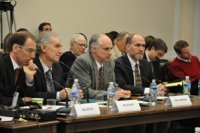
Dr. Phil Rasch (second from left)
Dr. Phil Rasch gave testimony on climate change geoengineering to the U.S. House of Representative Committee on Science and Technology in Washington, D.C. on February 4, 2010. He spoke to the Subcommittee on Energy and Environment during a hearing entitled, "Geoengineering II: The Scientific Basis and Engineering Challenges." View the printed testimony or hear a webcast of the testimony by from Rasch and the other panelists.
Dan DuBois on catalysts
MIT's Technology Review quoted Dan DuBois regarding a recent study done in the Netherlands showing that a cooper-based catalyst could be used in a process to convert carbon dioxide into household chemicals. The article appears in the January 15, 2010 issue.
Jiwen Fan shares climate research in Chinese
Jiwen Fan shared her current research concerning aerosol effects on cloud processes in Mandarin (English translation shown below the clip) at EurekAlert!, an online, global news service operated by AAAS.
2009
Phil Rasch on the need for climate action
As the United Nations Climate Change Conference in Copenhagen gets under way, The Oregonian featured PNNL's Dr. Phil Rasch on the continuing need to reduce greenhouse gas emissions to address rising temperatures. The December 7, 2009 article: "In Climategate's wake, key Northwest scientist Rasch keeps looking skyward."
Jae Edmonds on the economics of carbon caps
The November 24, 2009 issue of USA Today quoted PNNL's Dr. Jae Edmonds in a story leading up to the United Nations Climate Change Conference in Copenhagen in December. The story was about how carbon emission cuts to combat global warming will have an economic impact.
Tony Janetos on the new biology
On YouTube, a National Research Council video features PNNL's Dr. Tony Janetos as one of four experts explaining the significance of a "new biology."
Research Highlight: Not Your Father's Biology
Jim Dooley on energy investments
MIT's Technology Review featured data from Jim Dooley on long-term trends in U.S. venture capital support for energy technologies. The article, "Venture Capitalists Struggle with Renewables," appeared in the September/October 2009 edition.
Chuck Peden, Janos Szanyi, and Ja Hun Kwak on catalysis

Scientists Ja Hun Kwak, Chuck Peden, and Janos Szanyi were mentioned in a Chemical & Engineering News story about Pacific Northwest National Laboratory's research published in Science showing that a common catalyst forms platinum rafts.
Hugh Pitcher on carbon emissions
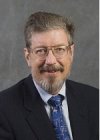
Dr. Hugh Pitcher
USA Today, in its September 22, 2009 issue, quoted PNNL scientist Dr. Hugh Pitcher in the story about the UN Climate Summit, "Deal on climate change is elusive". Pitcher discussed the need to remove carbon dioxide from the atmosphere to keep the earth's temperature from rising more than 3.5 degrees Fahrenheit. The story also included a graphic from the Joint Global Change Research Institute on potential carbon dioxide emission levels through 2060.
James Cowin on the iSniff and Childhood Disease in
Scientific American
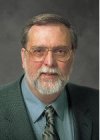
James Cowin
Dr. James Cowin is quoted in the Scientific American on a personal air monitor used to gather data for a long-term study on black carbon soot and childhood asthma.
Jim Amonette on biochar in The Economist
The Economist interviewed PNNL scientist Dr. Jim Amonette on using biochar to remove the greenhouse gas carbon dioxide from the atmosphere and sequester it.
Yun Qian on how air pollution is altering rainfall patterns in China
Numerous news outlets worldwide covered research led by PNNL's Dr. Yun Qian on how pollution is suppressing light rain in China. Decreased rainfall is contributing to economically devastating drought and agricultural production in parts of China. Stories appeared in The New York Times, Los Angeles Times, Nature (including quotes from PNNL's Connor Flynn), New Tang Dynasty Television, China Daily and Peoples' Daily Online, and many other outlets.
Jim Dooley on capturing carbon emissions
The Washington Post worked with PNNL scientist Jim Dooley on a detailed graphic about carbon dioxide capture and storage for a story on August 11, 2009. Dooley was among those credited for the graphic in the hard copy of the article, "Coal's Future Wagered on Carbon Capture."
Jim Dooley on the economics of energy R&D
The July 27, 2009 cover story of Chemical & Engineering News quotes PNNL scientist Jim Dooley in the article, "Building a Sustainable Economy." Dooley spoke about trends in energy-related R&D funding over the years. The article also refers to a research report of Dooley's: "U.S. Federal Investments in Energy R&D: 1961-2008."
Tony Janetos testifies on climate impacts in vulnerable regions

Tony Janetos
On July 23, 2009, Dr. Tony Janetos gave Congressional testimony about how vulnerable regions can use adaptation strategies to cope with current and future climate changes - such as those that affect crops, energy, transportation, and health. He testified before the House Committee on Foreign Affairs and the Subcommittee on Asia, the Pacific, and the Global Environment. For more information, see the PNNL news release and Hearing agenda.
Jim Amonette on Biochar

Dr. Jim Amonette will speak at the first major US biochar conference, which will be held in Boulder, Colo. in August.
Jae Edmonds on Technology to Avert Climate Change
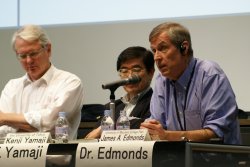
Dr. Jae Edmonds was quoted in a June 17, 2009 New Republic story about whether we need a technological breakthrough to avert the climate crisis. Edmonds said both technology investment and policies to curb emissions are required.
More Information . . .
Lynne Roeder blogs about an aircraft field campaign
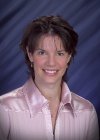
Lynne Roeder
The Discovery Channel asked PNNL's Lynne Roeder, Public Information Officer for the U.S. Department of Energy's ARM Climate Research Facility, to blog about a climate science field campaign in Oklahoma in June 2009.
Tony Janetos on climate effects
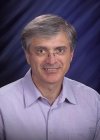
Tony Janetos
Numerous media sources, including The New York Times, AP, and the Washington Post covered a comprehensive new climate assessment that included PNNL's Dr. Tony Janetos as an author. "Global Climate Change Impacts in the United States," a Congressionally mandated report of the U.S. Global Change Research Program, was released June 16, 2009. Janetos wrote the section on climate effects on U.S. ecosystems.
PNNL climate scientists on the soot-snow-climate connection
The New York Times ran a story on May 14, 2009 about how water shortages might create a 21st century Dust Bowl. The story referenced "groundbreaking" research from PNNL on how soot causes snowpack to melt early. More on the research.
Blaine Metting on carbon capture
Blaine Metting, Fundamental & Computational Sciences Directorate, was mentioned in the April issue of Earth magazine, p. 39, in the article, "Capturing Carbon from Coal Plants." "Using proven land management methods, scientists could engineer soils to store more carbon that they would under normal circumstances," according to Blaine Metting of the Pacific Northwest National Laboratory in Richland, Wash., and colleagues. Changing agricultural practices could also make a difference to how much carbon the soils could hold."
Dick Smith on managing a large lab
Dr. Richard Smith, Battelle Fellow and Director of Proteomics Research at PNNL, was interviewed for a feature "A Big Team for a Little Lab" in the March Genome Technology. The article describes how Smith runs his large, successful, renowned proteomics technology lab within DOE's Environmental Molecular Sciences Laboratory located at PNNL.Jim Fredrickson, Alex Beliaev, Dick Smith in The Scientist
Laboratory Fellow Jim Fredrickson, microbiologist Alex Beliaev, and Battelle Fellow Dick Smith were quoted extensively in the March issue of The Scientist in the cover story "All Systems Go." The article covers the systems biology of microorganisms.
Tony Janetos on science and public policy
A 9-minute podcast hosted by the Ecological Society of America features Dr. Tony Janetos on how climate change science informs public policy, in "The Ecologist Goes to Washington: Communicating Climate Change."
Sotiris Xantheas on computational chemistry
Dr. Sotiris Xantheas wrote a "News and Views" article for Nature, February 2009, on computer simulations that provided insight into the dynamics of the Zundel cation, H5O2+, and its deuterated analogs.
Jim Dooley on the economics of slowing global warming
In a story on February 11, 2009, The Christian Science Monitor quoted researcher Jim Dooley on the concept of dumping leftover corn stalks in the ocean to slow global warming. Dooley said economic research shows that crop residue may have a higher societal value in other uses. Dooley is with the Joint Global Change Research Institute, a collaboration of Pacific Northwest National Laboratory and the University of Maryland.
William Gustafson on soot pollution
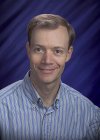
Bill Gustafson
An article in the January 22, 2009 issue of Land Letter quoted Dr. William Gustafson on how soot pollution from vehicles and coal plants is making mountain snowpacks melt earlier, affecting water supplies.
Steve Ghan on climate change
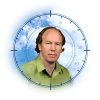
Steve Ghan
Dr. Steve Ghan spoke about a broad range of climate change issues in the Internet radio program "Eco-man and the Skeptic," in January 2009.
Jae Edmonds on reducing carbon emissions
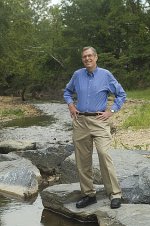
Jae Edmonds
Science Magazine quoted Dr. James Edmonds about the costs of implementing strategies to reduce carbon emissions. Edmonds spoke as part of the Congressional Research and Development Caucus on November 20, 2008 in Washington DC.
Jim Dooley on carbon dioxide capture and storage
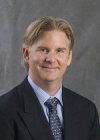
Jim Dooley
Jim Dooley's research on carbon dioxide capture and storage was cited in a Technology Review blog on January 7, 2009. Energy innovation writer Peter Fairley opined on "dispelling carbon captures' scaling myth."
More Information ...
2008
Steve Ghan on geoengineering

Steve Ghan
Dr. Steve Ghan was interviewed for a United Kingdom news publication, "The Independent," in January 2009 in a story on geoengineering. Ghan argues that any geoengineering solution should focus strictly on removing carbon dioxide. "Any other solution is bound to introduce changes in the distribution of radiative heating that would change the climate in undesirable and perhaps unexpected ways," he says.
Phil Rasch on geoengineering
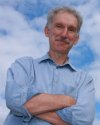
Phil Rasch
Dr. Philip Rasch was quoted in the October 2008 issue of Scientific American in a story about geoengineering. Geoengineering means taking actions to slow or reverse global warming, such as shading the earth from the sun. Weather Underground, a scientist's blog, described Rasch's recent talk on cloud "seeding" with sea salt, using wind-powered ships known as Fletter vessels.
Ruby Leung on abrupt climate change

Ruby Leung
Dr. Ruby Leung was quoted in the January 1, 2009 issue of Popular Science in an article about the U.S. Department of Energy's IMPACTS project. The article, "The Other Big Meltdown," describes the quest to assess how abrupt climate change could be triggered as global warming shifts into high gear.
Justin Teeguarden on nanotechnology risk research strategy
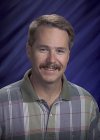
Justin Teeguarden
PNNL senior scientist Dr. Justin Teeguarden is one of the authors of a National Research Council report "Review of the Federal Strategy to Address Environmental, Health, and Safety Research Needs for Engineered Nanoscale Materials." The report, released December 10, received widespread attention because it finds serious weaknesses in the government's plan for research to determine health and environmental risks posed by nanomaterials, which are increasingly being used in consumer goods and industry. The committee outlines what is necessary to frame a successful national strategy. View the National Academies press release and the full report.
Stephen Elbert on energy-efficient data centers
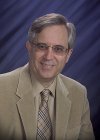
Steven Elbert
The Channel Register, a major online computer trade news publication, quoted PNNL's Dr. Stephen Elbert about the ability of data centers to provide power and cooling for more efficient operation of supercomputers. Power and cooling are significant limitations on scalability for supercomputers. Data centers are currently inefficient.
Elbert, in a presentation he gave at the Supercomputing Conference (SC08), explained that there are plenty of data centers burning 60 to 70 megawatts and a few have already broken through the 100 megawatts barrier. "Beyond that, you have to be your own power company," he said. Elbert, a senior research scientist on the Energy Smart Data Center Project at PNNL, is working with colleagues and collaborators to design computing centers that are more energy efficient.
PNNL scientists front and center in U.S./China energy efficiency agreement
The work of PNNL's Shui Bin and Meredydd Evans in building energy code enforcement in China was the cornerstone of a memorandum of understanding between PNNL and the U.S. State Department announced on December 3, 2008. The two scientists from the Joint Global Change Research Institute will develop an action plan for building energy code enforcement that can be deployed in small and medium-sized cities across China, where half of the world's new construction will occur in the next 10 years. Media coverage of the announcement and associated funding appeared internationally.
For more information, see the PNNL news release.
Zachara and Konopka on Hanford groundwater monitoring wells
The November 1 issue of the American Nuclear Society's Nuclear News quoted Drs. John Zachara and Allan Konopka in an article about the 35 monitoring wells installed this summer in the Hanford Site's 300 Area. These wells are part of an Integrated Field Research Challenge project for the U.S. Department of Energy to help characterize uranium contamination in groundwater.
PNNL Researchers Earned Top Honors at SuperComputing Conference
Congratulations to Pacific Northwest National Laboratory's Scott Dowson, Justin Almquist, Chris Oehmen, Lee Ann McCue, Bobbie-Jo Webb-Robertson, and Jason McDermott for winning this year's SuperComputing (SC08) HPC Analytics Challenge! The Analytics Challenge encourages innovative and sophisticated analysis and visualization techniques in a meaningful application that supports the discovery of knowledge. ...More
Moe Khaleel on computing architectures
Moe Khaleel spoke about computing for accelerating the energy technology development cycle at the Science & Technology Discovery Series on November 11 in Seattle. The series was hosted by the Technology Alliance. The alliance is a statewide organization composed of leaders from Washington state's diverse high-tech businesses and research institutions dedicated to the region's economic success. The talk is titled, "Beyond the Desktop: The role of computational architectures in accelerating discovery."
Fred Brockman on bacterium discovery
The South African and German press quoted Dr. Fred Brockman in several articles on the discovery of the first ecosystem ever found having only a single biological species. Brockman was part of a team led by Lawrence Berkeley National Laboratory that discovered Desulforudis audaxviator in a South African gold mine. Their results were published in the October 10 issue of Science.
Tony Janetos on global change policy
In the American Chemical Society publication Environmental Science & Technology, Dr. Anthony Janetos was quoted about the significance of climate change action plans that various science groups have proposed to the presidential transition team. Janetos directs the Joint Global Change Research Institute, a partnership of PNNL and the University of Maryland.
Liz Malone on the energy and environmental security ecosystem
The Canadian Press quoted Dr. Elizabeth Malone of the Joint Global Change Research Institute in a story about the new Energy and Environmental Security Ecosystem, designed to share intelligence about threats to energy and environmental security. The story played in multiple Canadian media outlets, including The Record and the Metro News.
Ruby Leung on abrupt climate change
The work of Dr. Ruby Leung, a world expert in regional climate modeling, is mentioned in Terra Daily in a feature story on DOE's new program on abrupt climate change. The program brings together six national laboratories to reveal new insights about the causes and effects of rapid and devastating climate change.
Jim Dooley on carbon dioxide capture and storage
Jim Dooley was among the panelists speaking about carbon dioxide capture and storage in a roundtable hosted by Energy Policy TV in July 2008. The televised panel discussion, "Carbon Sequestration: Promise and Reality," focused on the technical and commercial state of carbon dioxide capture and storage, or CCS, and its deployment. Dooley is a widely recognized expert on CCS issues, including serving on the editorial board for the International Journal of Greenhouse Gas Control, the first peer-reviewed journal to focus on CCS technologies.
Chuck Peden on catalysis
The Interim Director of PNNL's Institute for Integrated Catalysis was quoted in Chemical and Engineering News on the work done to enhance catalysts. The research was done by the Dalian Institute of Chemical Physics in China.
Tom Autrey and hydrogen storage
In July 2008, Chemical Science ran an article on hydrogen storage materials, quoting PNNL's Tom Autrey on ammonia borane as one of three sources.
Blaine Metting on producing algae for fuel
Dr. Blaine Metting was quoted in the June 30, 2008 Wall Street Journal article "Scum Power," which discussed the status of turning algae into fuel. Metting is Chair of the International Energy Agency International Network on Biofixation of CO2 and Greenhouse Gas Abatement with Microalgae. Network members collaborate on laboratory and demonstration projects with microalgae aimed at overcoming the biological and engineering challenges associated with truly large-scale production of algal biomass. Past and current projects at PNNL have been supported by DOE-Fossil Energy and the Office of Biological and Environmental Research's Genomics: GTL program.
Tony Janetos on climate change impacts
Dr. Tony Janetos gave testimony on climate change impacts to the U.S. House of Representative Committee on Energy and Commerce in Washington, D.C. on June 26, 2008. He spoke to the Subcommittee on Energy and Air Quality on the subject, "Climate Change: Costs of Inaction," drawing from a recent national assessment that he and others led. Janetos directs the Joint Global Change Research Institute, a partnership of the Pacific Northwest National Laboratory and the University of Maryland. View a webcast or a PDF of the printed testimony from Janetos and the other panelists.
Lai-Sheng Wang on golden superatoms
Research by Dr. Lai-Sheng Wang, a physical chemist at Washington State University and PNNL, and his collaborators on gold buckyballs, a form of superatoms, were featured in Science News on June 6, 2008.
Tony Janetos and Cesar Izaurralde on climate change—
U.S. ecosystems
In May 2008, Dr. Tony Janetos spoke at Congressional briefings and was widely quoted in national and regional media about a new national report on the impacts of climate change on US ecosystems. Janetos was a convening lead author for the report, to which Dr. Cesar Izaurralde, and Allison Thomson also contributed. The report found climate change is already affecting agriculture, water resources, biodiversity, and forests in the US. Among the media sources that interviewed or quoted Janetos were the PBS TV show Lehrer Newshour, The Washington Post, The Chicago Tribune, National Public Radio, Science News, and New Scientist. Izaurralde did interviews in Spanish-language media such as Univision Radio in San Francisco.
James Cowin on chemical transformations in ice
Research by Dr. James Cowin and his team from PNNL and Pennsylvania State University on the pyroelectricity of ice was featured as a brief in the May 1, 2008, issue of Nature. Unlocking the molecular mechanisms responsible for ice generating a voltage in response to changing temperatures provides further insights into the universal solvent: water.
Jae Edmonds on climate stabilization
Jae Edmonds spoke about the science behind carbon mitigation options on April 22, 2008 as part of an invited speaker series hosted by the Princeton Environmental Institute. The talk, "Emissions Mitigation and Climate Stabilization: Inside the Intergovernmental Panel on Climate Change, Science, Policy, and Politics," is available on YouTube and as a podcast on iTunes.
Dan Cziczo on cloud bacteria and weather
Dr. Dan Cziczo, an expert in cloud microphysics, was quoted in a story on atmospheric science and climate in the April 18, 2008, issue of Chemical & Engineering News. The story, "Bacteria in the Clouds," describes how airborne microbes might influence weather.
Jim Dooley on carbon capture and storage
Jim Dooley testified for the U.S. Senate Energy and Natural Resources Advisory committee in a March 31, 2008, briefing on Making Carbon Capture & Sequestration Work: Economics and Critical Issues. See his presentation on issues associated with large-scale deployment of carbon capture and sequestration. Dooley, an expert on carbon-capture issues, was one of 17 Pacific Northwest National Laboratory staff who contributed to the Intergovernmental Panel on Climate Change, which shared the 2007 Nobel Peace Prize with Al Gore.
2007
Doug Ray on catalysis
Doug Ray and two University of California colleagues wrote an opinion piece for The Seattle Times (September 17, 2007) about the importance of catalysis breakthroughs in delivering the next generation of energy and climate solutions.

